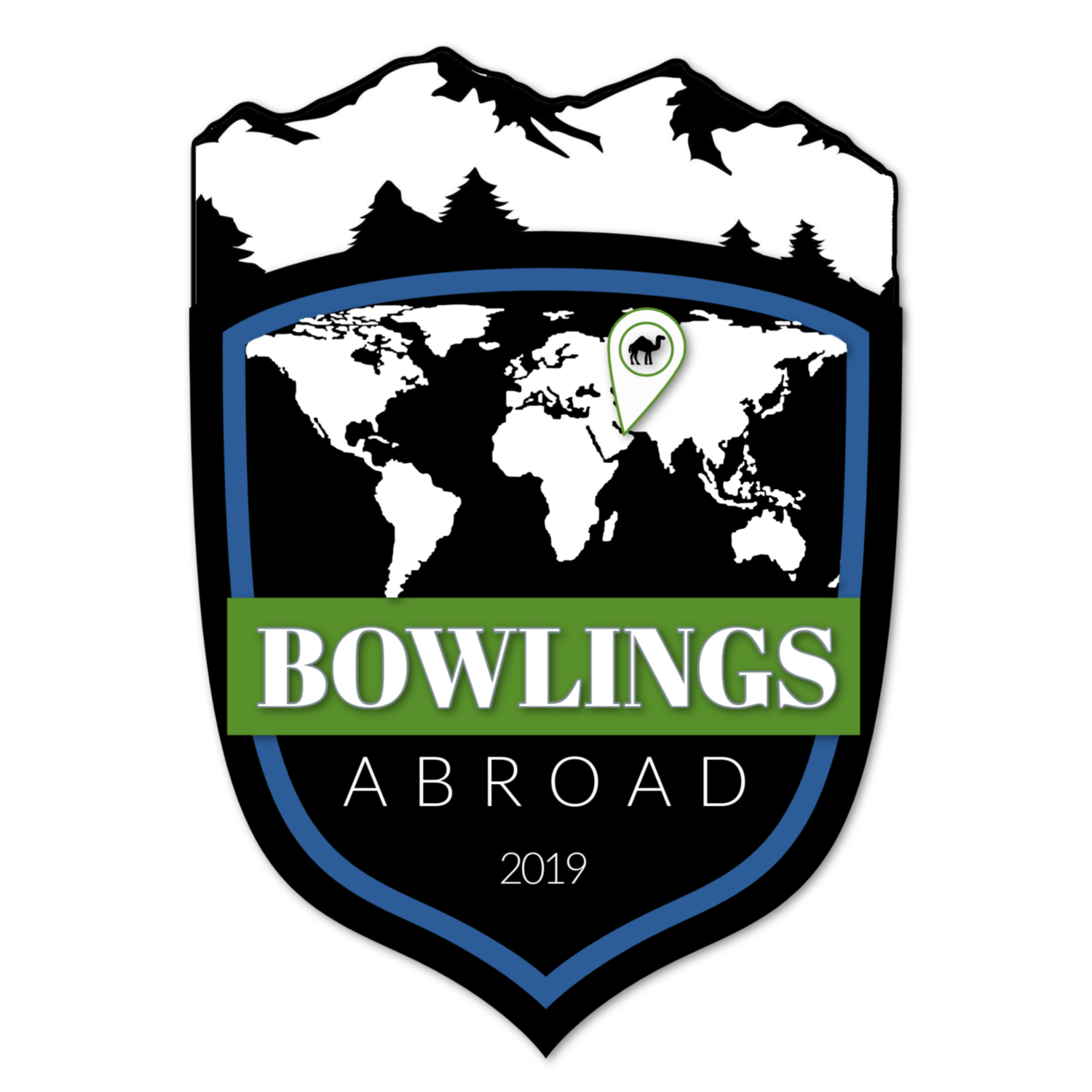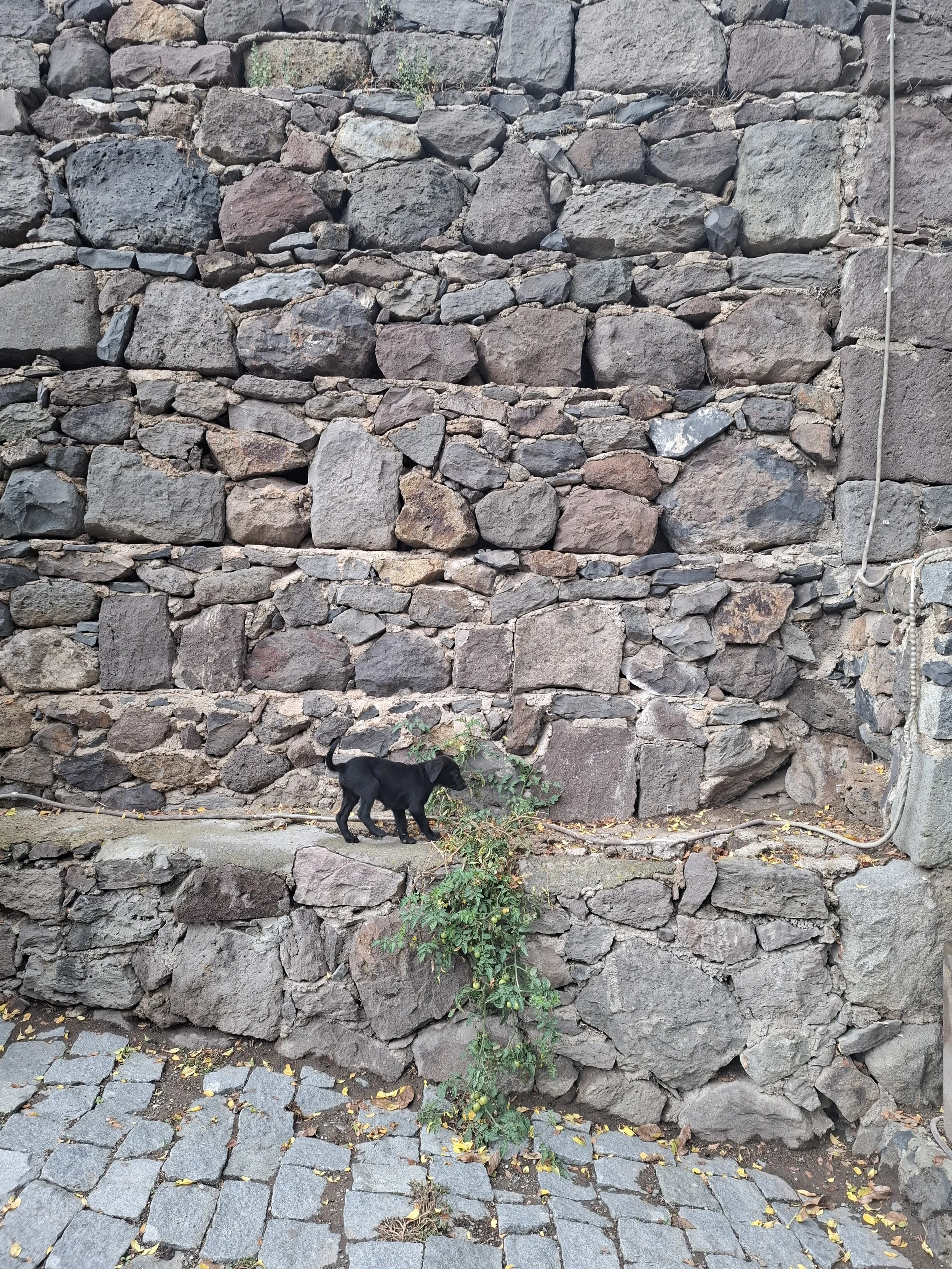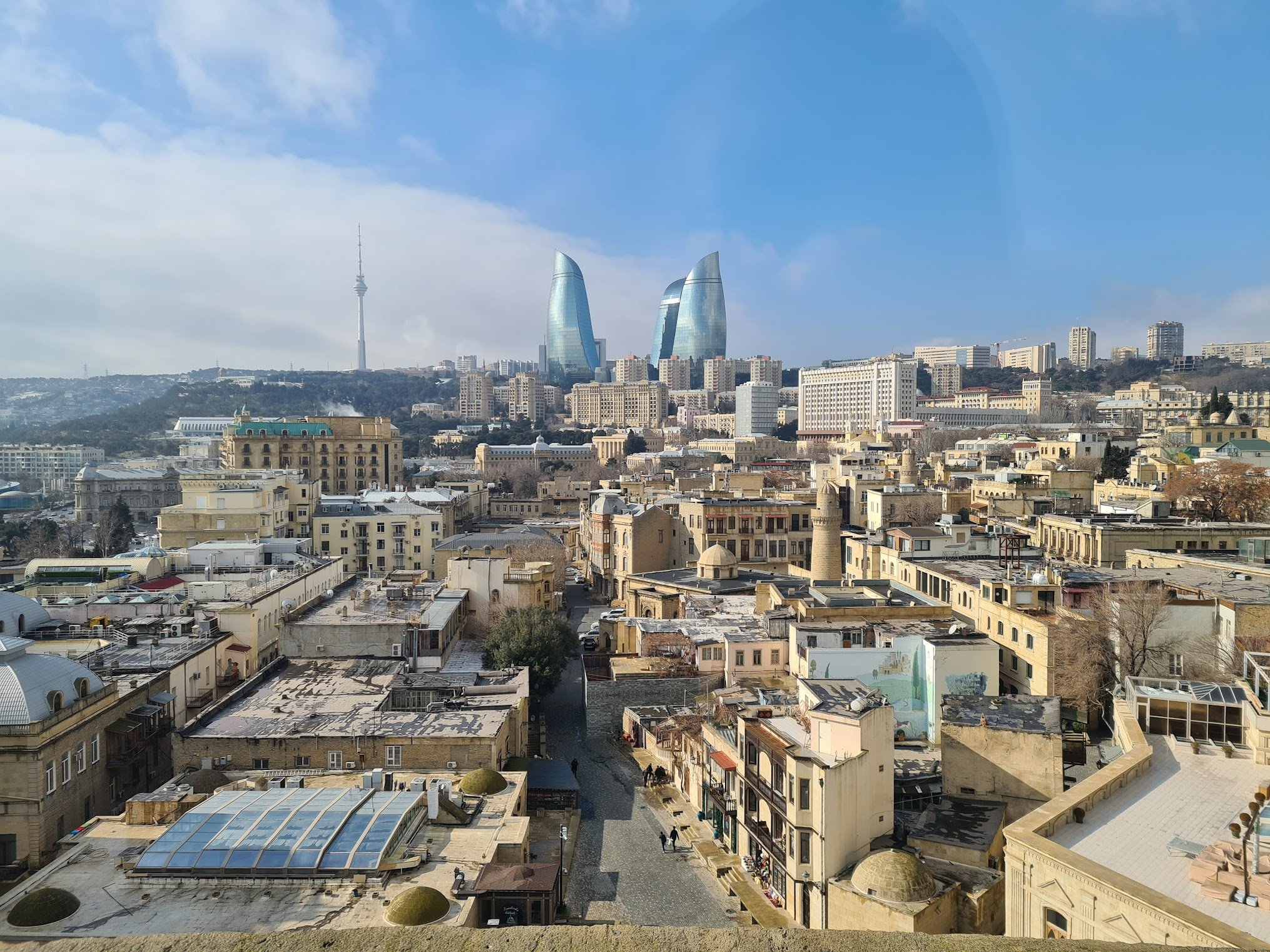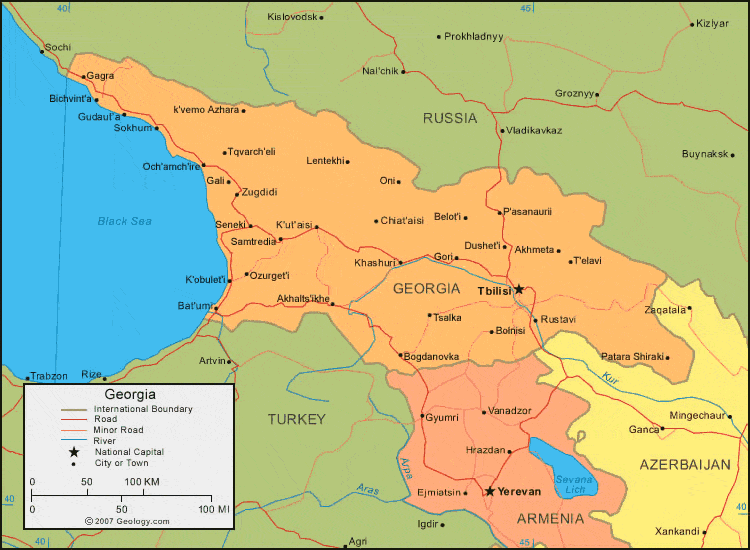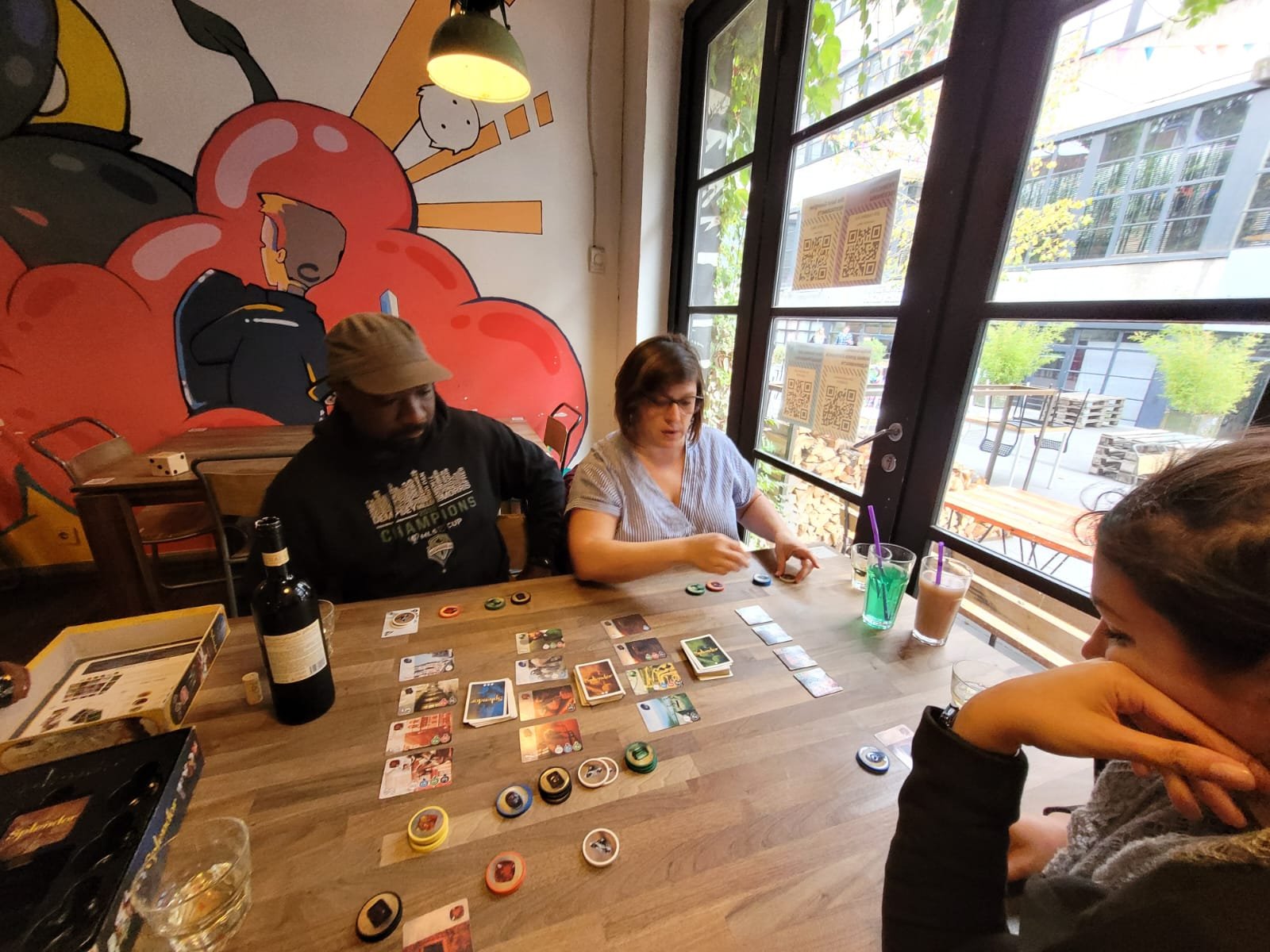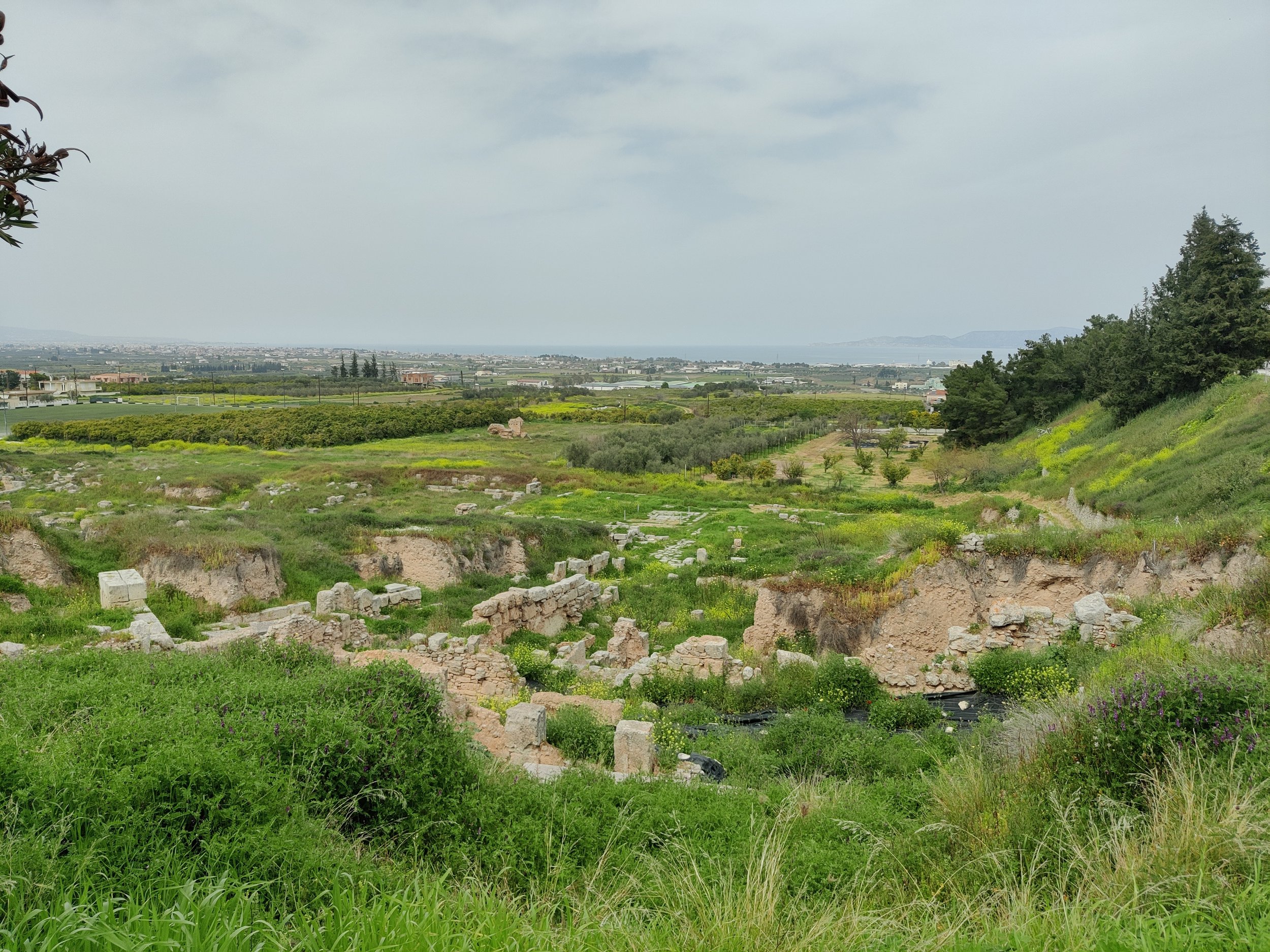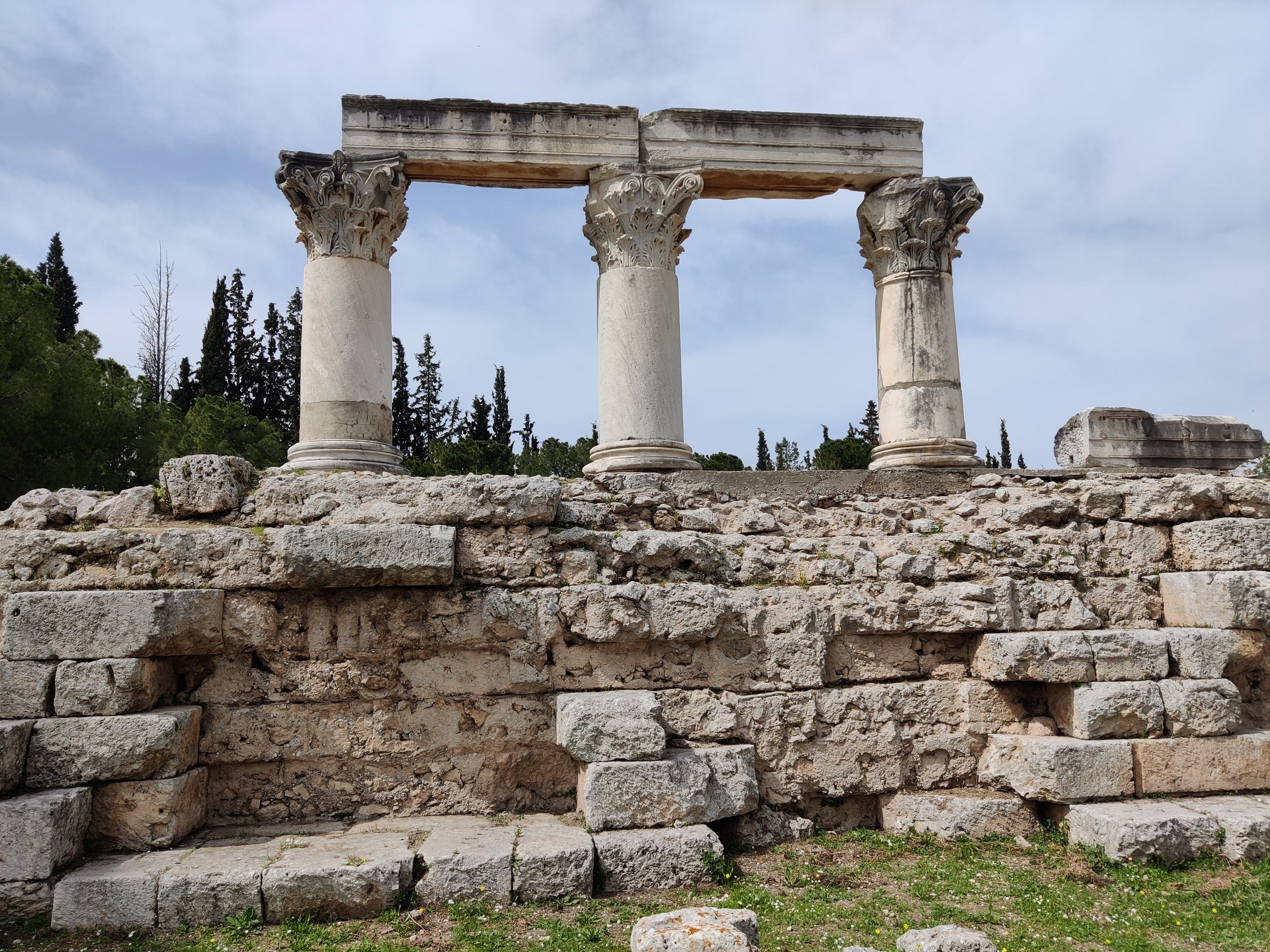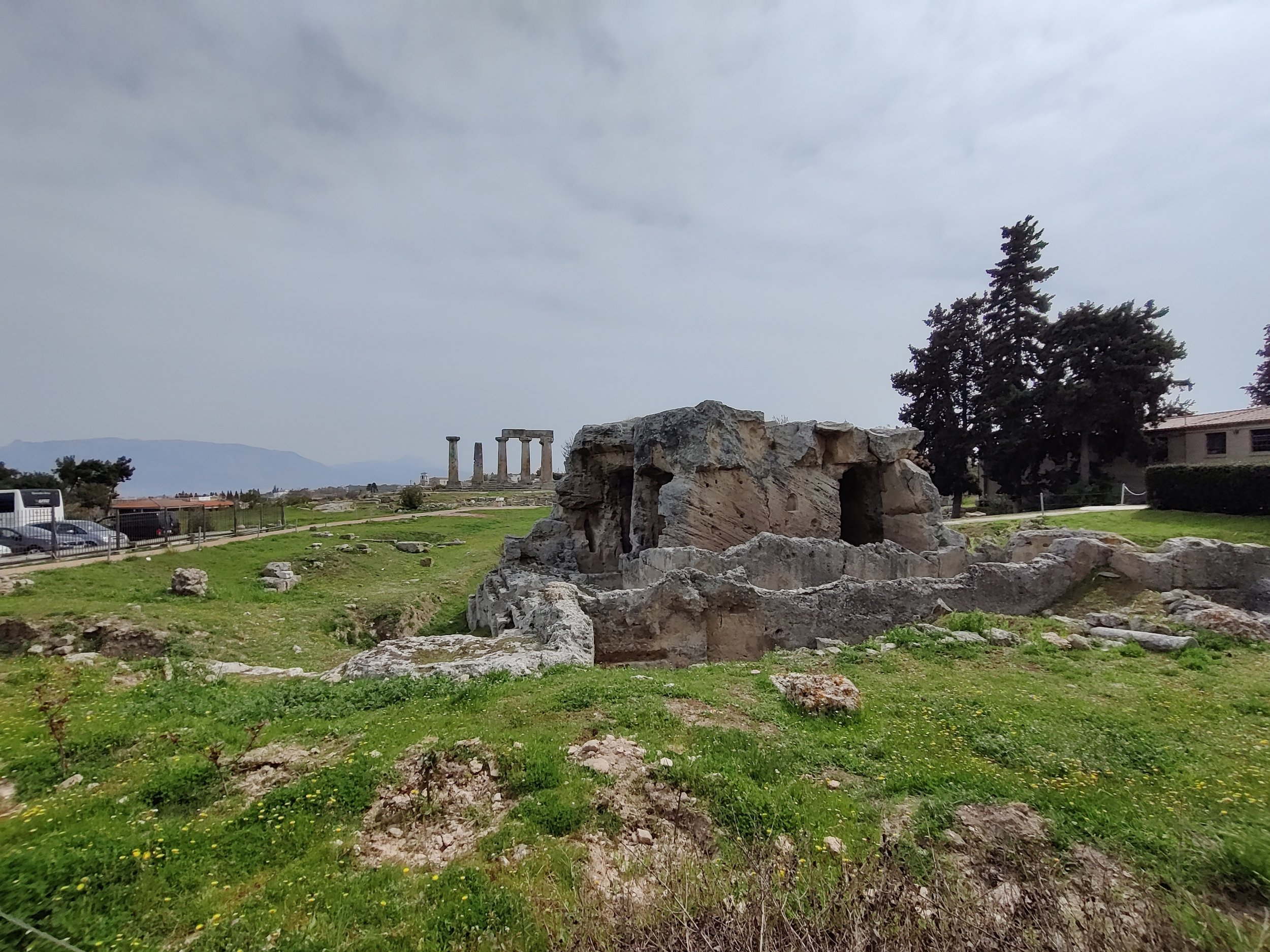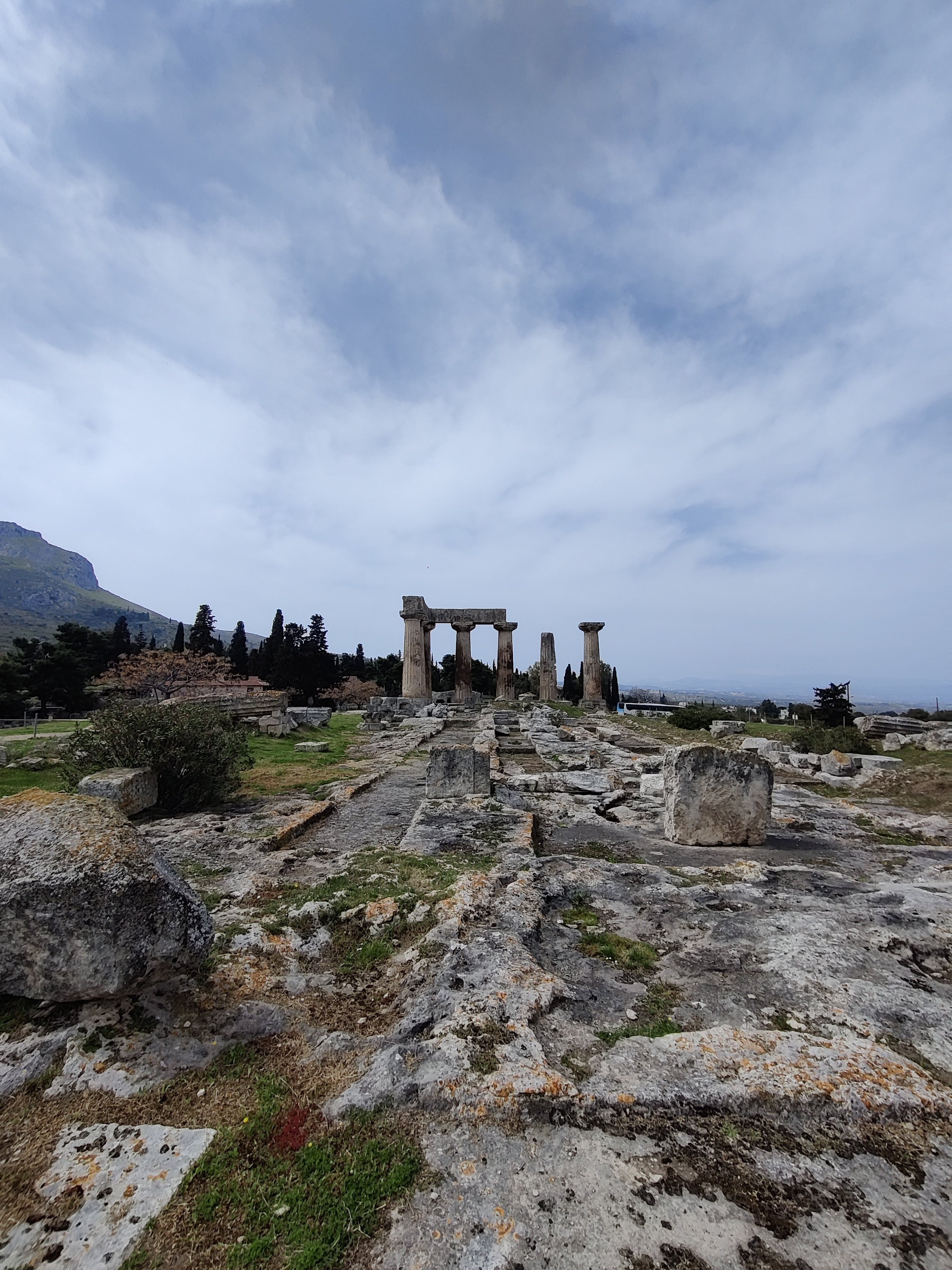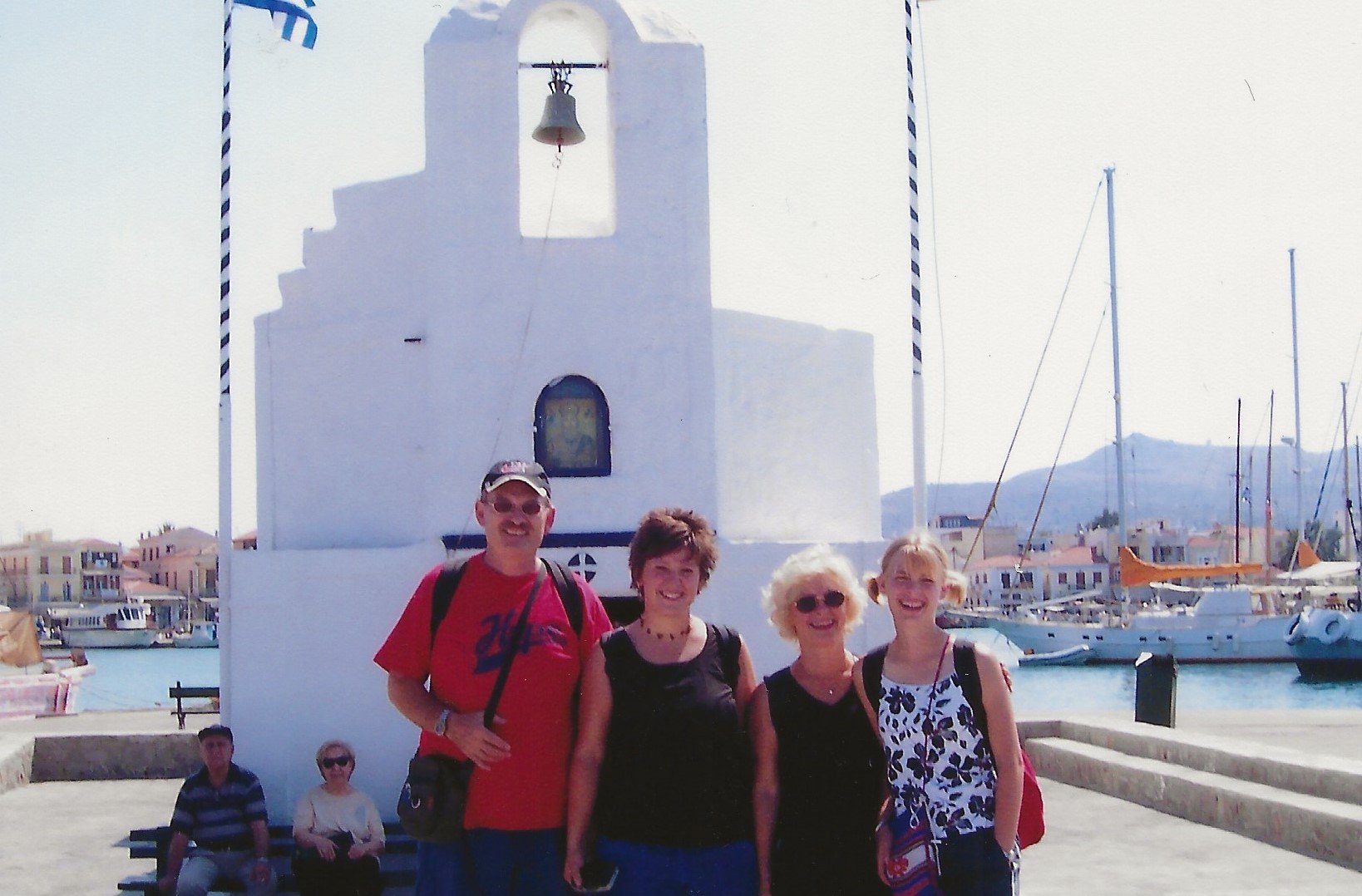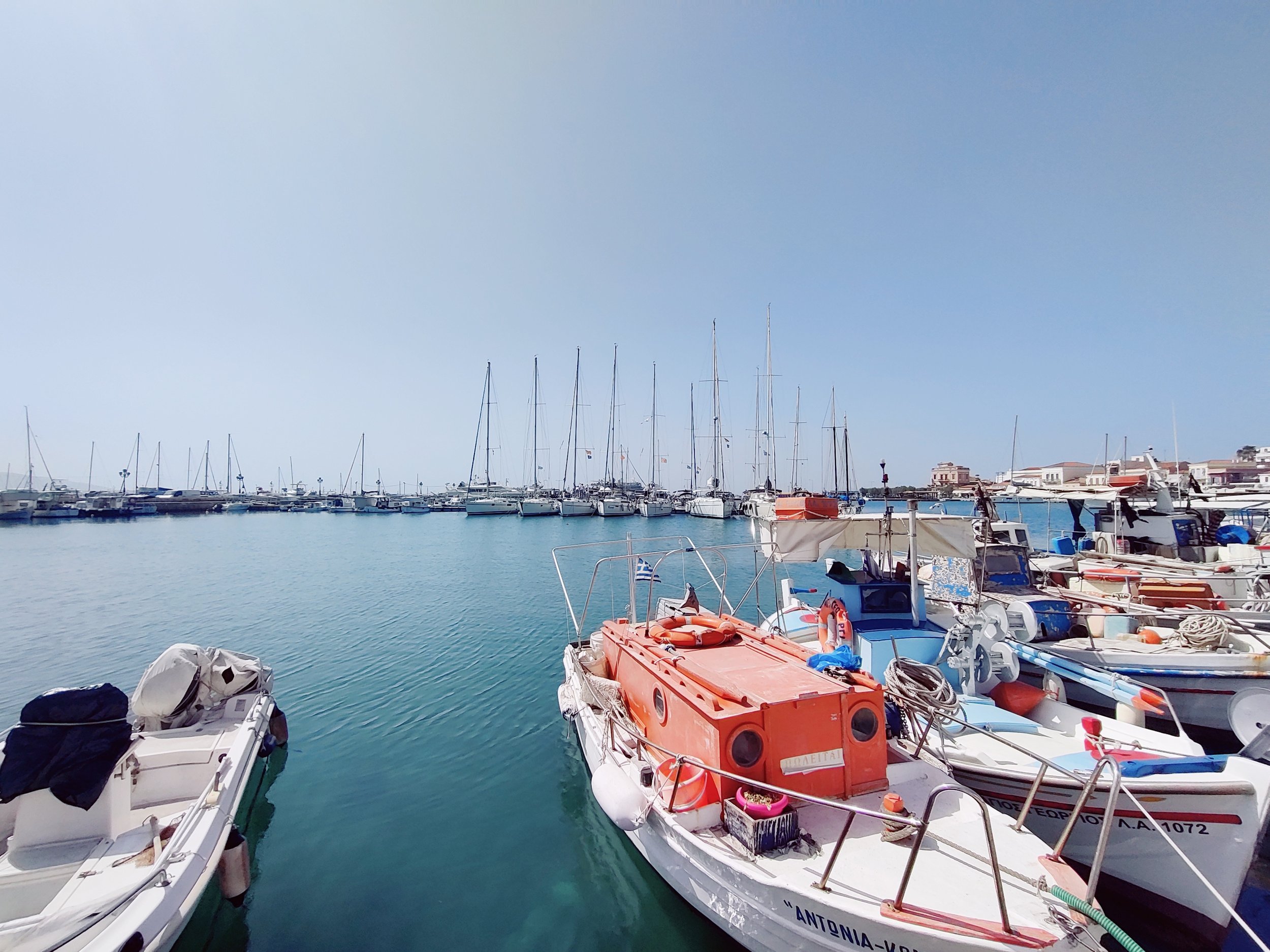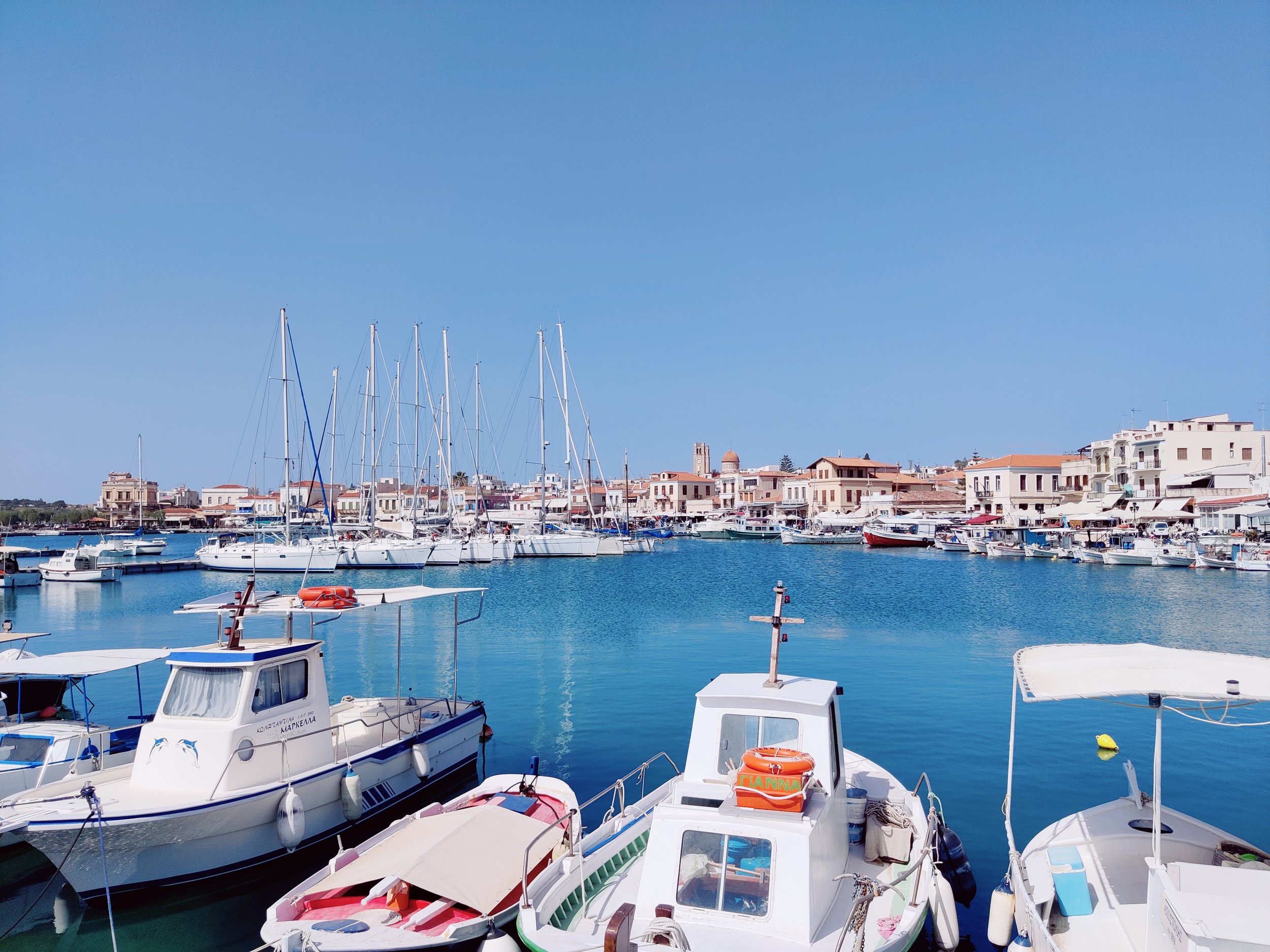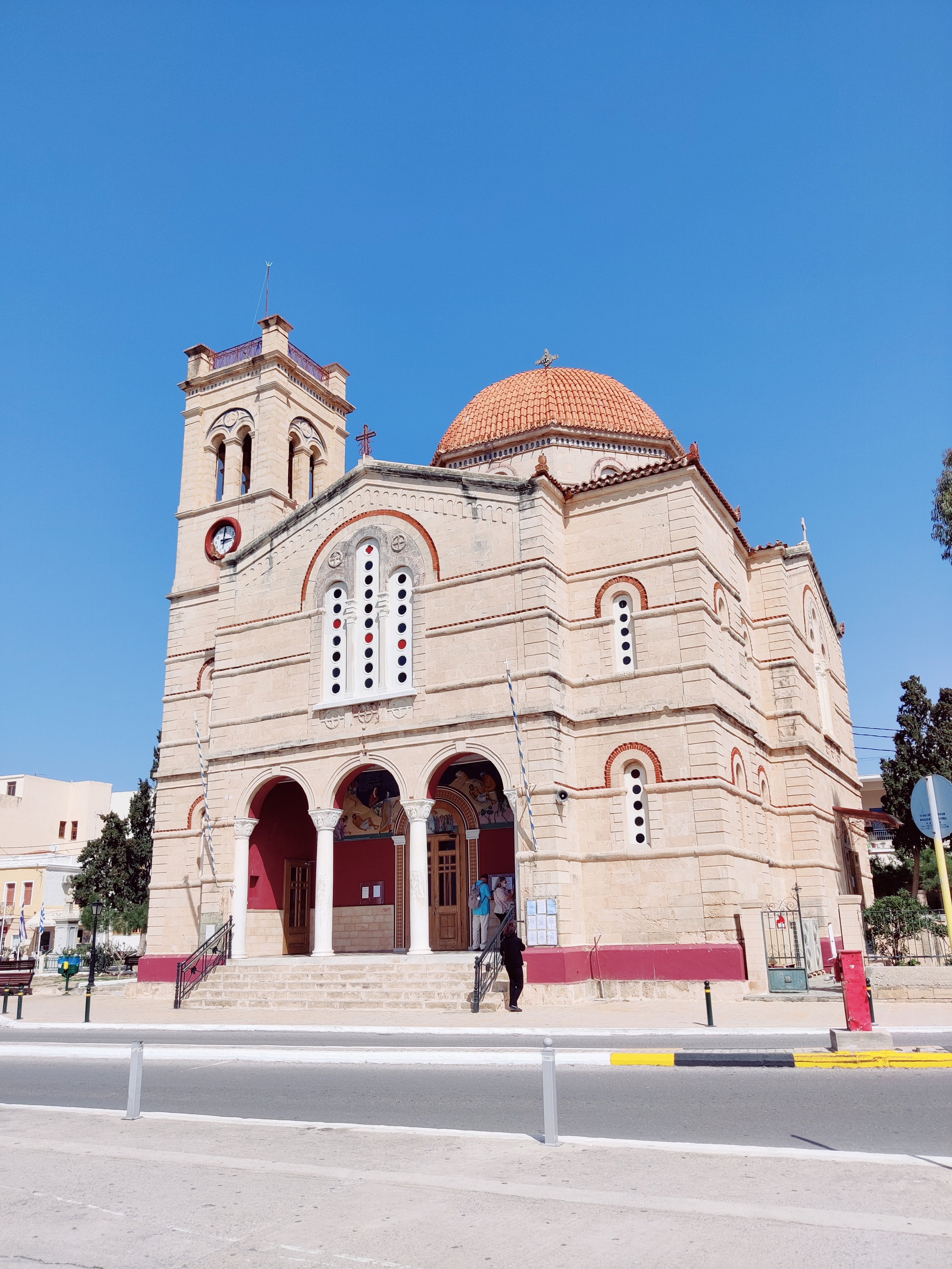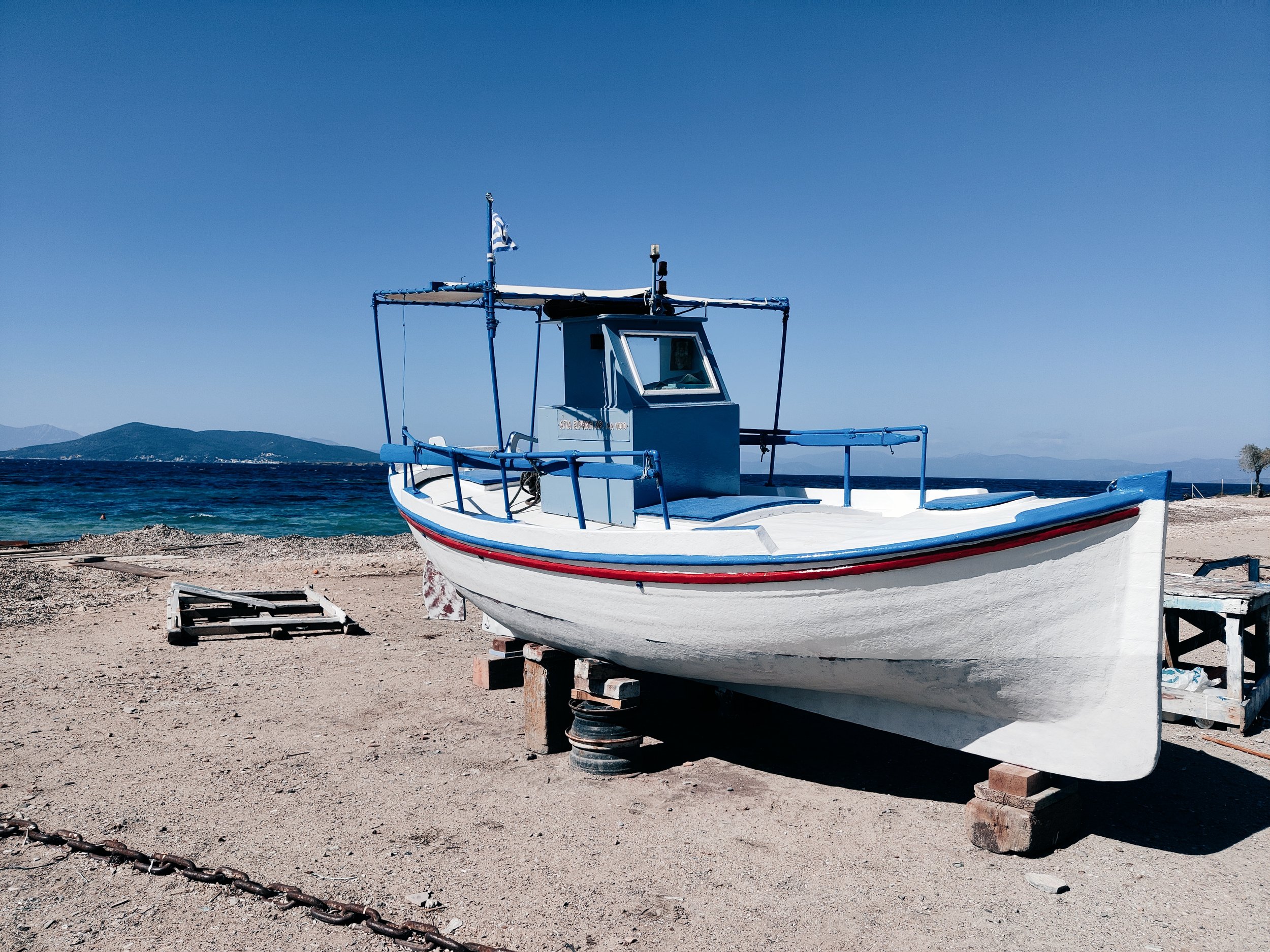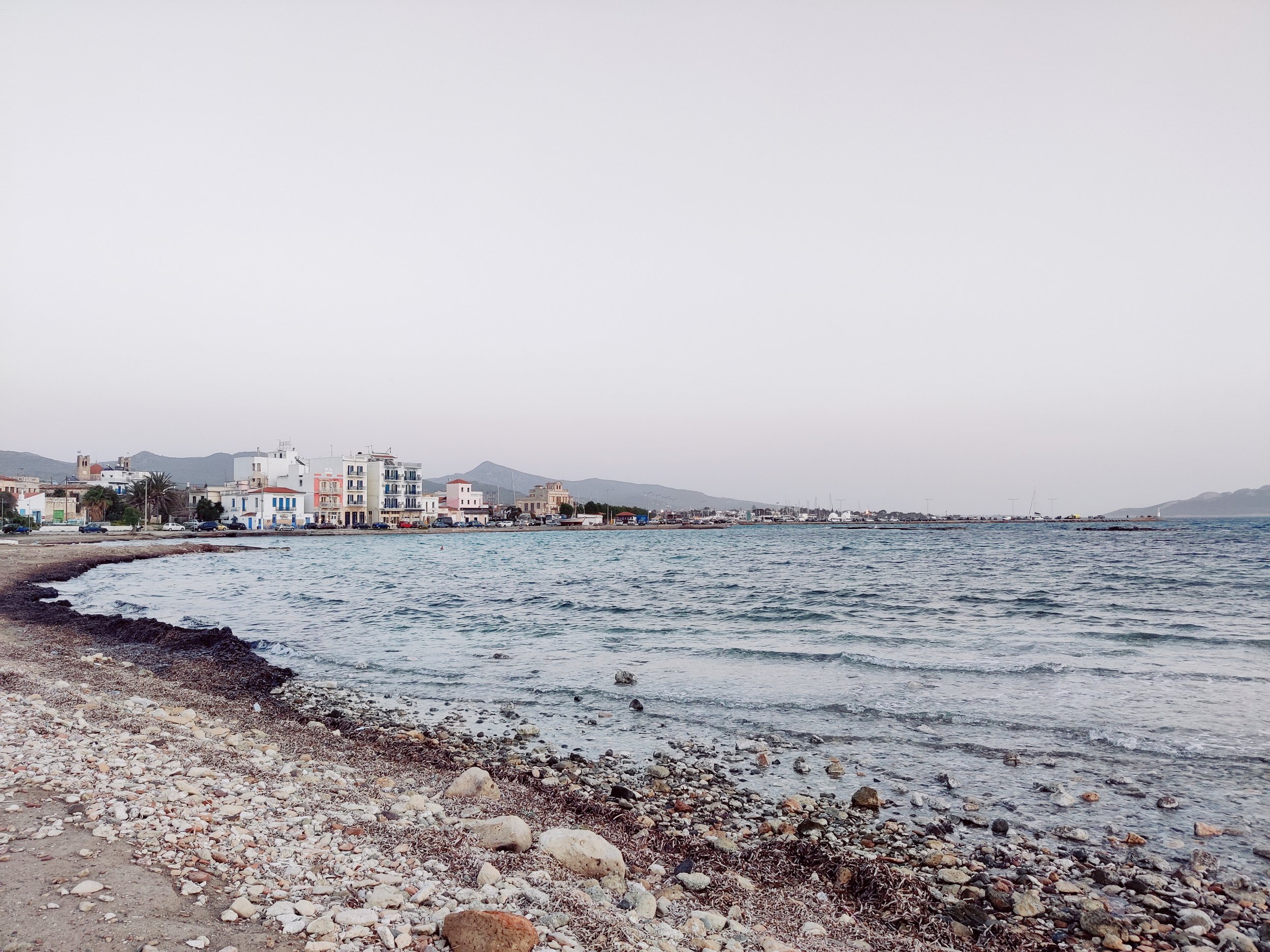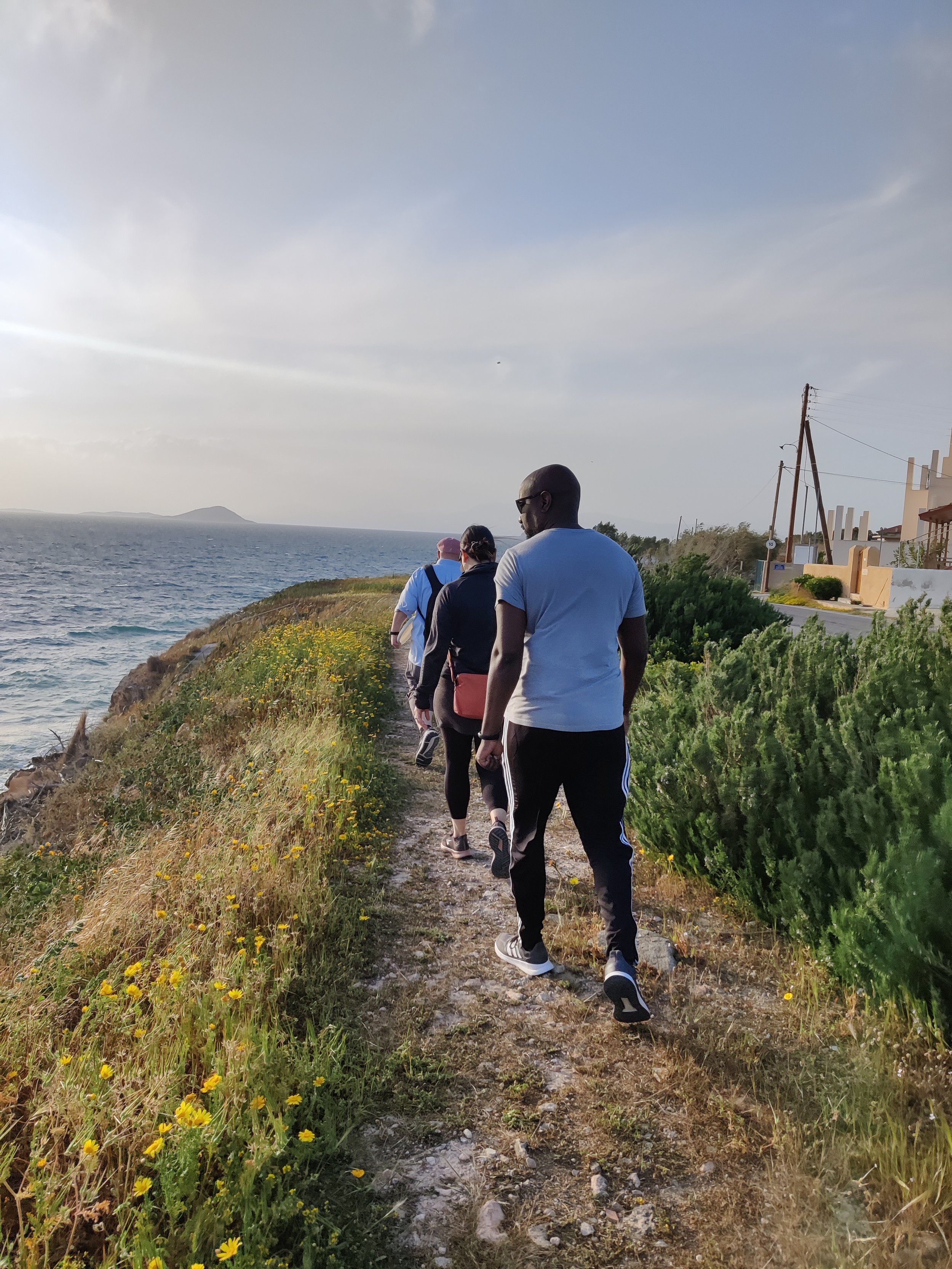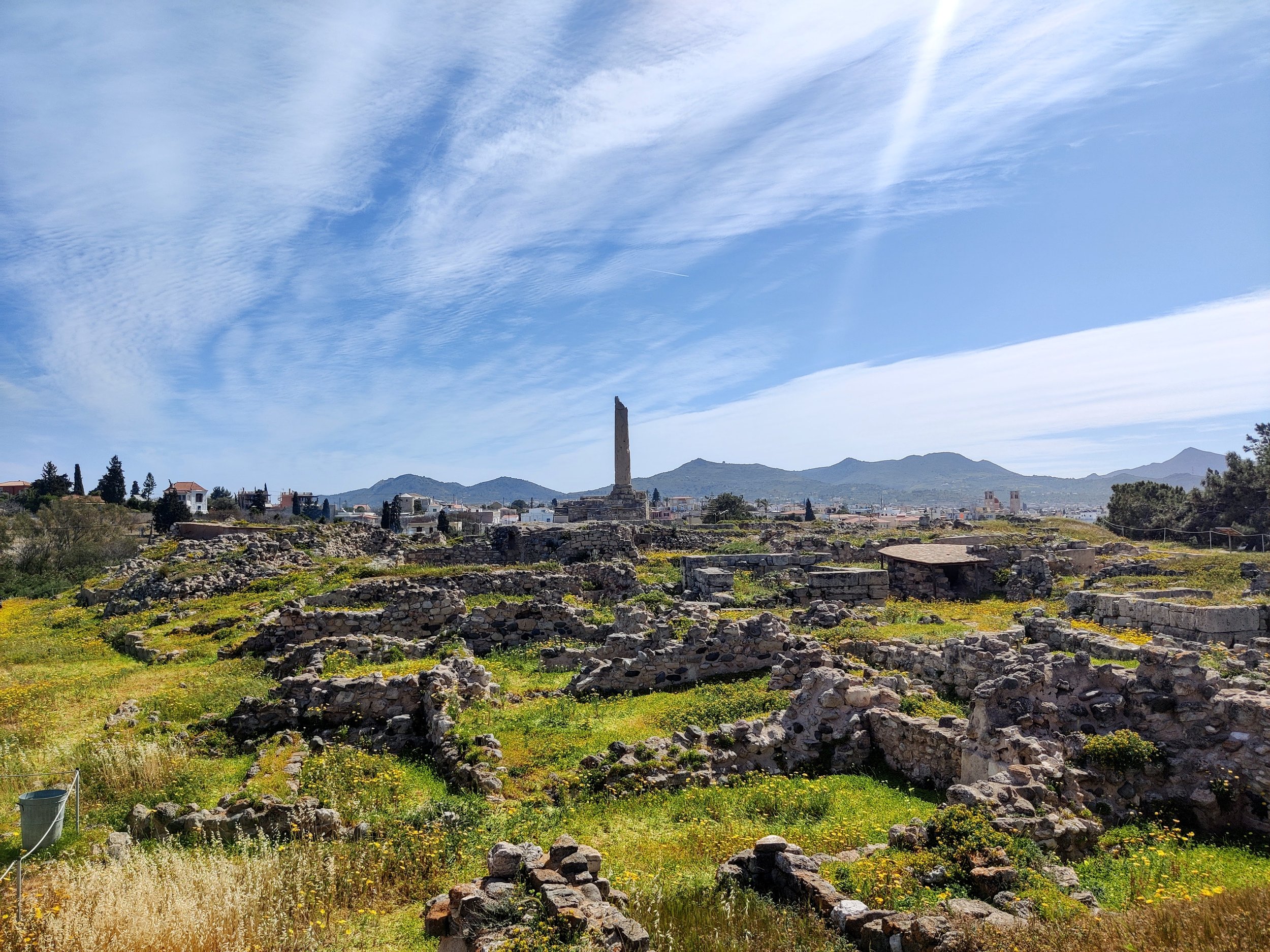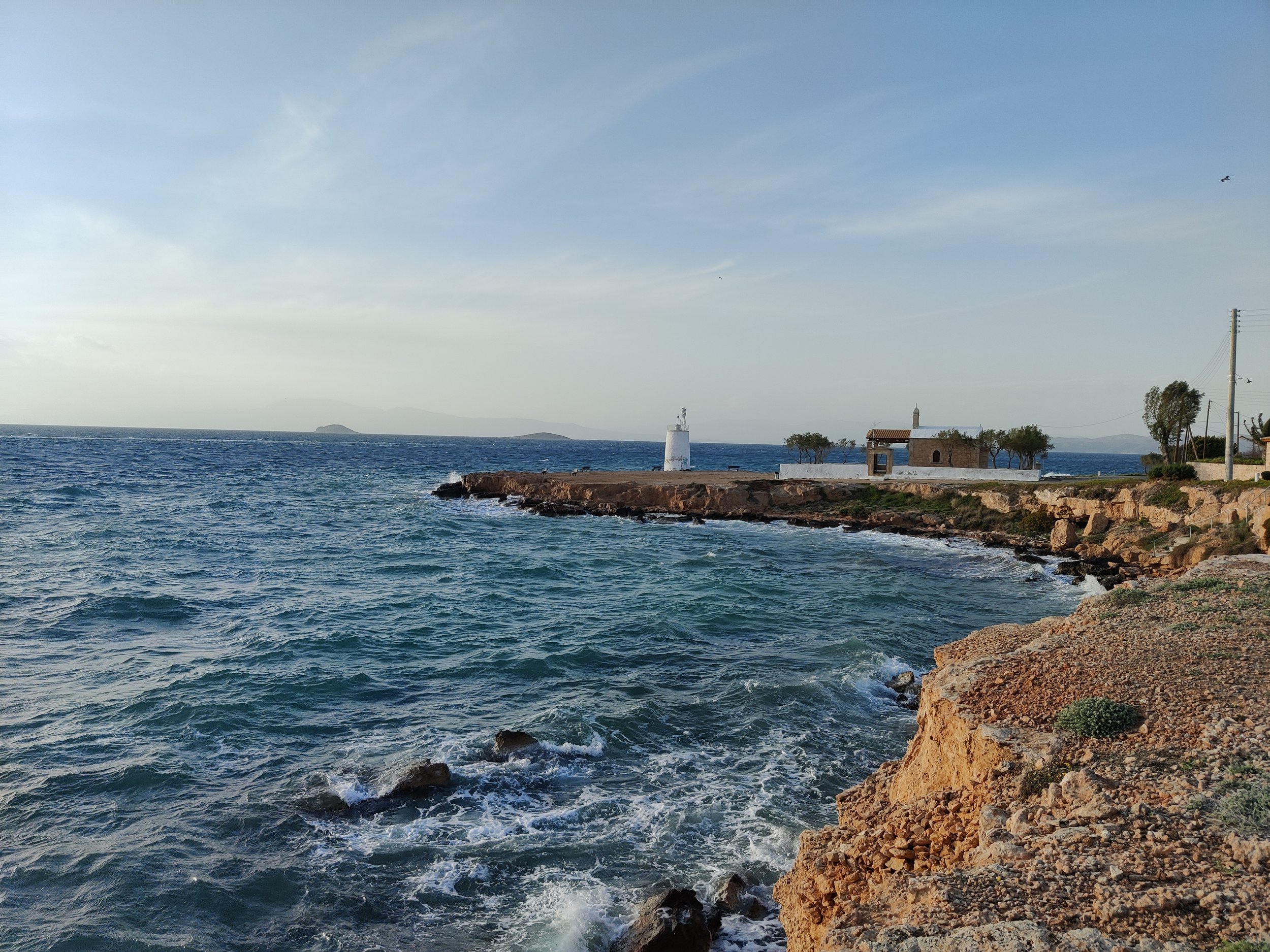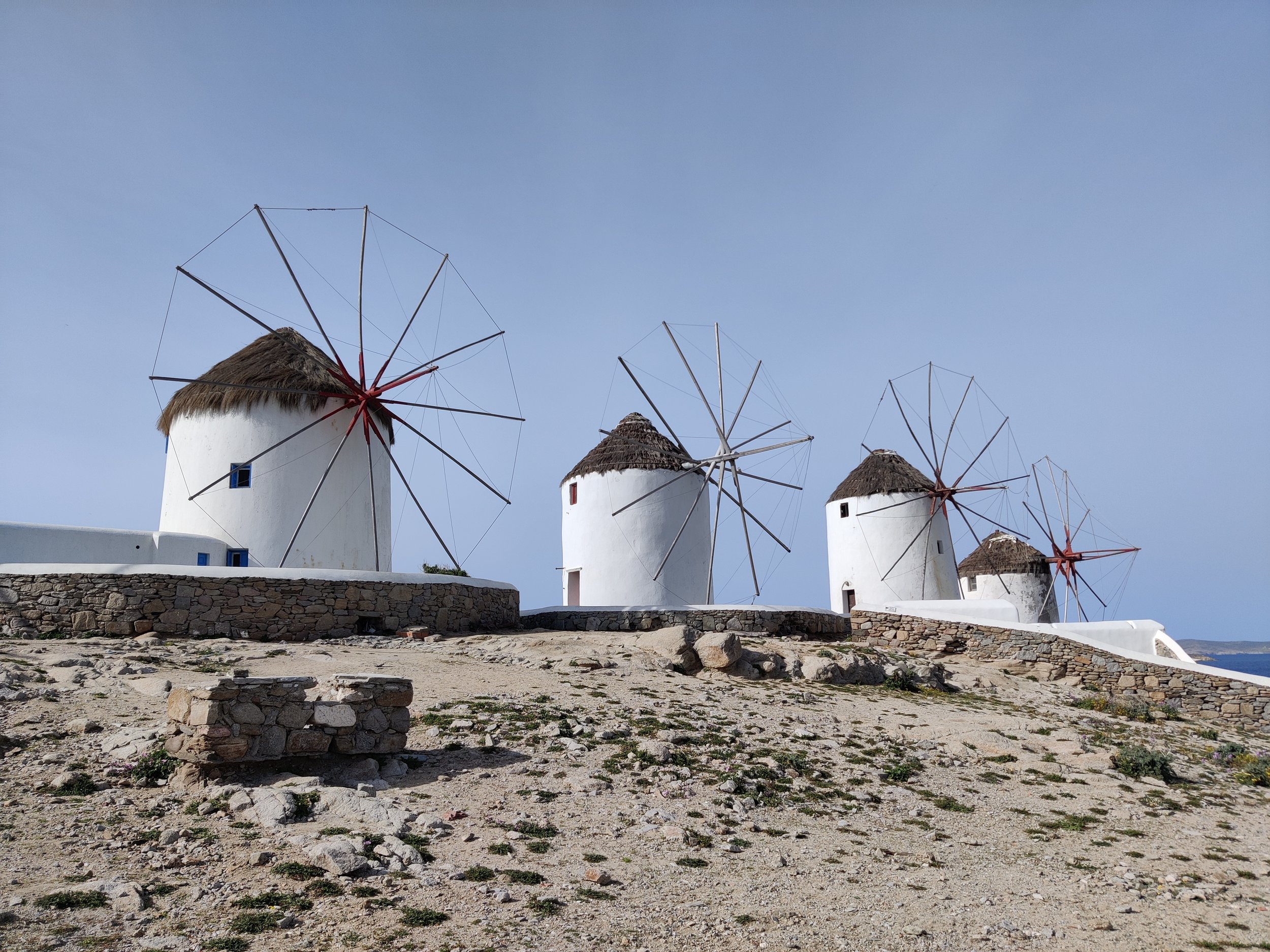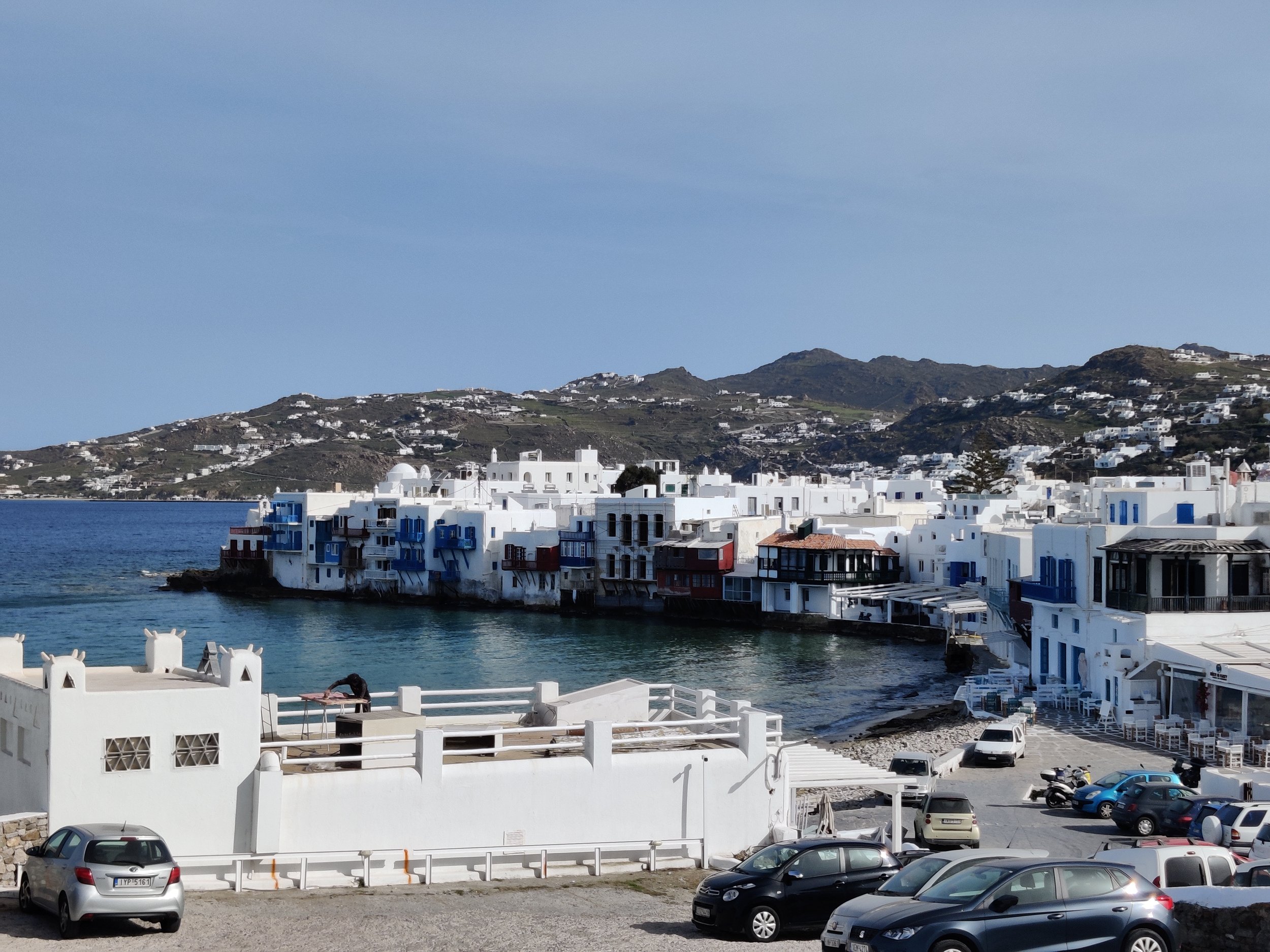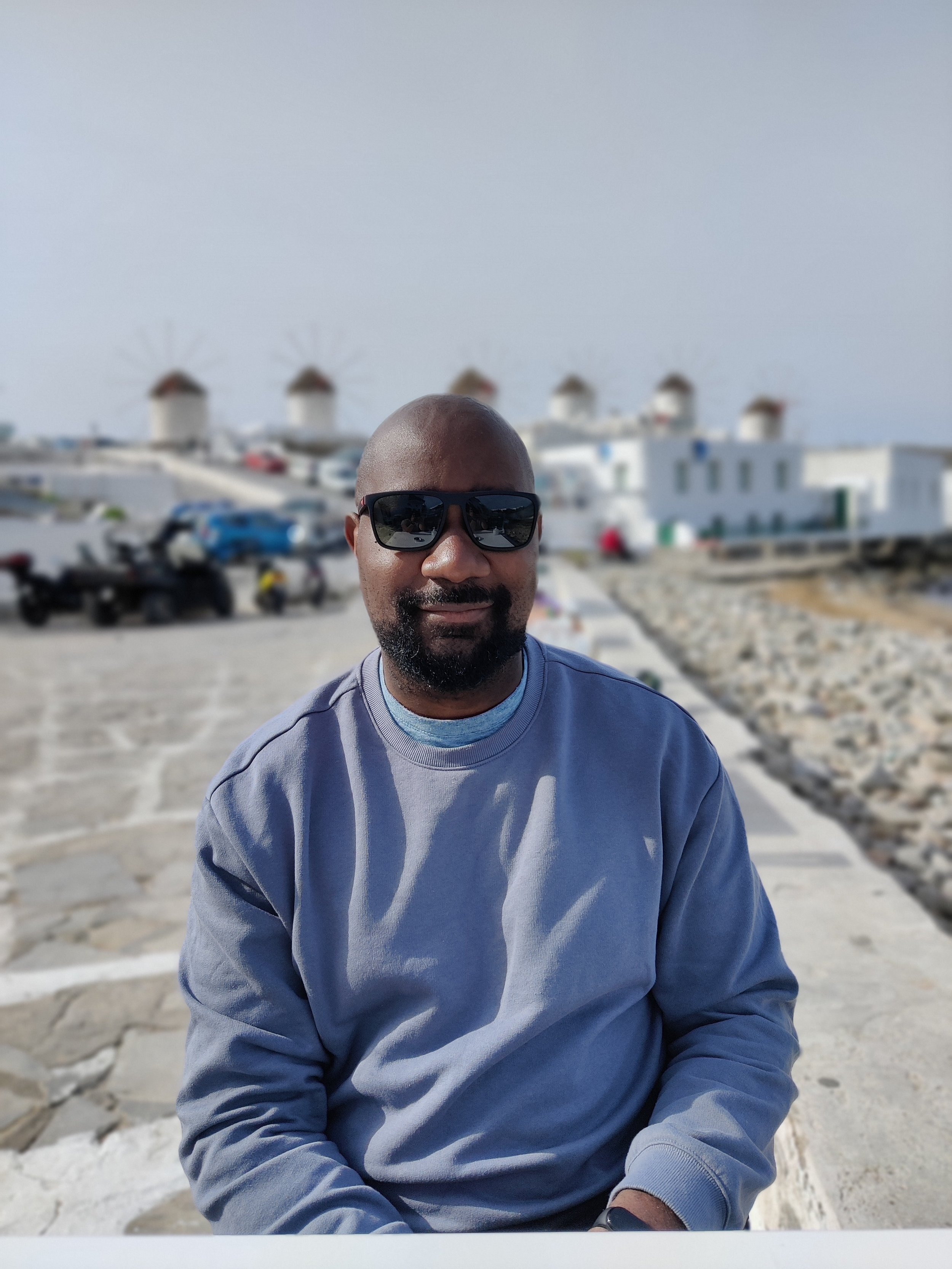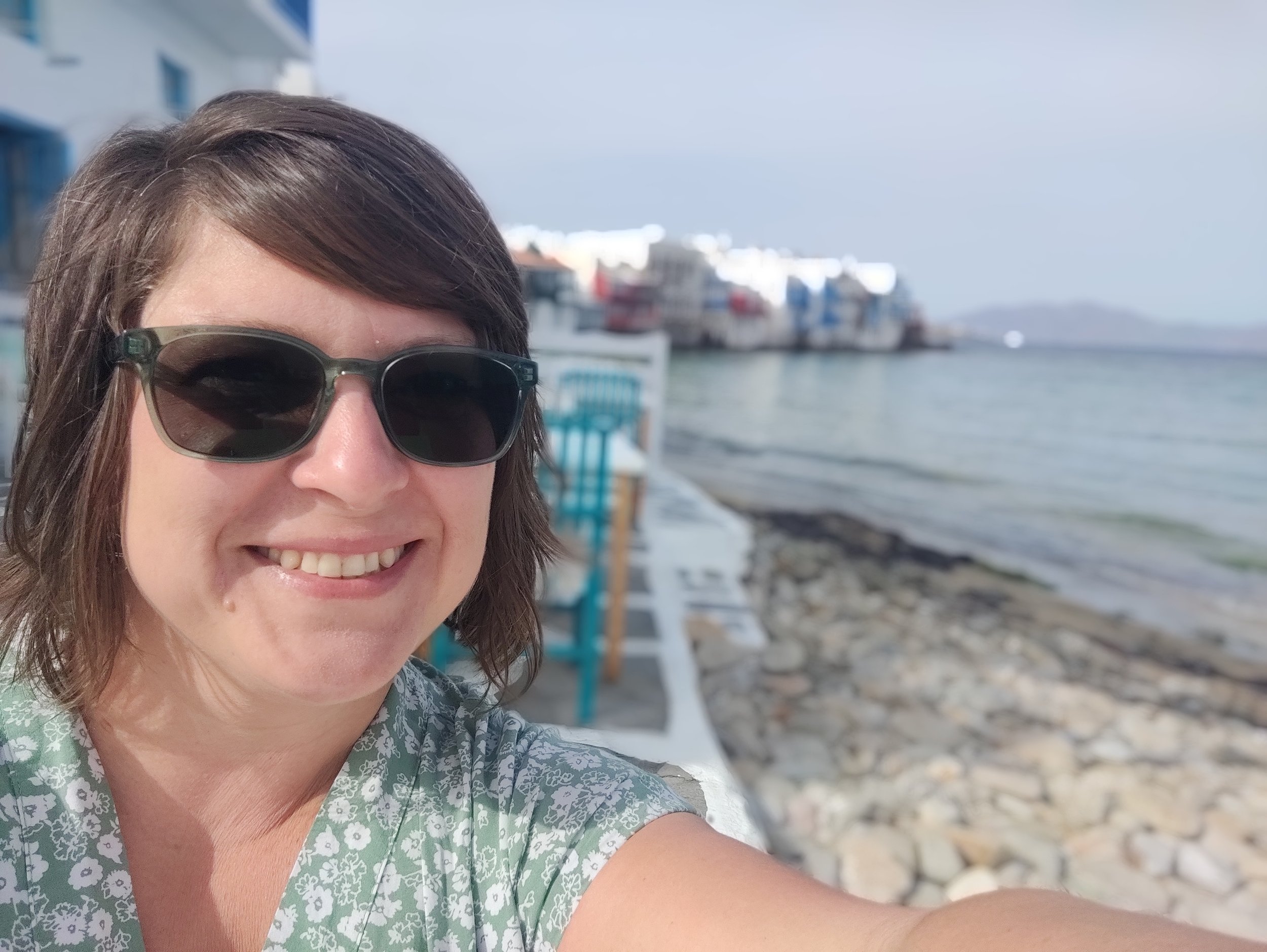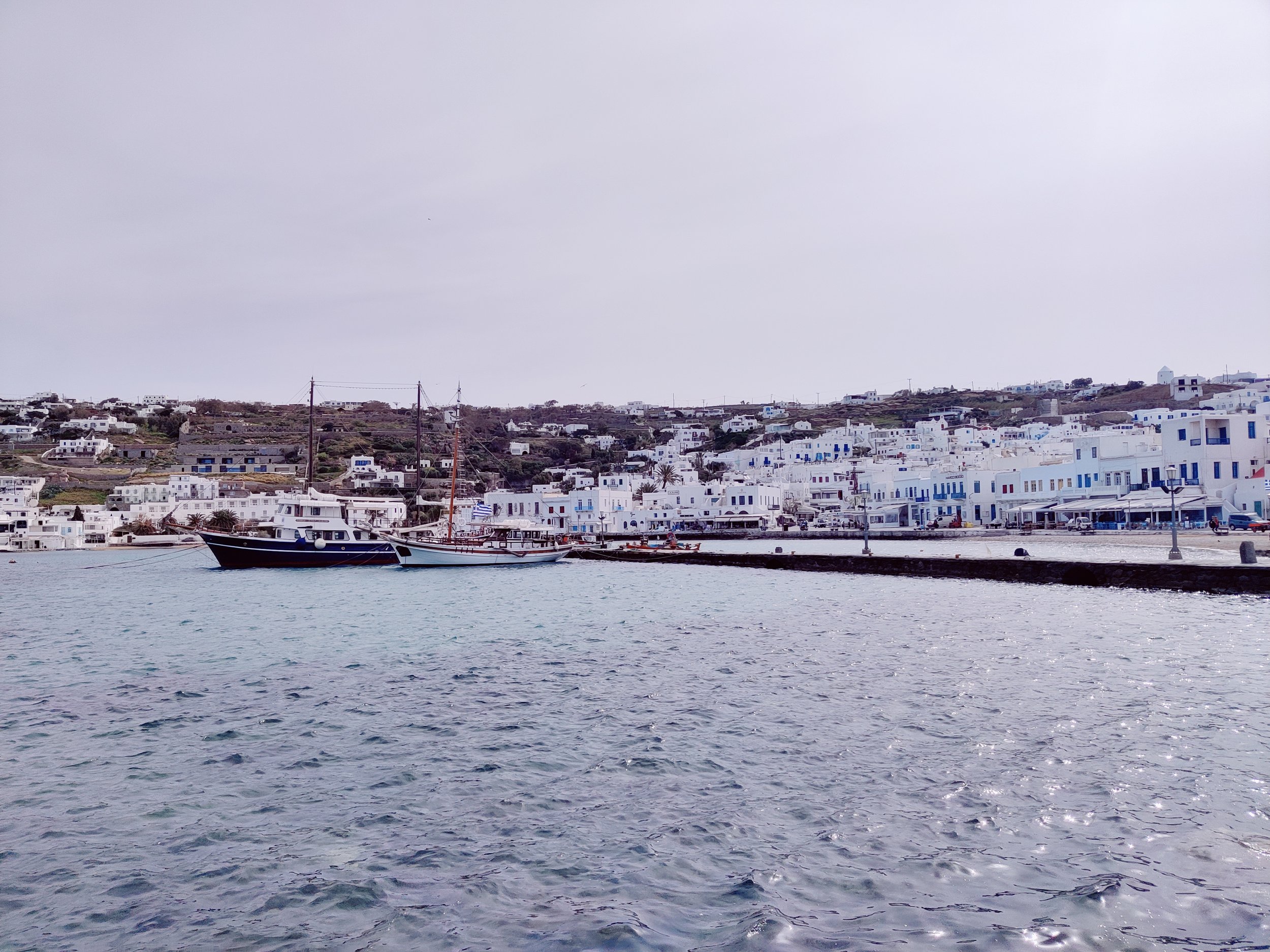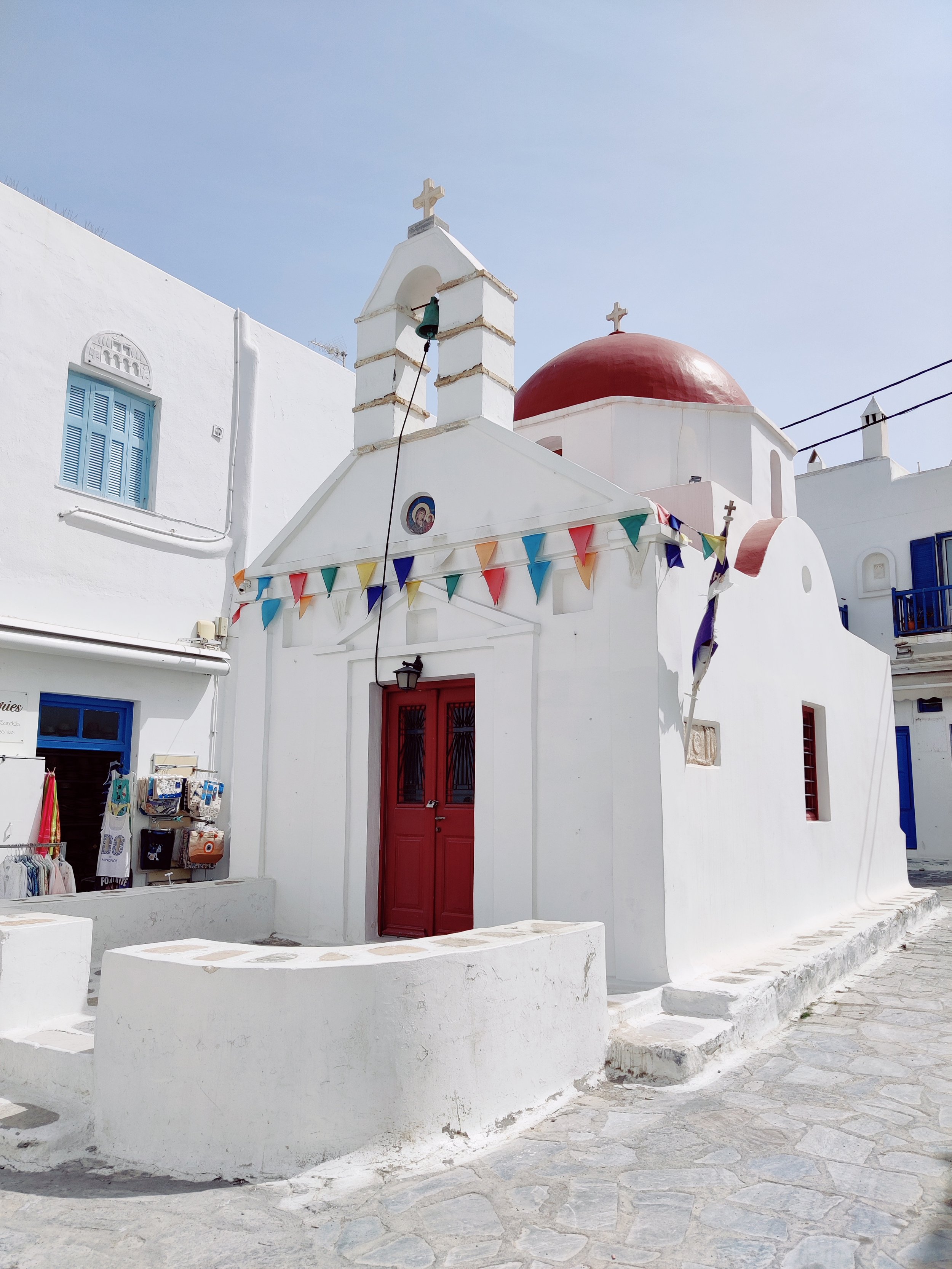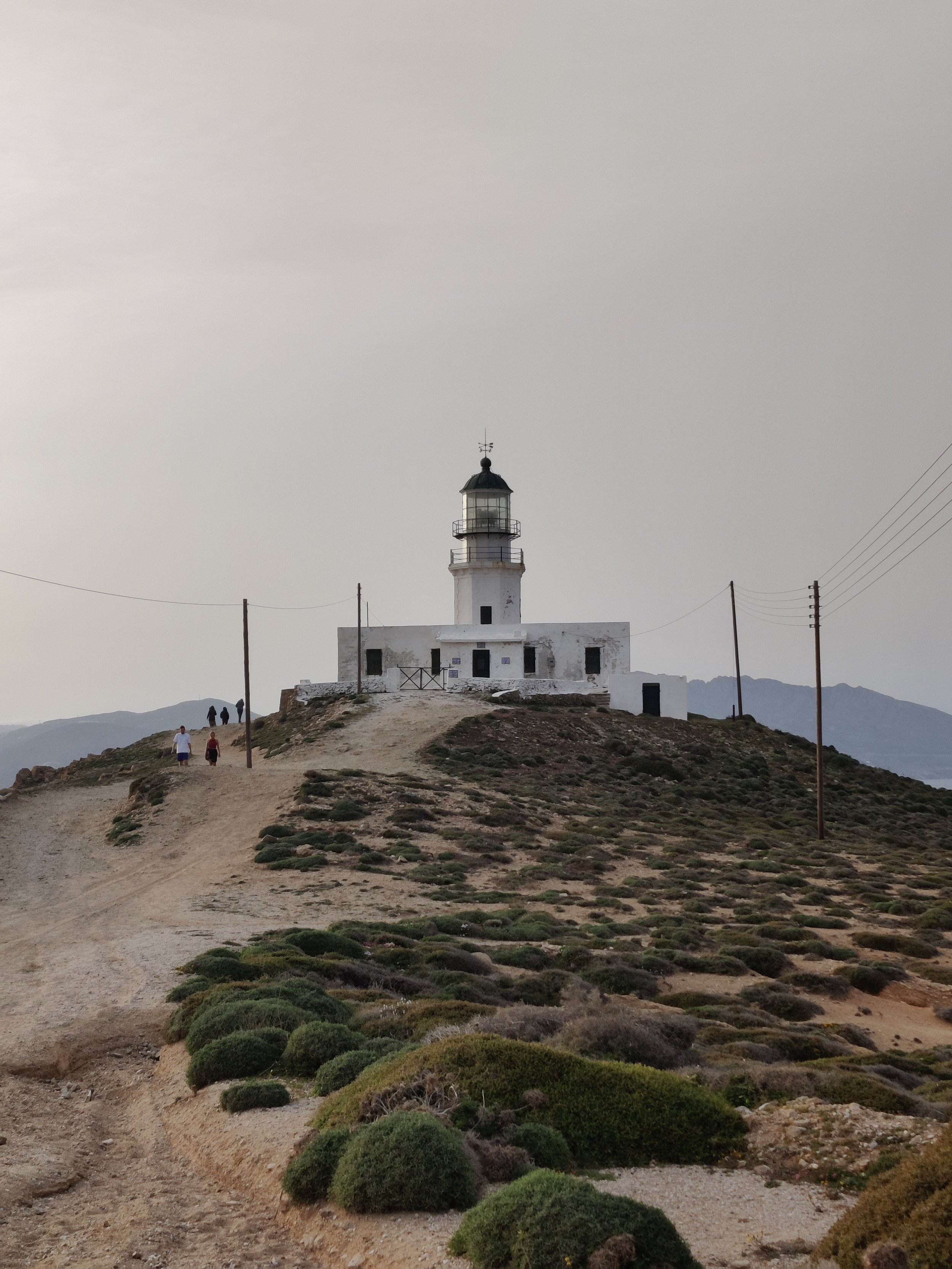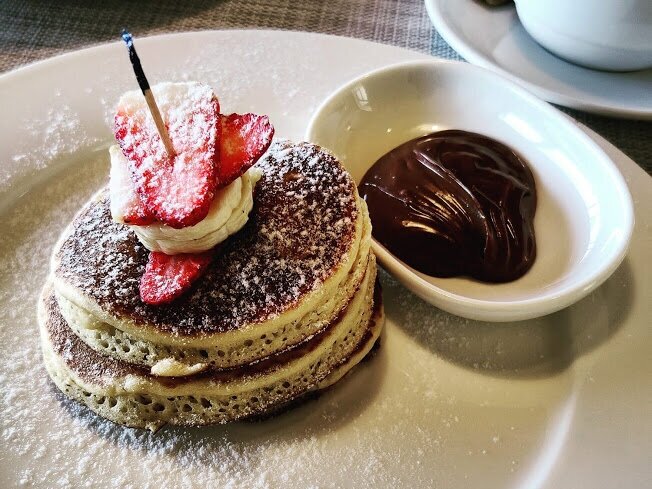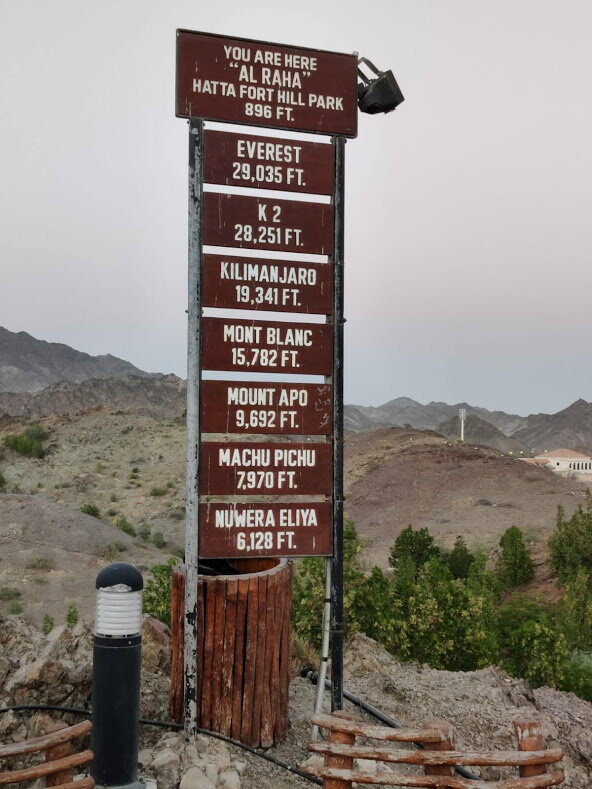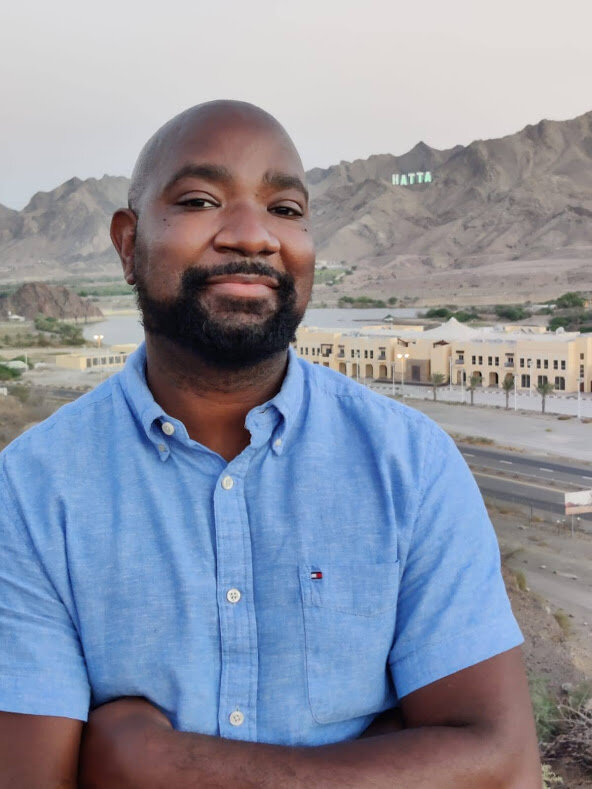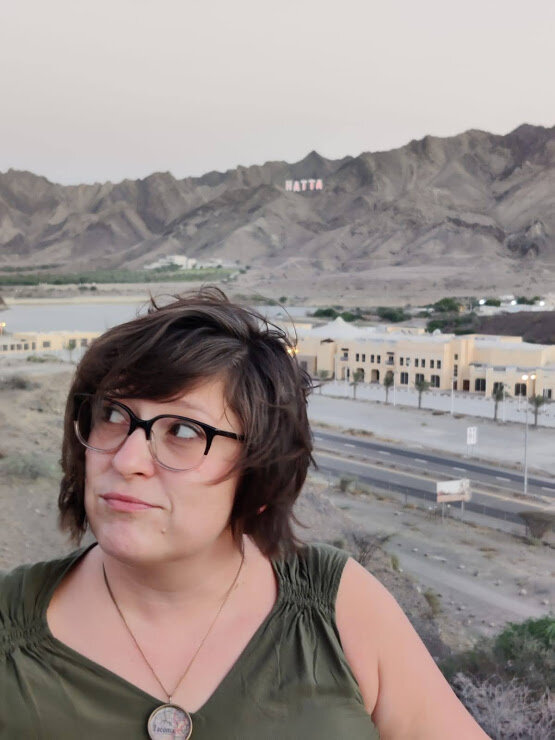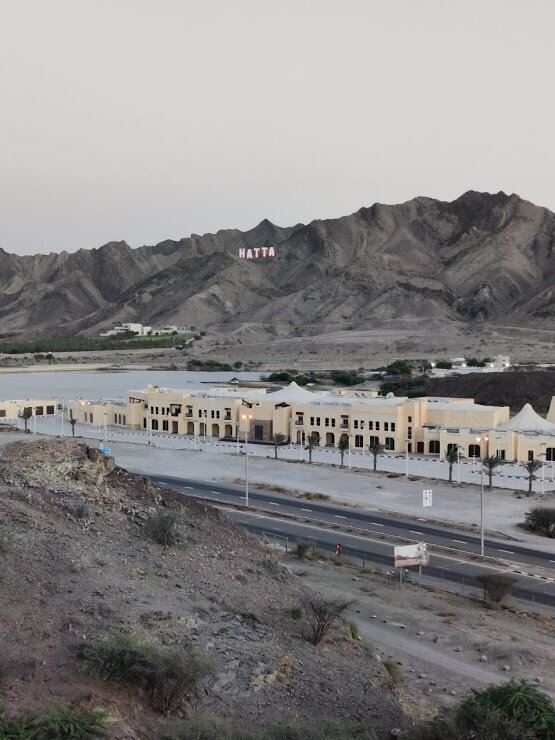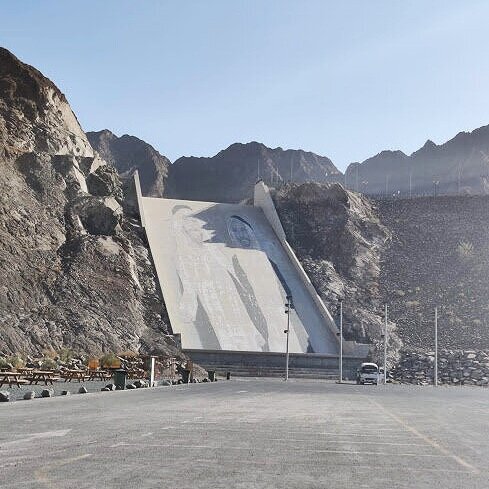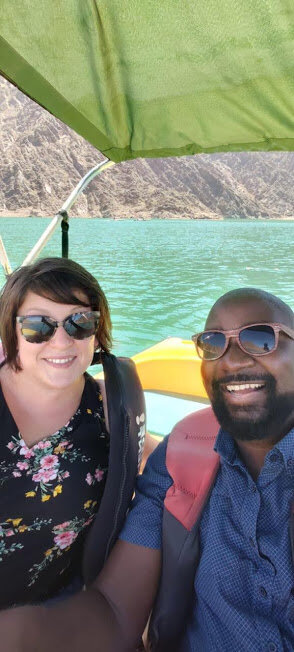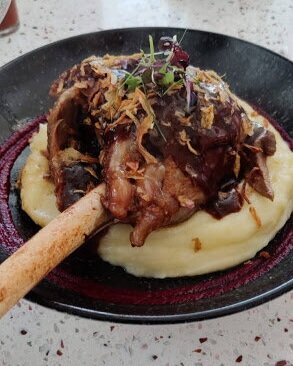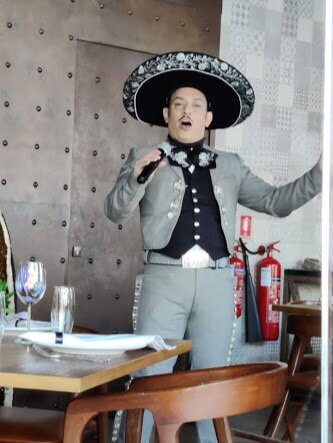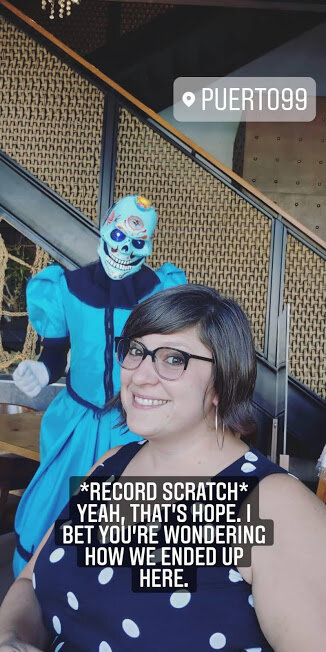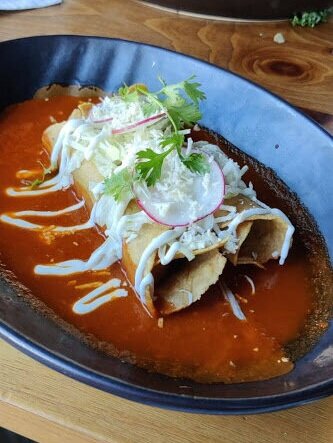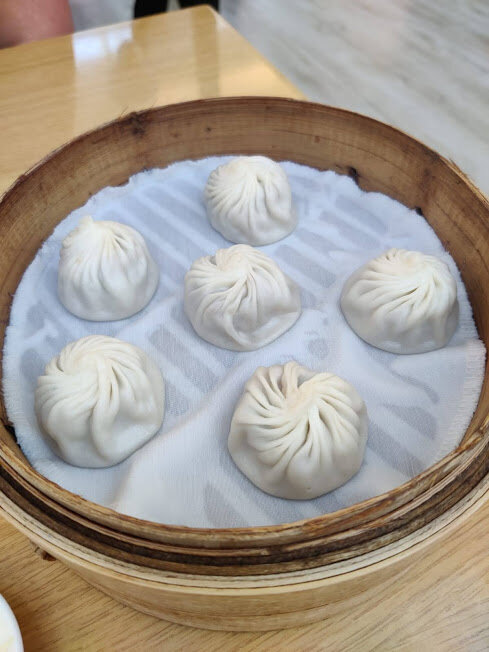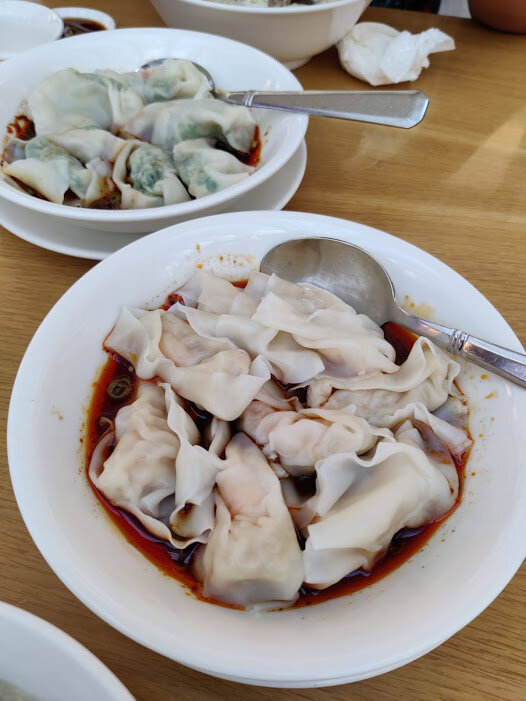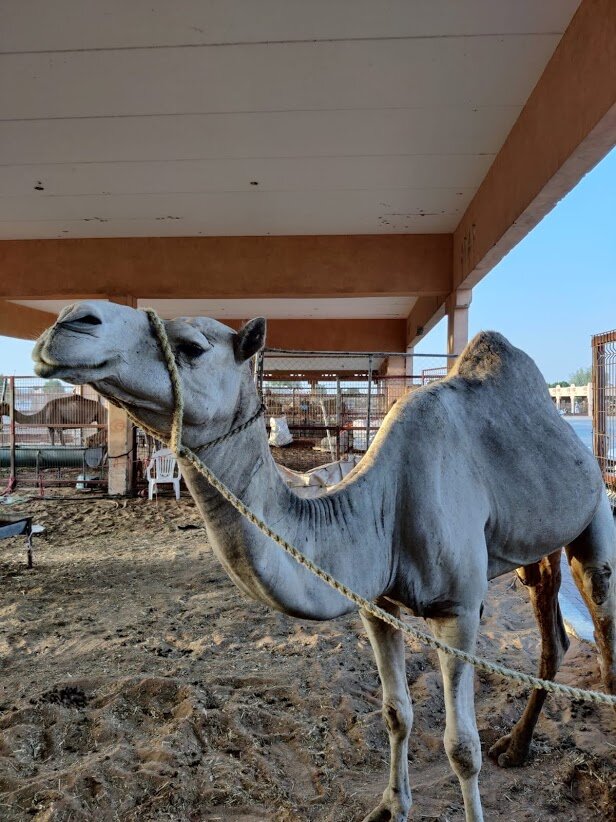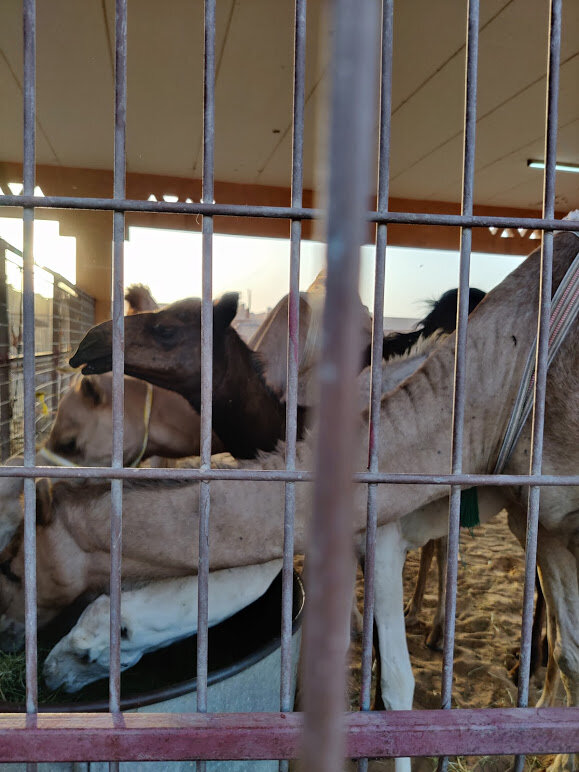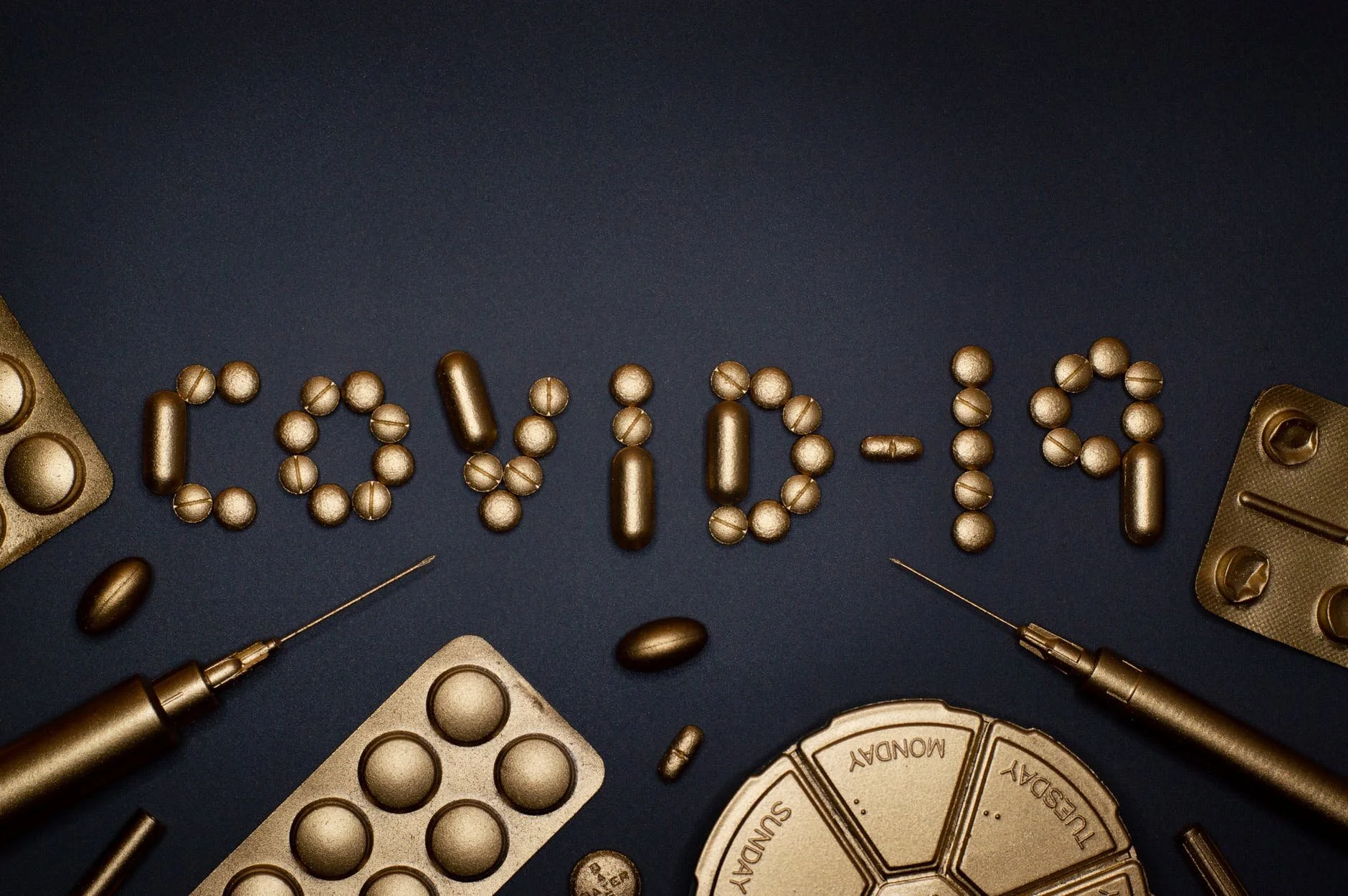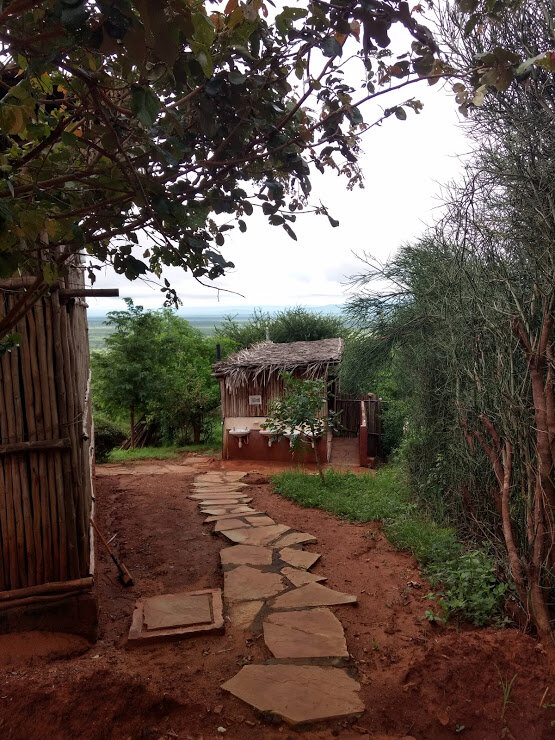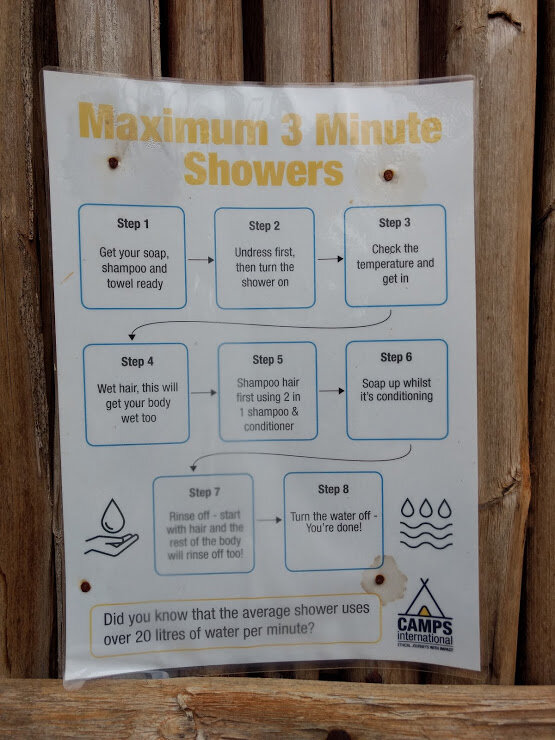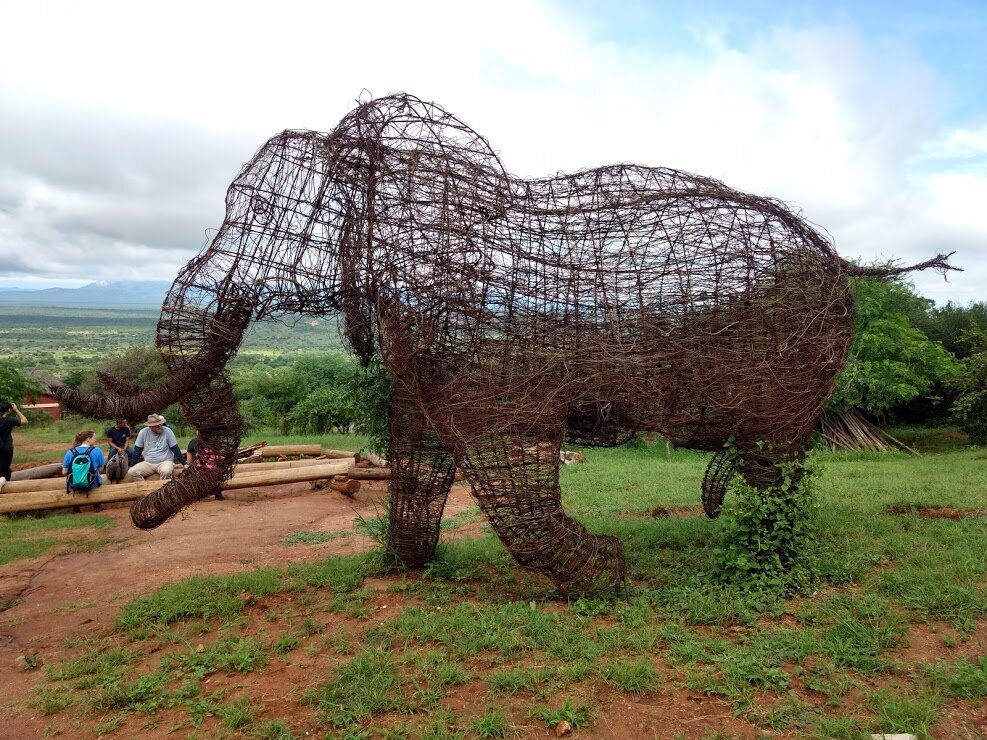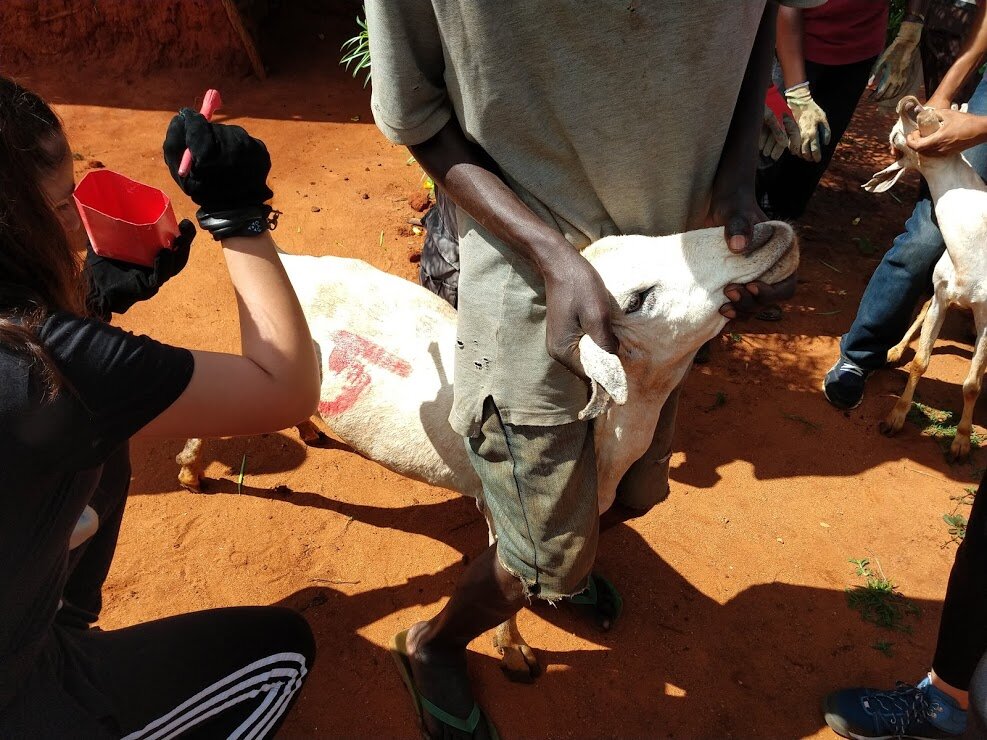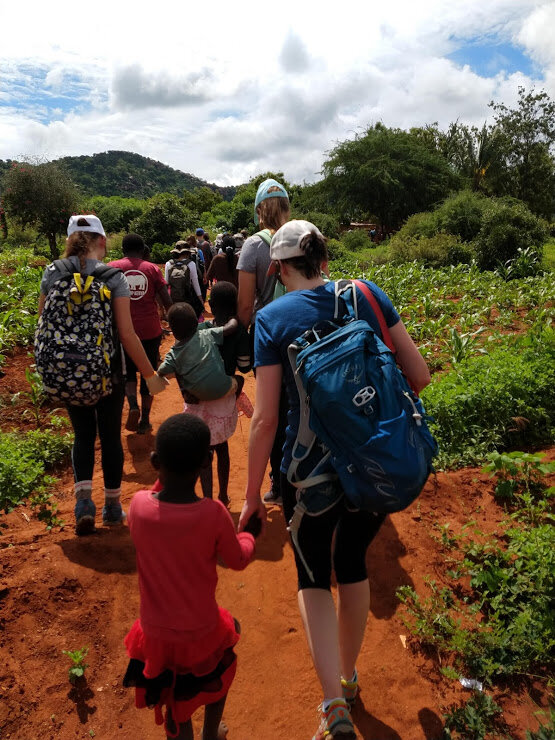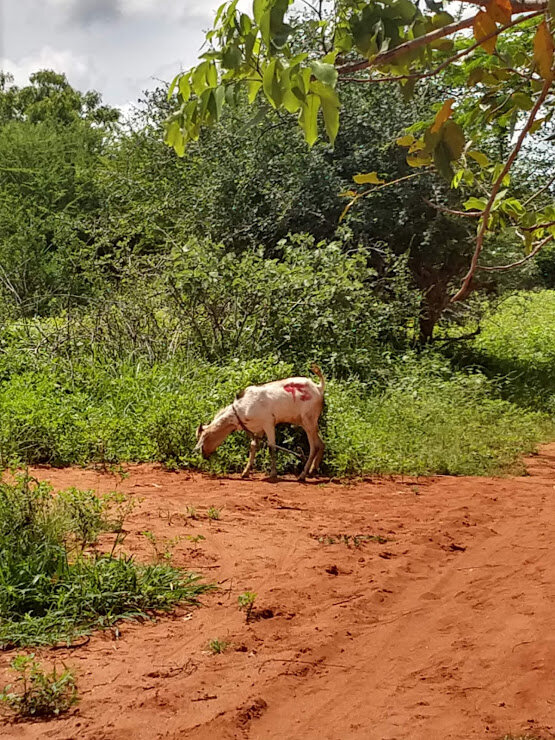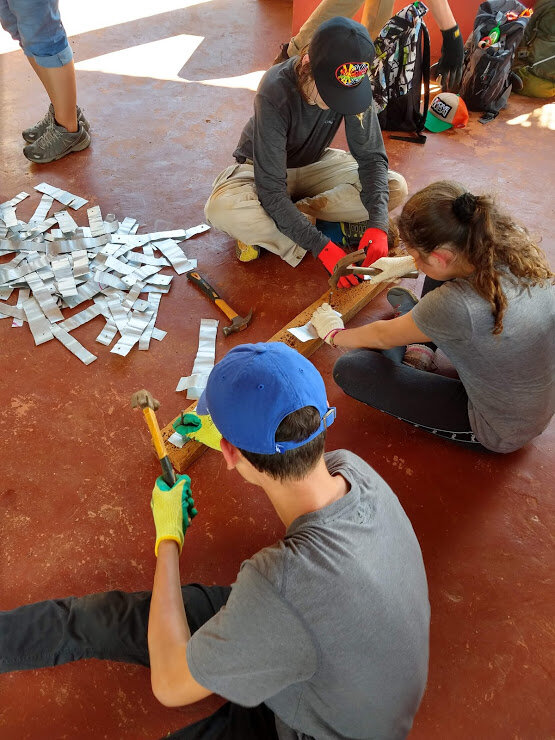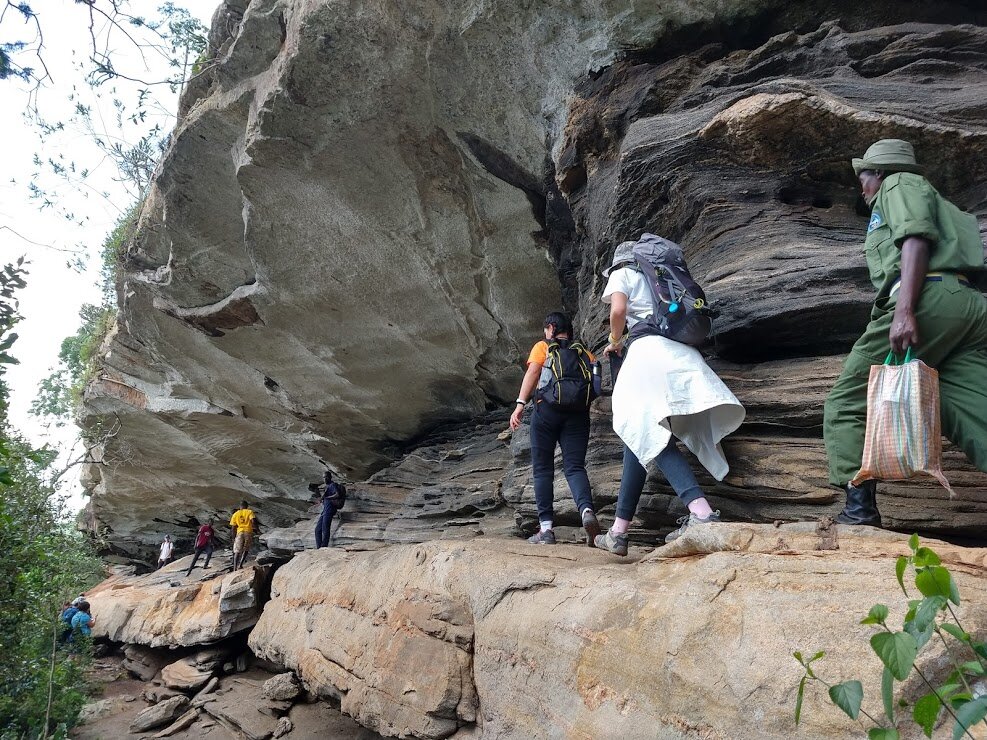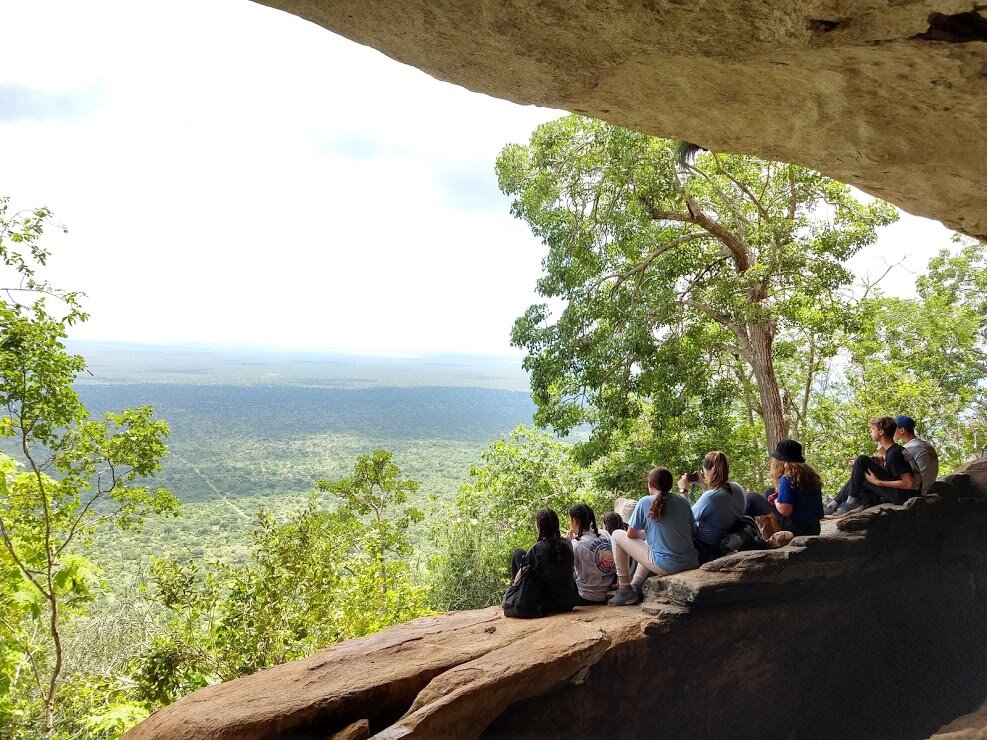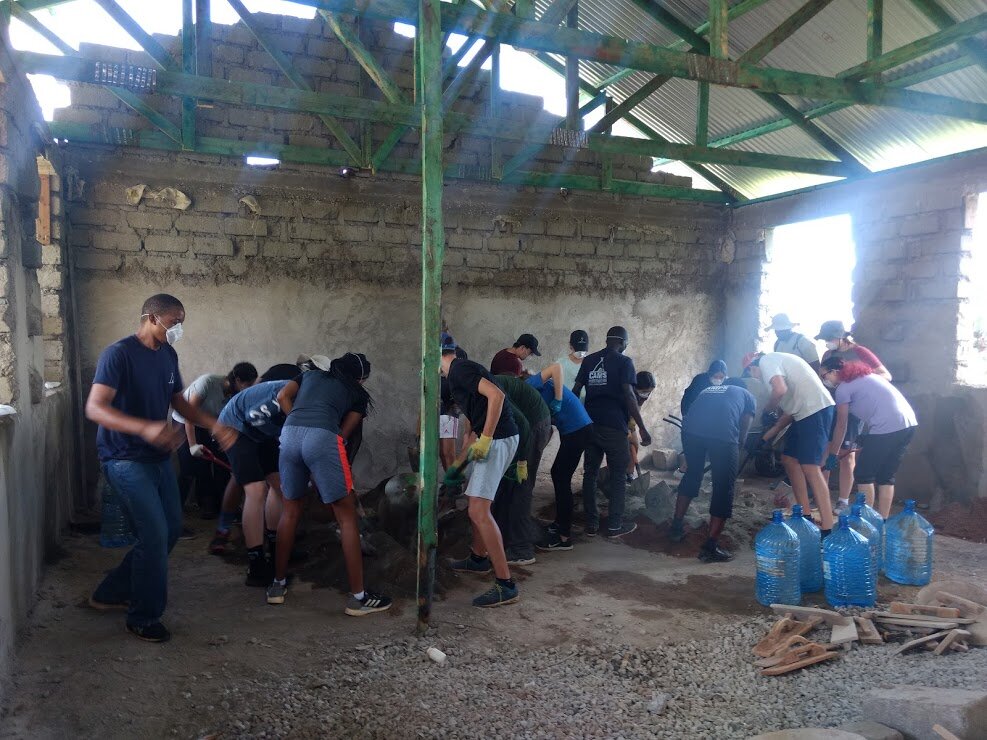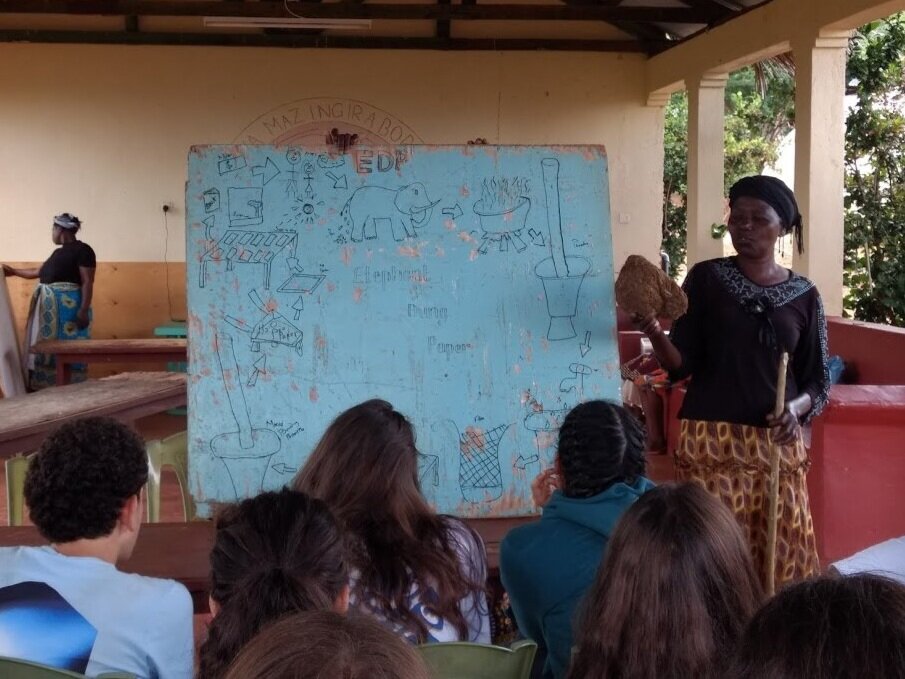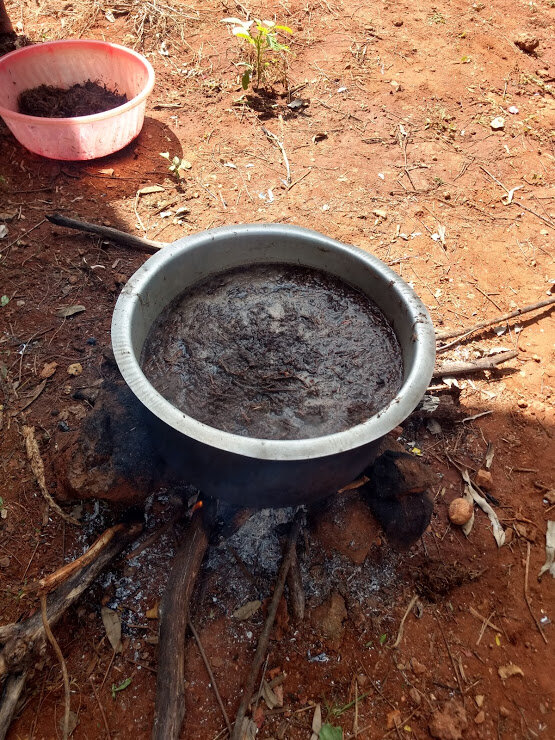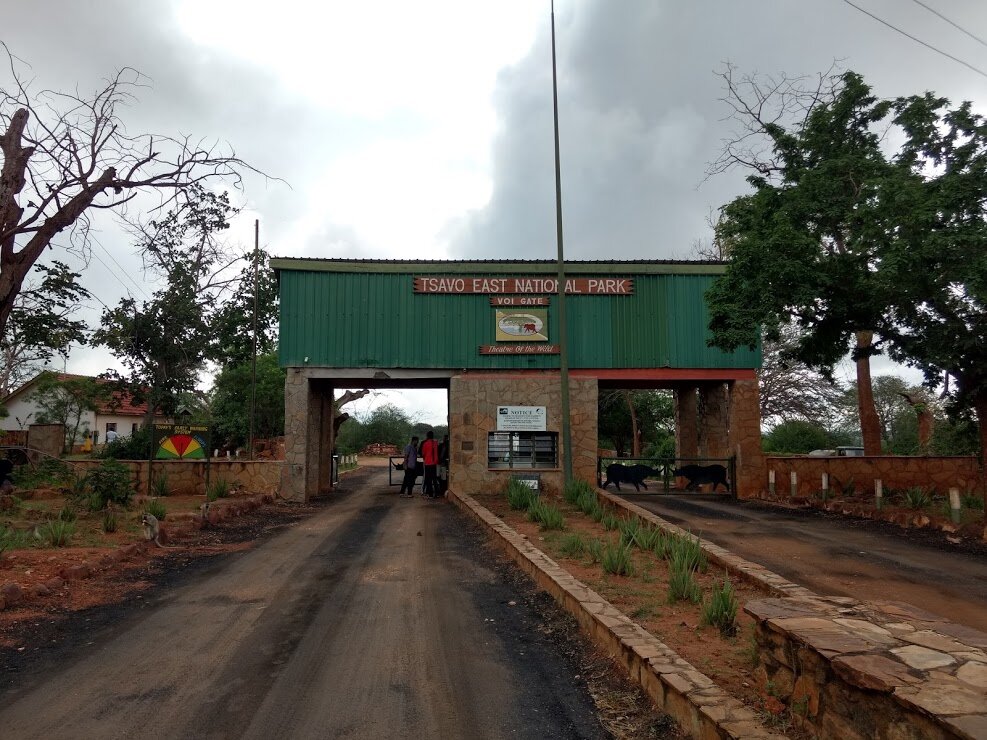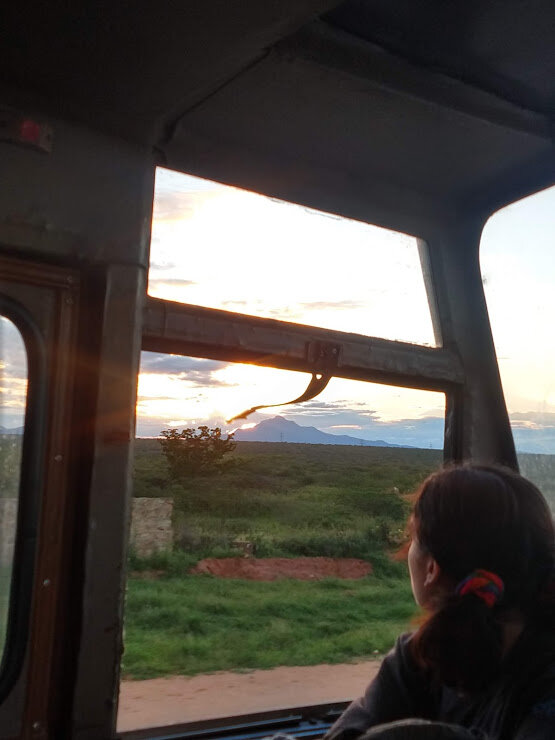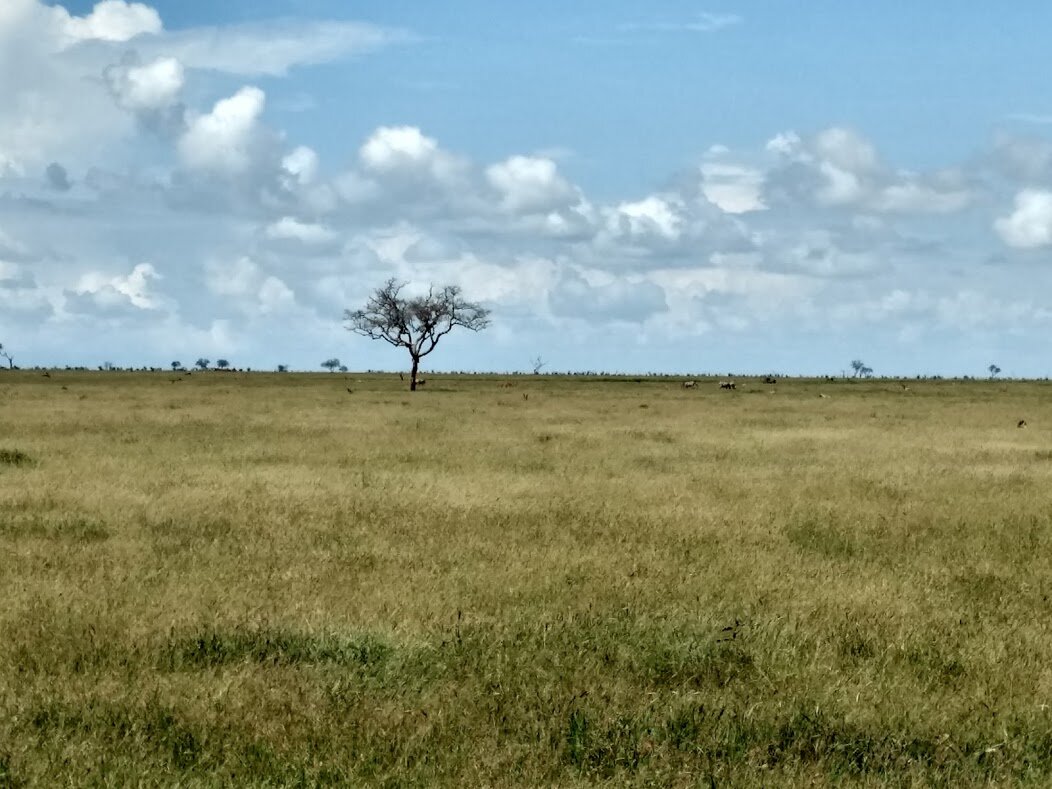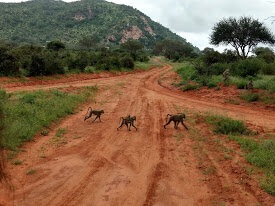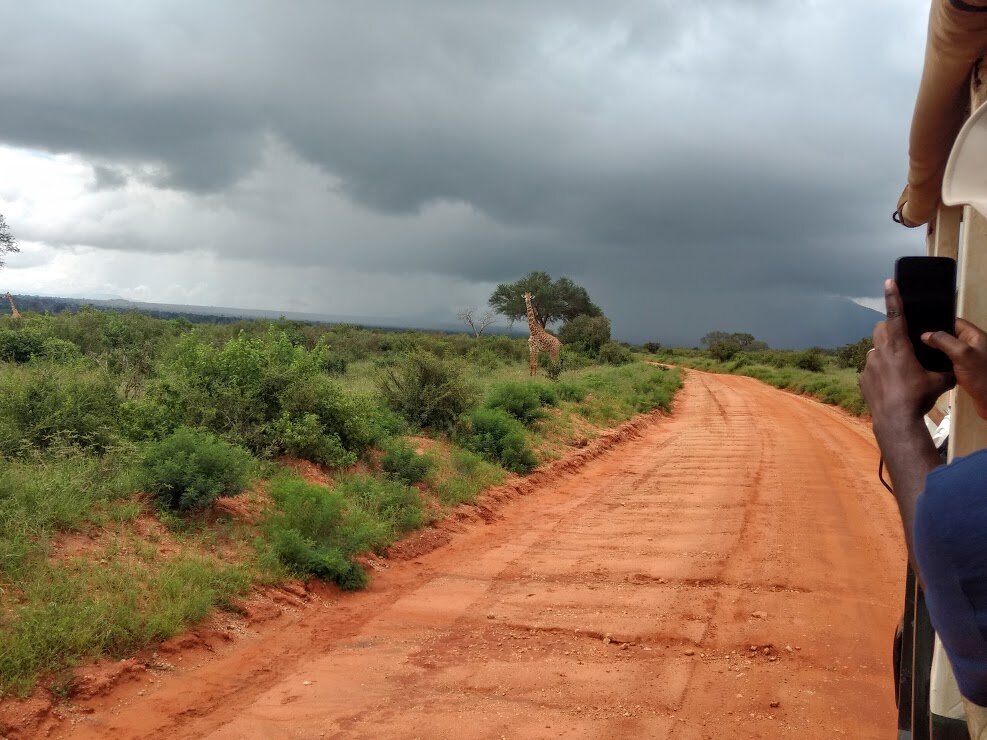Armenia: As Old As Time (Literally)
For many, the lure of travel is the promise of adventure. It is the act of collecting stories to share at dinner parties of close-calls on mountain tops, of hilarious miscommunications at a restaurant, or moments of clarity that dawn with a sunrise on a beach.
While booking a ticket to a new city or country stirs that sense of promise, there’s something sweet about knowing you are going back to a place you loved. This fall break, after flirting with other locals, we settled on a return visit to Yerevan, Armenia. Readers may recall details from our previous trip last October.
This time we settled into a familiar routine. Wake up. Donne our hoodies (after living in the desert it feels nice to be a bit chilly) and raincoats. Walk to breakfast. Meander down some side streets. Stop for coffee. Meander some more. Head back to the hotel for a nap. Hit the streets again for dinner and street food. The best part about revisiting a city you’ve experienced previously, is that you don’t feel any pressure to hurry up and “see all the sights” because you already have.
In the spirit of “if it ain’t broke, don’t fix it” we booked again at the wonderful Phoenix Boutique Hotel, one block from a corner store, one block from the 24/7 Shawarma & Chicken joint, and 3 blocks from the best wine bar in the city, In Vino.
We popped by our favorite tour company One Way Tours, and selected a half-day trip “Garni, Geghard, Arch of Charents, and Symphony of Stones.” Although it poured rain most of the day, and the view of Mount Ararat was obscured by low clouds, we were not detoured and frankly, we enjoyed the respite from the (post-summer yet still not pleasant temps in Abu Dhabi.
Twenty-something Hope and Nate would've told you “if you've seen one monastery, you've seen em all.” In our 40s the historical weight of a 2nd century place of worship is beyond description. At one point, we thought someone was piping in choral tunes (and thought ,”boy, that's cheesy”), but as we turned the corner we saw the four person chorale. In. Real. Life.
At another point, our guide nonchalantly noted that much of the church was built by carving out solid basalt rock. Yes, you read that correctly.










If that wasn’t enough, the story of Garni Temple is equally epic. A nod to pre-Christian Armenia and designed in that Hellenistic style we often associate with the Parthenon, this pagan temple has seen some things. At one point, Christians decided to build a multi-story church–bigger and better than this temple. However, when a massive earthquake hit, only one of the structures really survived and the locals stole the construction stones from the church.





To close out the tour, we ended at the Symphony of Stones. Despite the pouring rain (we’re Washingtonians), we walked down a huge ravine ensconced by basalt columns. It was like walking inside a giant pipe organ.
Shortly after this, we dipped into a family restaurant, where 70 year olds were making Lavash. Arguably a cross between pita and a tortilla, this ancient bread is traditionally made in literally 900 degree below ground ovens. This woman has been making bread since she was SEVENTEEN. Her hands are like cinder blocks.
One surprise of this trip was the number of dogs we saw. That’s right. Armenian street dogs. Here’s a photomontage for all you dog lovers out there.
One evening, we woke up a little later than usual from our nap and decided to try out a restaurant we’d passed by a few times by Martiros Saryan Park . We walked gingerly down the stairs, past a cloud of smoking old men who nodded and continued reminiscing about the old days. Immediately greeted by a giant stuffed bear (see picture), the sound of piano music, and an intoxicating aroma, we knew we’d found our spot for the night. Tables were filled with plates brimming with meats, dumplings, salads, and lots and lots of lavash. Beyond the menus, there wasn’t much going on in English, but that didn’t deter us from ordering Georgian garlic chicken, beef soup, and a few other delectable dishes.
One new thing we did this year was dig into soups. You read that correctly, soups. “No one ever got fat eating soup” Nate declared one evening. So we decided to test his theory and are now working our way through recipes from The Armenian Kitchen.
On the way home we were joking about coming back next fall break. Yerevan is a special place.
There and Back Again-- A Final 2023 World Cup Dispatch
This post was originally published in Nate’s newsletter on August 6
Our view of the tournament opener in Auckland, where the host Football Ferns upset Norway
I really hate when I am right when I wish I was wrong. I ended last week’s newsletter by saying the US needed a win in their final group stage match in order to avoid Sweden in the round of 16. The US didn’t get that result, squeaking out a scoreless draw against Portugal. That dropped them into second place in Group E, behind the Netherlands, setting up today’s match against Sweden that the US lost in PKs. This is the earliest World Cup exit from the US in recent memory and likely brings an inauspicious end to the tenure of Coach Vlatko Andonovski and this generation of USWNT players. I don’t want to dwell too much on the loss. I’ll leave that to others. I had a great time in New Zealand, so instead I want to leave with some final takeaways from our visit.
Aotearoa (Land of the King White Cloud), is a country the size of the US state of Colorado with the population of South Carolina, more often referred to as New Zealand. The entire country is a series of volcanoes. This plays cool tricks with the topography, creating soaring peaks, numerous active volcanoes, and thermal & hot springs that litter the landscape. New Zealand is made up of two main islands and is packed with more beauty than I can begin to describe. The North Island, where we spent our time, is roughly the size of the Western half of Washington State and shares a similar climate and mild winter. But the landscape is more varied. For folks back home, imagine if our "wet side" of Washington had ten mountains the size of Mount Baker, a Glacier National Park, and a Yellowstone all jammed inside.
The landscape in New Zealand is gorgeous and goes on like this for hours between Auckland and Wellington
Because we’re city folk and came for football, we spent most of our time in Auckland and Wellington, the commercial and political capitals respectively. But we also ventured into the rural areas in the middle of the island and witnessed some of the natural beauty. We toured thermal springs turned every shade of the rainbow by sulfur and other gasses. We also did two tours of caverns. Our second tour was by boat—yeah, you read that right: river rafting in a massive cave in the dark. We got a fair amount of windshield time covering over 1000 miles in just under two weeks. I was most struck by the rolling hills that looked like they were drawn by the video game engine in Red Dead Redemption 2.
The Maori and surviving conquest - My biggest area of learning this trip was about the history of the Maori people. For those unaware, the Maori are the original occupants of New Zealand and make up about 15% of the population. Most Maori can trace their genealogy back to a series of seven canoes, called Waka, that arrived in the 1300s. Those seven canoes are the basis for the Iwi (or tribal identity). Maoris are Polynesian people, sharing an ancestry with the people of Samoa, Tonga, Tuvalu, the Cook Islands, and native Hawaiians.
Our raft in the Waitomo Caves, near Te Kuiti
Arguably, they are one of the most successful survivors of conquest in the post-colonial world. They weren’t decimated by disease like the indigenous people in the US; they weren’t ruled under an Apartheid state well into the 1990s like in South Africa; they don’t live under a state of permanent occupation like Uyghurs and Tibetans in China. Don’t mishear me—I haven't been propagandized by the Kiwi state. But Maoris are largely integrated into New Zealand society, while retaining key elements of their cultural heritage and traditions and unlike many conquered people, they’ve largely managed to retain their language*, called te reo.
There are Maori language newscasts, radio stations, reality TV shows (bad ones tho), and official Maori dubs of Disney animated films. Each match at the World Cup opened with a Maori song, as a form of land acknowledgement and welcome to Maori lands. I noted the typical Kiwi is far more conversant in Marori culture, history, and placenames than people where I’m from are about the history and culture of the S’Puyalupubsh (generous and welcoming people) and Squalli-Absch (people of the grass). The US’ commitment to the eradication of native culture was a core value at the country's founding that largely endures to today. However in New Zealand, there are initiatives underway to make Maori language instruction compulsory in schools. This one really gets me: can you imagine the meltdown the culture warriors of the American right would have over their kids being taught the languages of the native people in the US? It would make the Common Core Wars look like Chutes & Ladders.
The sulfur infused Devil's Bath in Wai-O-Tapu Park.It looks like Gatorade and smells like hell
Yo, why are all the bartenders from Ireland? Something else I learned about in New Zealand is the Working Holiday Visa Program. If you’re between 18-30 years old and from a select number of countries, including the US, you are able to secure an up to 18 month visa to travel to New Zealand and engage in temporary employment. Most tourist visas are for 30 or 90 days and forbid you from taking on any form of employment but with this program, people get to experience New Zealand's culture and lifestyle while supplementing their travel expenses.
Consequently, most of the bartenders and servers we encountered were from Ireland, the UK, and rural parts of the US. One person we talked to, from Southern Arkansas, was on their third of these visas, previously working at restaurants in Australia and Brazil. It seems like the perfect thing for a kid on a gap year or someone who is burned out working in the service industry in the States.
*Maori appears easier to learn than most languages: there are only 13 letters in the alphabet and phonetic patterns are predictable. An “A” makes one sound, unless it is marked as “Ā” then it makes another sound. No guesswork like with the “A” sound like there is in English “gas” vs “was” vs “swap.”
These Sheep Ain't Gon' Shear Themselves- A 2023 World Cup Dispatch
This post was originally published in Nate’s newsletter on July 29
The Running of the Sheep, Te Kuiti
The Running of the Sheep
I bring you greetings from a rented farmhouse in the sheep shearing capital of the world, Te Kuiti, New Zealand. Te Kuiti used to be the home of the annual Running of the Sheep but the festival was discontinued this year (yeah, I am bummed about it too).
Since we last corresponded, after taking a detour to Hobbiton, Hope and I have traveled the 400-ish miles from Auckland down to the capital, Wellington. Wellington is lovely. It is a city the size of Tacoma but more hilly and cosmopolitan. We arrived on Tuesday, taking in two matches at Sky Stadium and are now winding our way back north for a final pair in Auckland.
Our football odyssey has been exciting. Here’s a rundown:
We watched the host nation, Lady Ferns, upset Norway in front of an ecstatic crowd of Kiwis in Auckland in the tournament opener in Eden Park.
Sky Stadium, called the Pie because of its resemblance to a disposable pie tin, is the site of World Cup matches in Wellington
We next watched an uninspiring but professional USWNT performance against Vietnam, defeating them 3-0 at Eden Park. I fear the US showing in this match was a portend of the unfortunate first half against the Netherlands.
On Tuesday at Sky Park in Wellington, we witnessed possibly the match of the tournament as the Philippines returned the upset favor to New Zealand in a classic 1-0 smash & grab. In the second half, the Philippines played some of the most cynical, time-wasting-y football I’ve seen in my life. But it paid off. They won and the entire country (and assorted Filipino diaspora) celebrated their first ever World Cup victory.
Most recently, again in Sky Park, in a rematch of the 2019 World Cup Final, we saw the US draw against the Netherlands. The US peppered the Dutch goal before going down 0-1 in the first half. They established firmer tactical footing in the second half, with Lindsey Horan scoring the equalizer in the 63rd, but the match ended in a draw. The result left many USWNT fans (myself included) nervous.
We spent last night at the foot of Mount Doom from Lord of the Rings and will arrive back in Auckland tomorrow for the Philippines vs Norway. If the Philippines can pull off another upset, the Cinderellas from Manilla will advance to the knockout rounds.
Our final match will be the US vs Portugal. The US needs to secure a victory if they want to win Group E. But the Dutch face a weaker opponent, Vietnam, in their deciding match and thus have an inside shot at a higher seed for the knockouts round.
Mount Doom (Mount Ngauruhoe) in the Tongariro National Park on Saturday
If the US comes in second, they likely face number two ranked Sweden in the round of 16. If they win the group, they would face the 14th ranked Italians.
Life and Learning in These Kiwi Streets
New Zealand is culturally diverse: the white majority are descendants of British and Dutch settlers. There are also nearly one million Maoris, the descendants of Polynesians who settled on the islands in the 14th century. As we’ve found in previous travels in ex-British Colonial territories like Singapore and Malaysia, there are high numbers of South Asians and ethnic Chinese people who have been here since the 1800s. Like in the Gulf, people from South East Asia, especially the Philippines and Vietnam have settled here in recent decades. But beloved, I have never been in a place so bereft of Black people. I saw more Black people when we traveled through China. Hell, there are more Black Republican members of Congress than there are in these Kiwi streets. This has resulted in some odd looks, particularly in the more rural parts of the country, but everyone has kept it one hundred thus far. Although, not even my family says “yah, brotha” to me as much as dudes of all stripes here.
One element of this trip that I am dying to talk about at length either on the podcast or in a subsequent newsletter is the history and current status of Maori people in New Zealand Society. In many ways, they are among the most successful people groups in the world at weathering colonization but in others there are clear barriers to be overcome. We visited a Maori village and had a traditional meal (Hāngī) while visiting Rotorua. I felt like an idiot for not knowing most of the info we were taught that evening and I walked out of the village with a ton of questions but those will have to wait for another time.
Baku or Bust
I can’t think of how many times I’ve put off an experience, a trip, or a call to someone. But the fact of the matter is that our days aren’t promised to us. By no means, am I here to wax poetic about #yolo but I do think moving abroad is part of our seizing a moment (not the moment, just a moment). Time and again, I am grateful for the opportunity to hop on a plane and head somewhere I’ve only seen in a National Geographic magazine.
Nate wrote a beautiful piece in his recent newsletter (btw, you should subscribe as he writes every single week), about our weekend trip to Baku, the capital of Azerbaijan.
I’m toying with a few different takeaways from our trip but haven’t found the time to sit down and flush them out just yet. With that said, a few things–in no particular order and yes, in somewhat contradictory fashion– I’m mulling over.
The vastness and diversity of the countries that exist on this planet are mind boggling.
Race, culture, language and all the beautiful things that make us uniquely diverse are also the things we can use to alienate and isolate ourselves from others.
We rely too much on socially constructed identities as if they are fixed and others are fixed to these categories, assigned to boxes they cannot get out of.
We can have a sense of pride in our people, history, and society without putting down others
Borders and boundaries are social constructs that in effort to define a people and place, bulldoze and silence communities.
Travel, particularly on an American passport, is one of the great privileges that exists in the world.
We need to step outside of our comfort zones or explore less popular destinations to open our eyes to other ways of thinking and being.
International conflicts and century-old beefs cannot be remedied in a few conversations over drinks or at a conference table.
Governments can act in benevolent ways that are truly good for their people.
Unconscious biases develop from hearing single stories and limited perspectives.
Whomever catches our ear first will shape the narrative (and the way we experience truth).
Without further adieu, to Nate’s post.
Three Nights In The Land Of Fire - A Travelogue
February 19, 2023
February in Abu Dhabi means temps in the 80s, but February in the land of fire means winds strong enough to knock you off balance and evening lows below freezing. Walking across an open area, like a plaza or square, elicited several “okay, we can do this” intra-group pep talks as we traversed old town. This is my second recent trip into “real winter.” The trip to the Hague was a good dress rehearsal because those Azeri gusts don't play.
This plaza features wonderful dining and is an absolute wind-tunnel after dark
The Skinny on Azerbaijan - With a population of four million people, Baku, the capital, is as beautiful as any city I've visited. Its legacy as a major stop on the Silk Road gives it a deeply historical feel, like Xi'an or Istanbul. Two vestiges of the Silk Road come together in Azerbaijan: the trade routes brought Islam further to the east and brought dumplings from China westward into Slavic and Turkic cuisine.
The country is 96% Muslim but due to the imposed atheism of the Soviet era, the government and broad culture are secular. All the mosques we saw in the city were built in the classical style, but we learned they were of recent vintage, mostly built after the collapse of the USSR. Like we saw in Georgia, the architecture fell into three main buckets: ancient AF (classical), Soviet AF (brutalist), or futuristic AF.
Azerbaijan was on the business end of several historical conquests, having previously been a part of the Persian Empire, Russian Empire, and Soviet Union. The people are Turkic, like the people of Central Asia, Turkey, and the Uighers in China’s Xinjiang Province. But I noted they don't make the Turkic/Turkish distinction we make in English—our guides repeatedly called their countrymen "Turkish people." To that end, the Turkish flag is often displayed alongside the Azeri flag in the country. I've read elsewhere that Azerbaijan is culturally and politically Turkey's little brother. That largely checked out but leaves out the Soviet/Russian Empire thing.
Speaking of Russia, their relationship with Azerbaijan is complex. Azeris share a border with their colonizers. Students in primary school are taught the language and Russian is widely spoken by Azeris in the streets. Russian tourists fill the historical sites. But Azeris are apprehensive about their relationship with their northern neighbors. I heard the phrase “we have to keep Russia happy” no fewer than six times when discussing events in the Caucasus Region.
The Heydar Aliyev Center, the Presidential Museum, and center for explaining the Azeri side of their conflict with Armenia
Generally, I was struck talking to Azeris by their sense of pride in their country, their Islamic faith, and the ways in which the government provides for the people (from their oil & gas profits). Azerbaijan is a post-communist state but dodged the neoliberal shock doctrine and IMF structural adjustment bullet, that stripped many states of generous public benefits over the last thirty years. Put differently, the legacy of communism there is a fairly generous social welfare system, rather than a stripped down neoliberal shell of a state. They provide well for their people, especially for a country with a per capita GDP that ranks between Barbados and Albania:
Azeri workers get roughly a month of paid time off each year
Public university tuition is free for students who are academy qualified based on national exams
Tuition is also free (public or private) for people seeking employment in essential careers: doctors, pilots, etc.
They enjoy more or less zero out of pocket health care for basic and preventative care services
Typical rents run between $200 to $300/per month in the city
The government pays a subsidy to new parents, a one time baby bonus
They pay roughly $30 per month for utilities and the country subsidizes energy bills in the winter for all citizens
That’s quite a list.
Places that have less than the US seem to offer their citizens more but we somehow call them developing states.
From Tbilisi with Love
When we travel we like to go beyond the usual suspects. Sure, Paris and Hong Kong are great but you haven’t lived until you’ve stayed in a Nicaraguan hostel where the owner tells you stories about being a contra en la guerra while driving you to the beach. We like places that feel genuine, not overrun by tourists, and I’m not gonna lie–we like a bargain. For these reasons, two of our favorite regions to visit, places we’ve returned to repeatedly, have been Central America and South East Asia: good food, good people, and the feeling you’re well off the beaten path. The Caucasus and Georgia are that.
Geography: We spent fall break in the Georgian capital of Tbilisi. For me, it’s been a while since I felt cold. It felt nice to get out of the Gulf and feel a more familiar fall. I spent much of the trip wearing a sweater and of course a 2016 MLS Champion Sounders hoodie. This was also our first time visiting a former Soviet Republic. Georgia is situated smack in the middle of the Caucasus. It has the Black Sea to its West, Turkey to its southwest, Russia (its occasionally problematic neighbor) to its north, and shares borders with Armenia and Azerbaijan to the southwest. Tbilisi is a cultural crossroads, bisected by the Mtkvari River with heavy Russian and Ottoman influences. Georgia is also home to the oldest winemaking region on the planet, going back over 8,000 years. That’s older than France’s and they are very proud of it.
The Trip: Low-key, I am not sure when I really found out that Georgia was a thing. I think it was during their war with Russia in 2008. But I have been reading a ton about it over the last few years. Our head-of-school has a property there and raves about it. It’s one of those places that it makes less sense to visit from back home in Tacoma but from here it’s just a 3 hour flight over Iran and Azerbaijan. We flew FlyDubai, Emirates’ second label equivalent of Old Navy.
Tbilisi is a beautiful city and it passes the $2/$5/$70 test. This is a test that I apply to cities. Can I get an espresso in the heart of the city for $2? Can I get a good meal on the street for less than $5? Can I get a nice hotel room, (hopefully with breakfast included) for $70? If so, game on–Georgia passes the test with flying colors. The food in Tbilisi was delicious, the wine was cheap and plentiful, and their national beverage cha cha (more on this later) flowed freely everywhere. We stayed in the heart of the old city, near Freedom Square and found the city very walkable and easy to navigate.
Dos:
First off, you should go! If you have ever been like I wanna go to Prague or Vienna, give Tbilisi a shot instead.
Drink Georgian wine–it’s literally all delicious and they’re (rightfully) proud of it.
Visit a traditional sulfur bathhouse for a scrub and a beatdown from a middle aged Georgian man with hands like bricks.
Eat the local cuisine. I recommend their dumplings called khinkali. They, like Russian pierogies, arrived from China via the Silk Road and are delicious.
Embibe in the national beverage, cha cha. It is like Italian grappa, made from the skins, seeds, and stems of the winemaking process.
Tour an Orthhodox Church. It’s fascinating to me how they feel like the midpoint between a masjid and catholic church.
Read up on Georgian history–Stalin is Georgian–they have a museum about him, we didn’t make it there but we’re going next time.
Georgia is a country of four million people at the crossroads of history with their own language, alphabet and a culture, though influenced by their neighborhood, also distinct from it. It was dope and I want to go back.
Now, here come the photos.
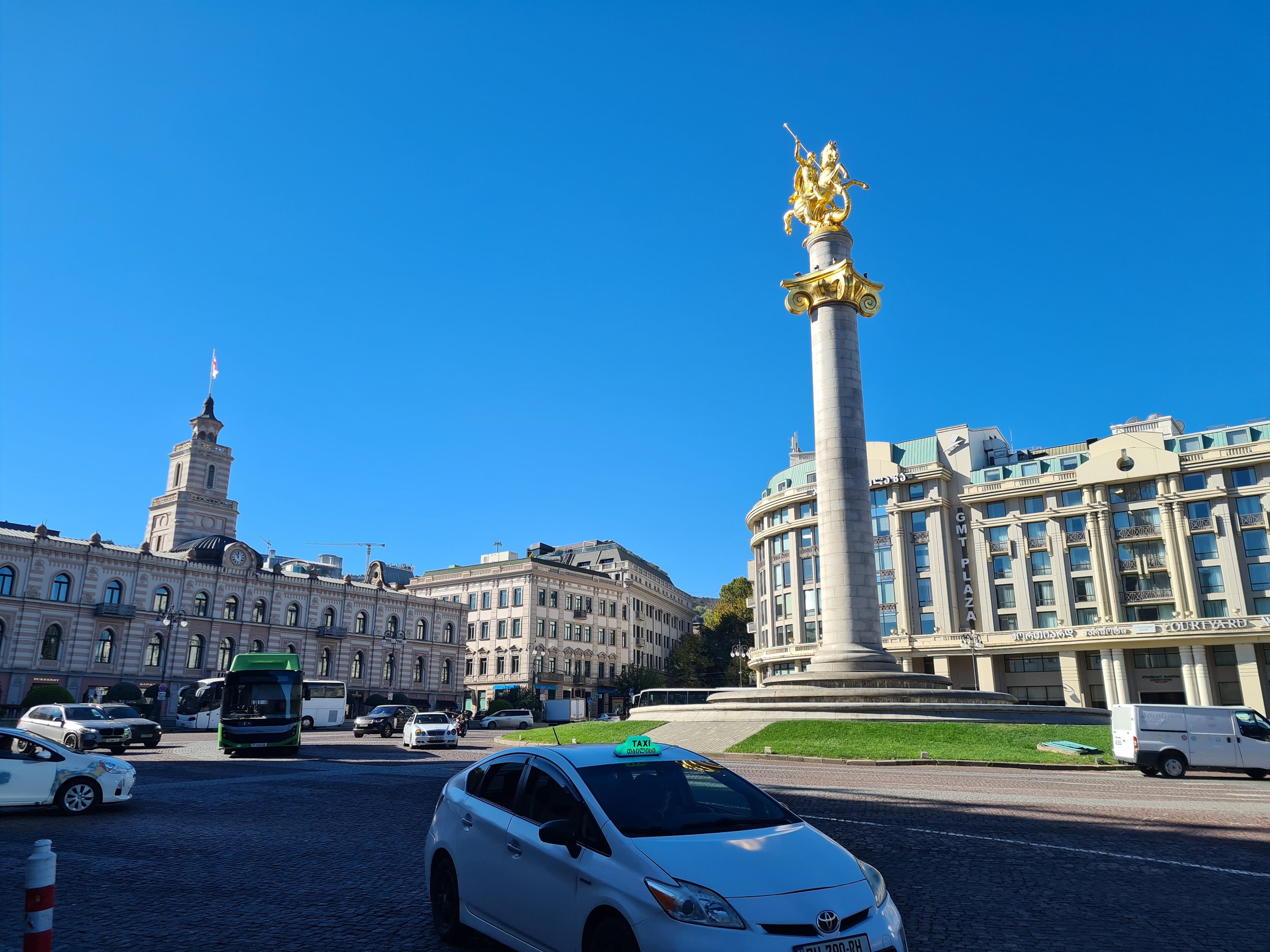


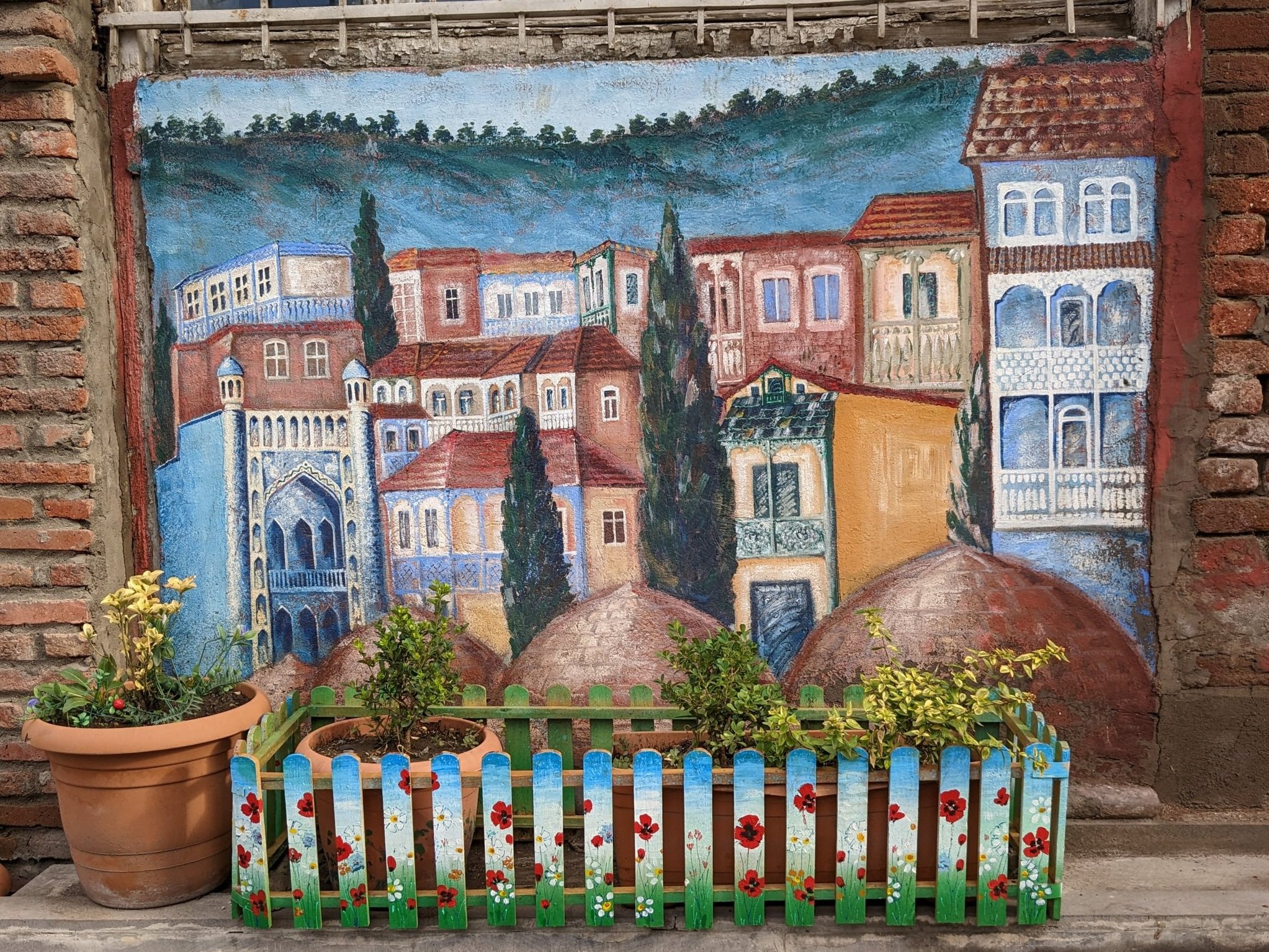
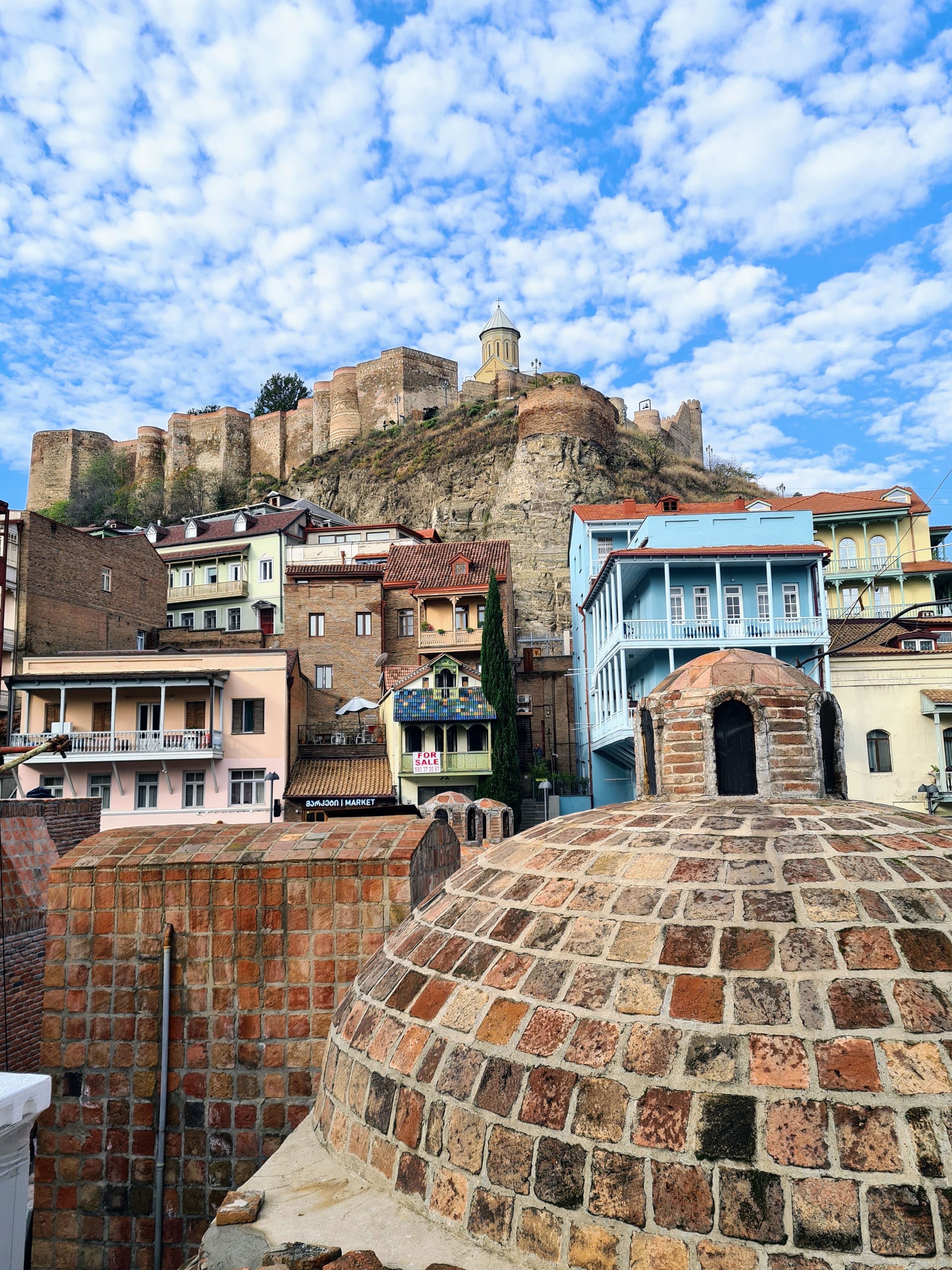
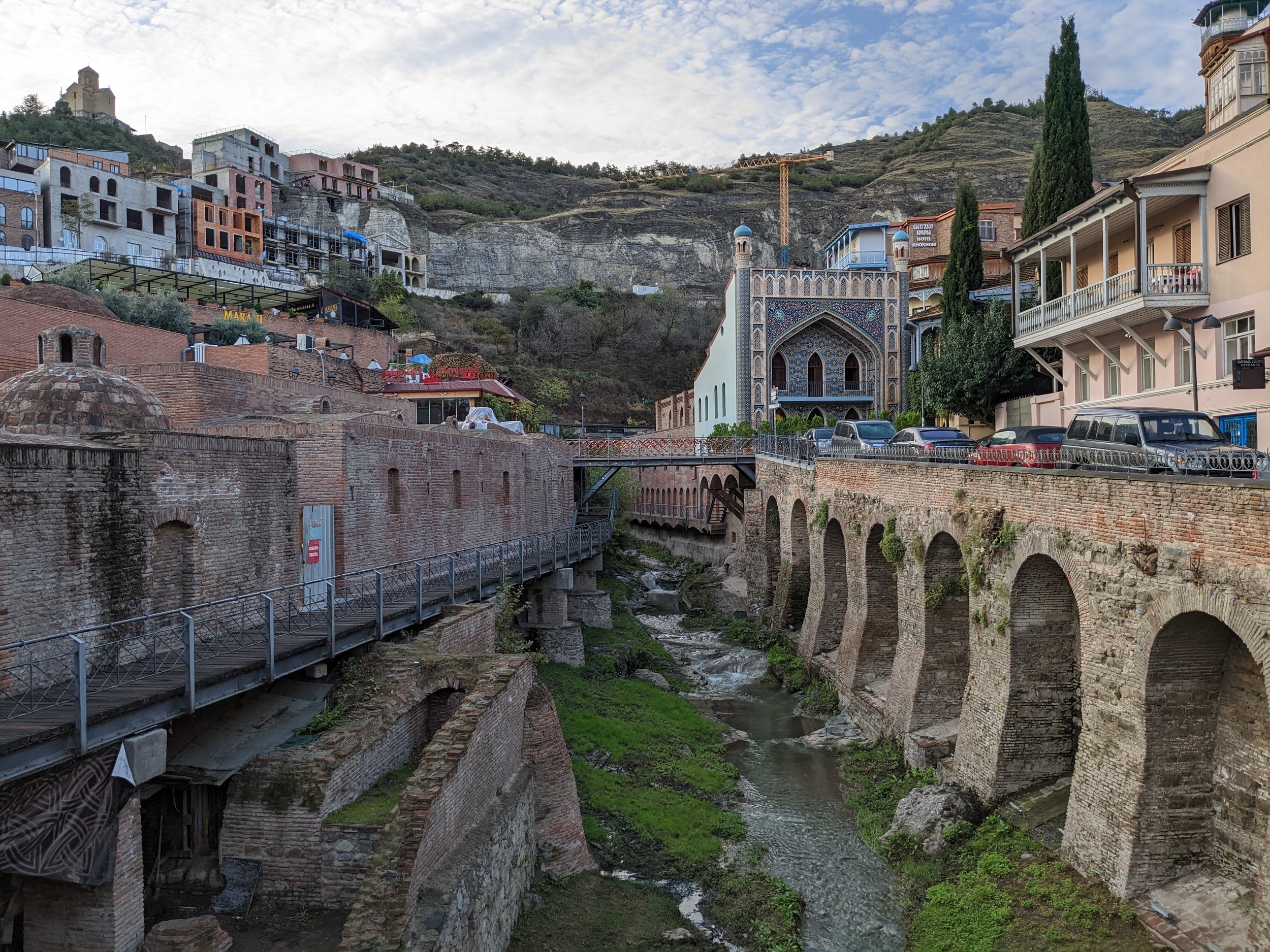

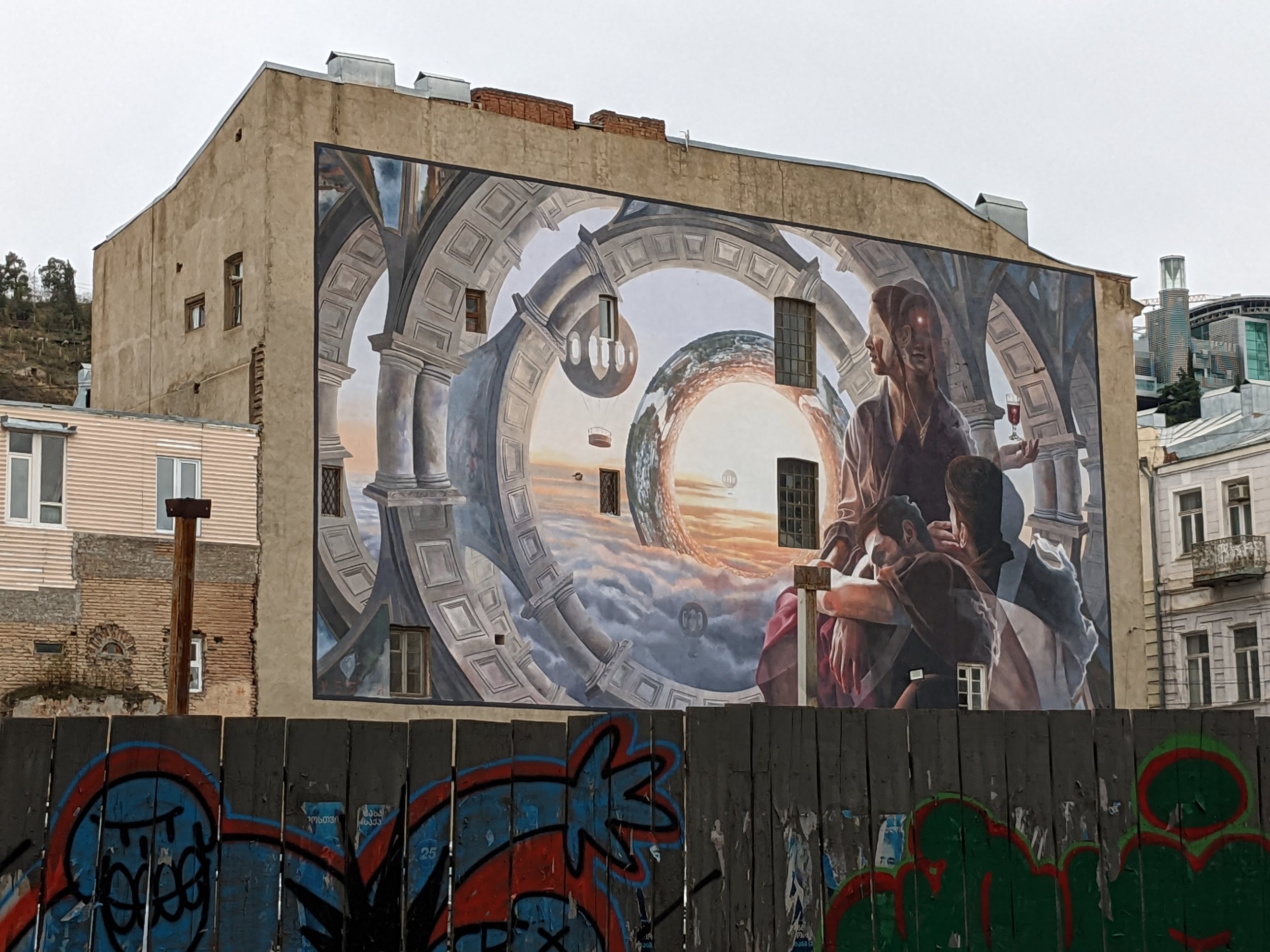
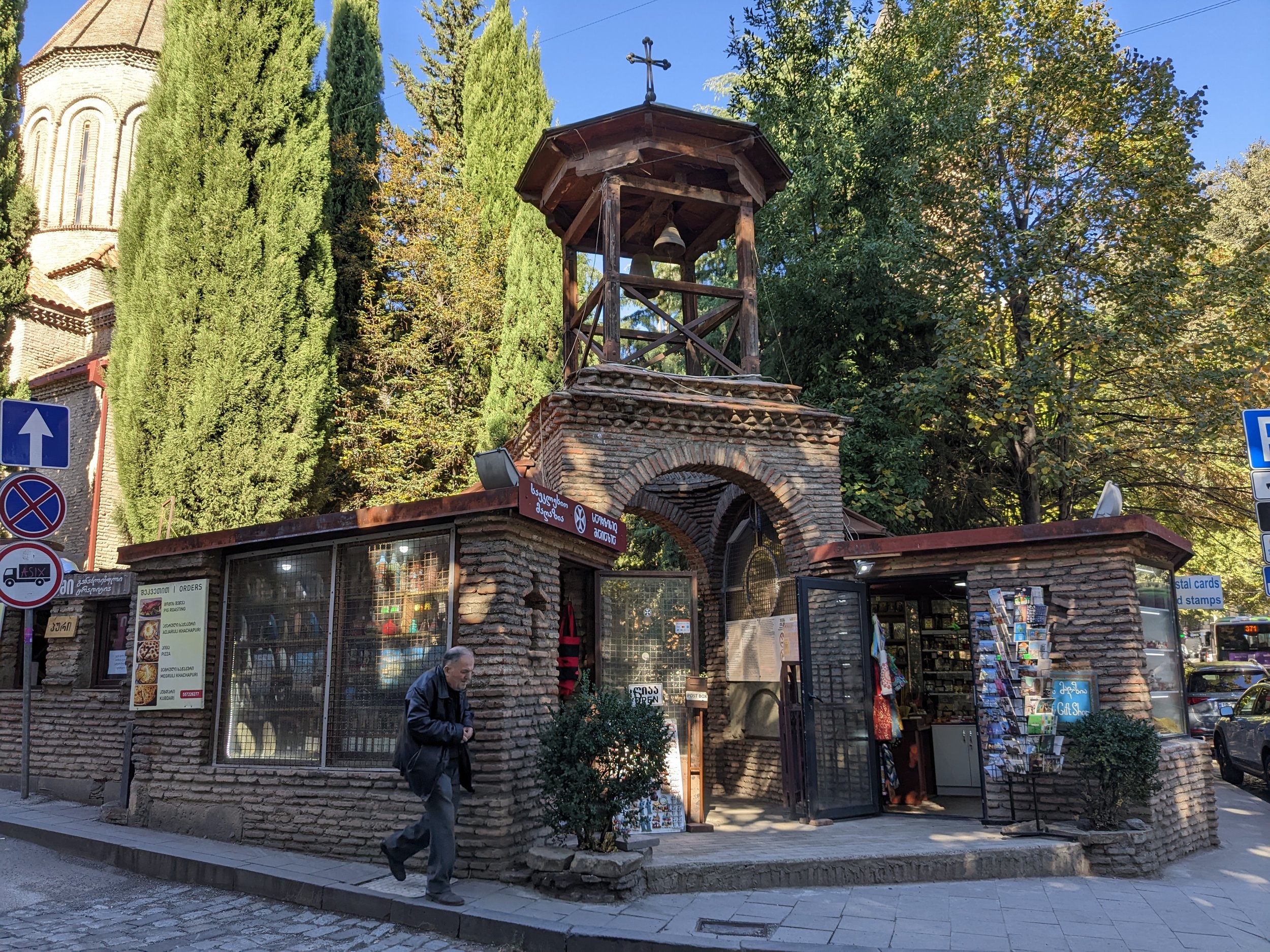

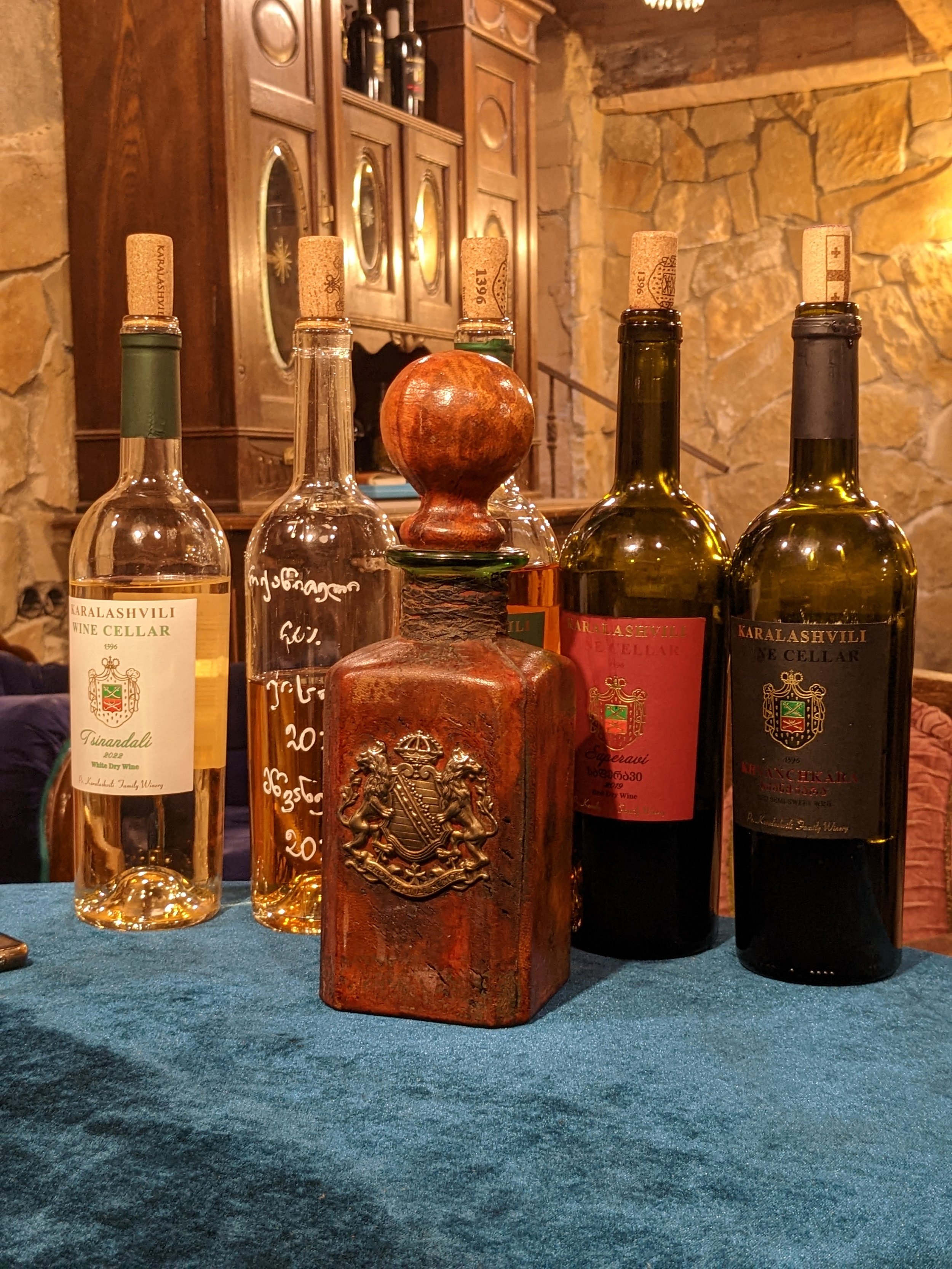

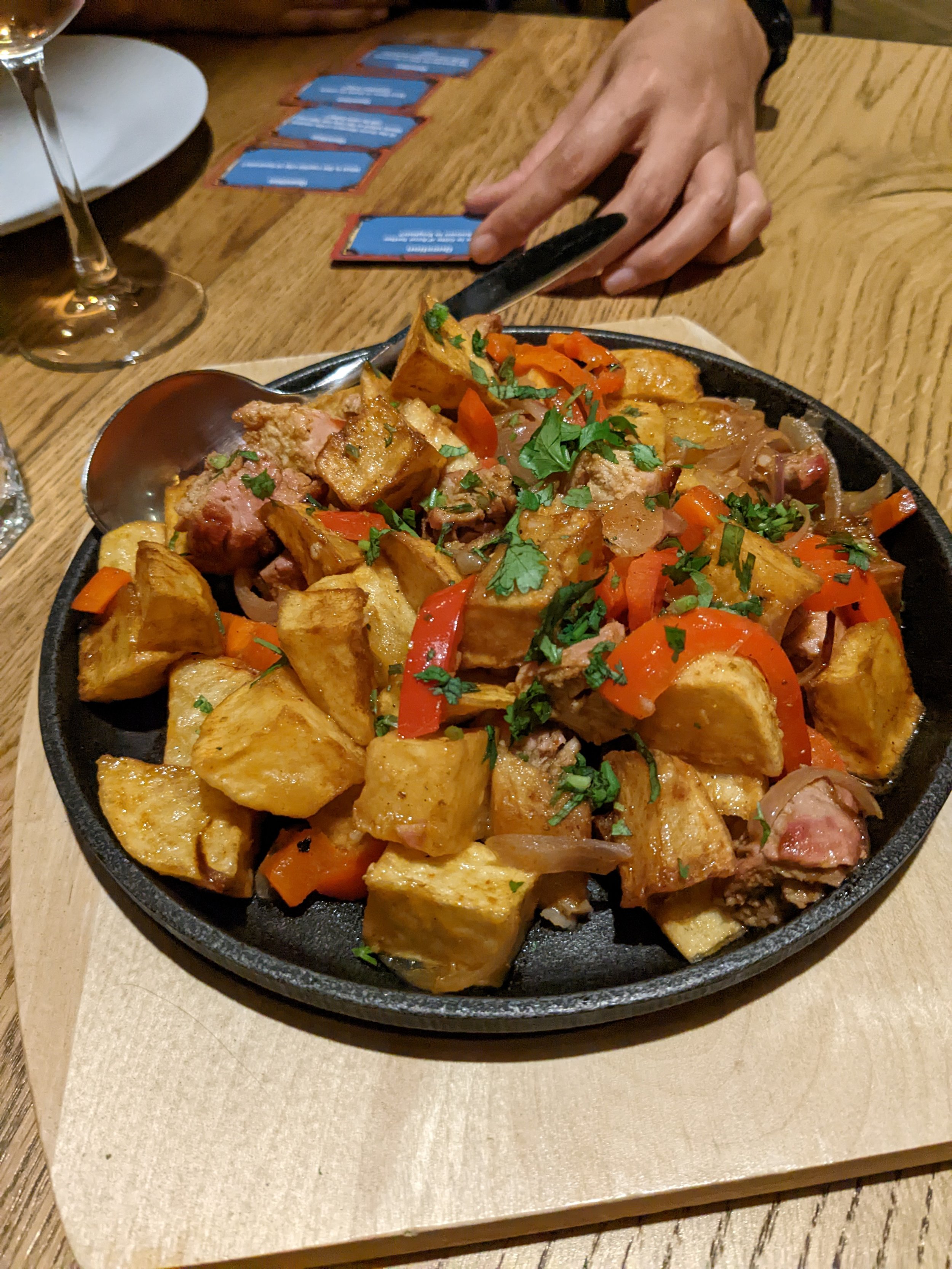
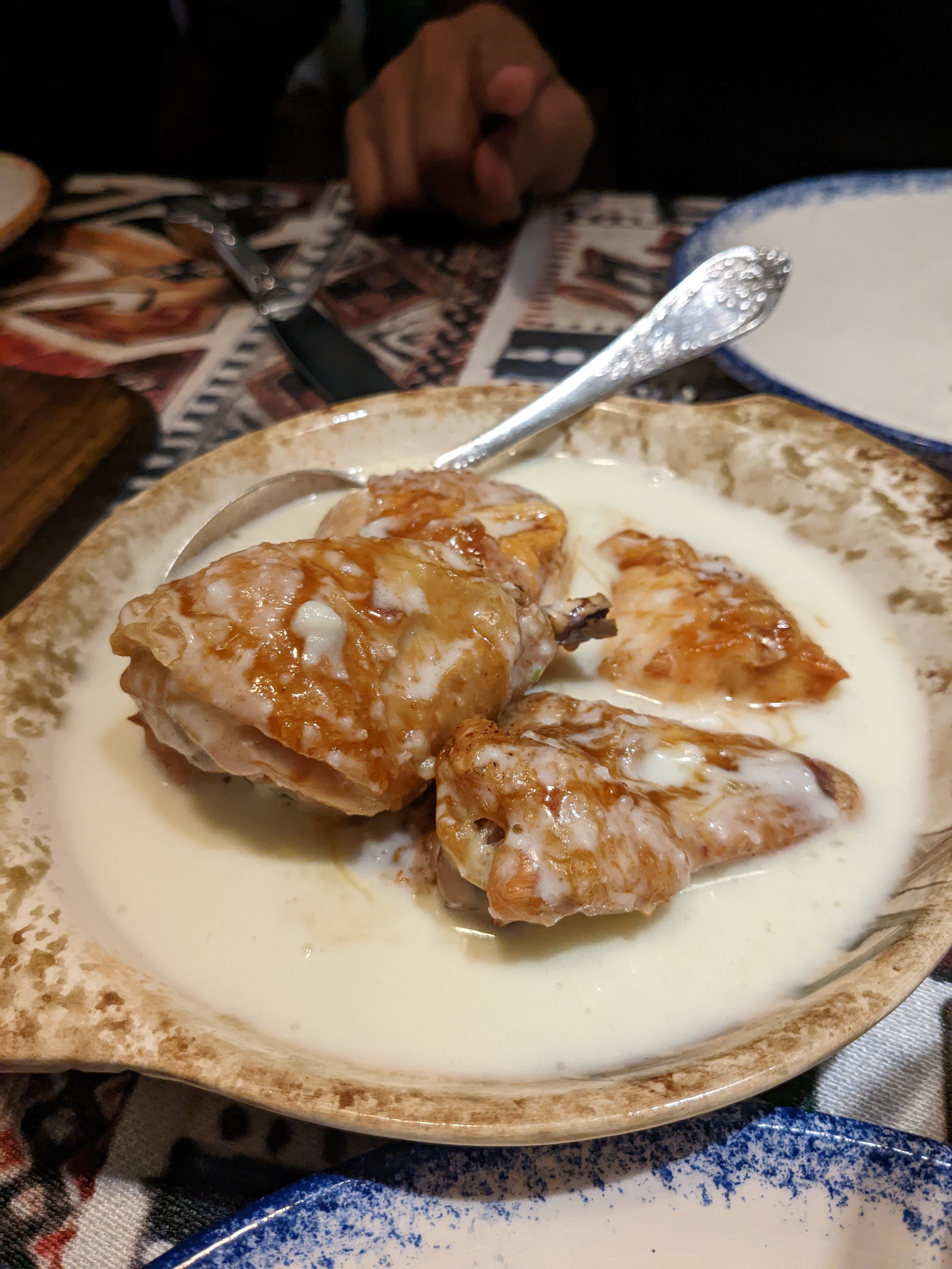
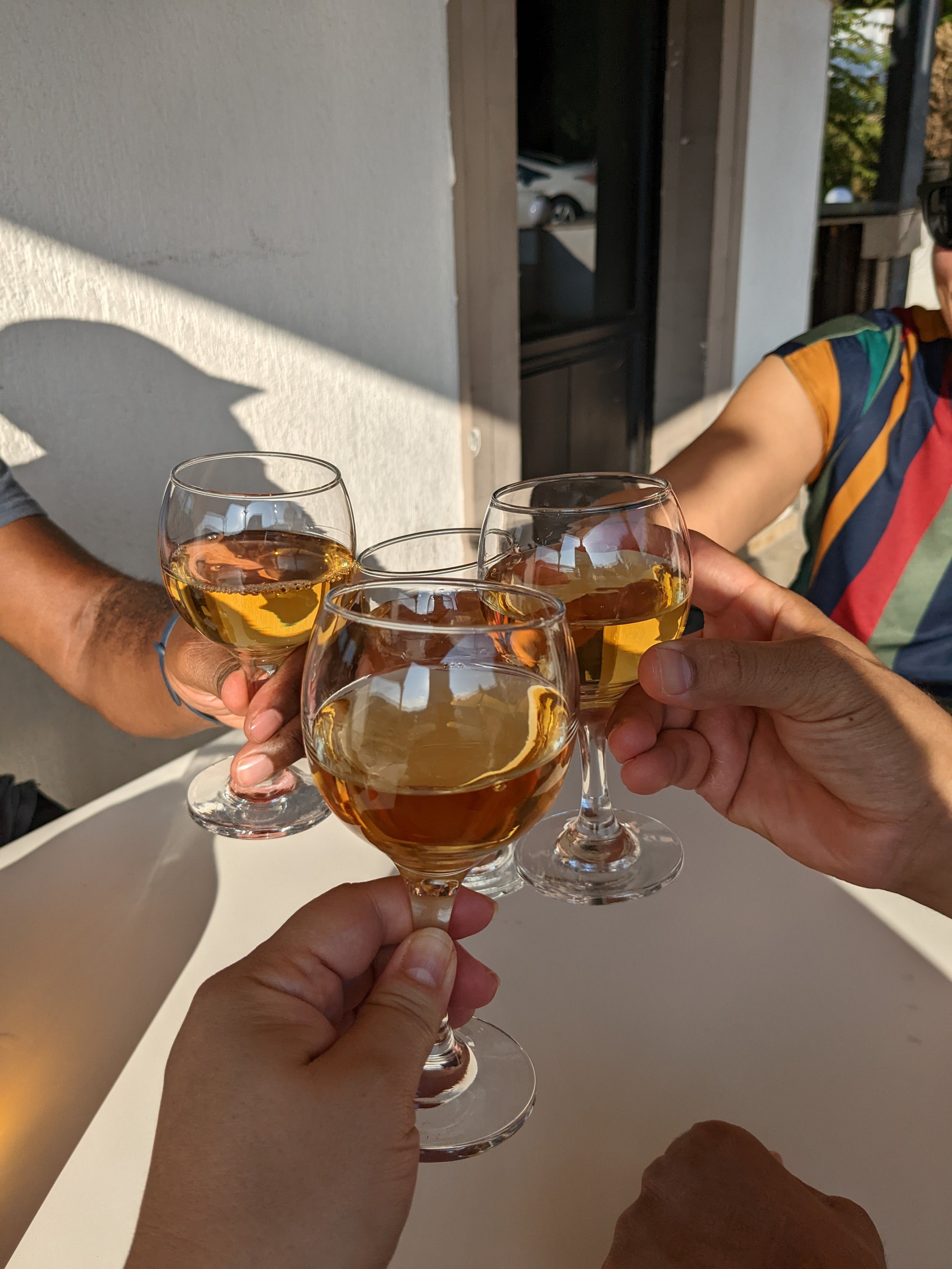

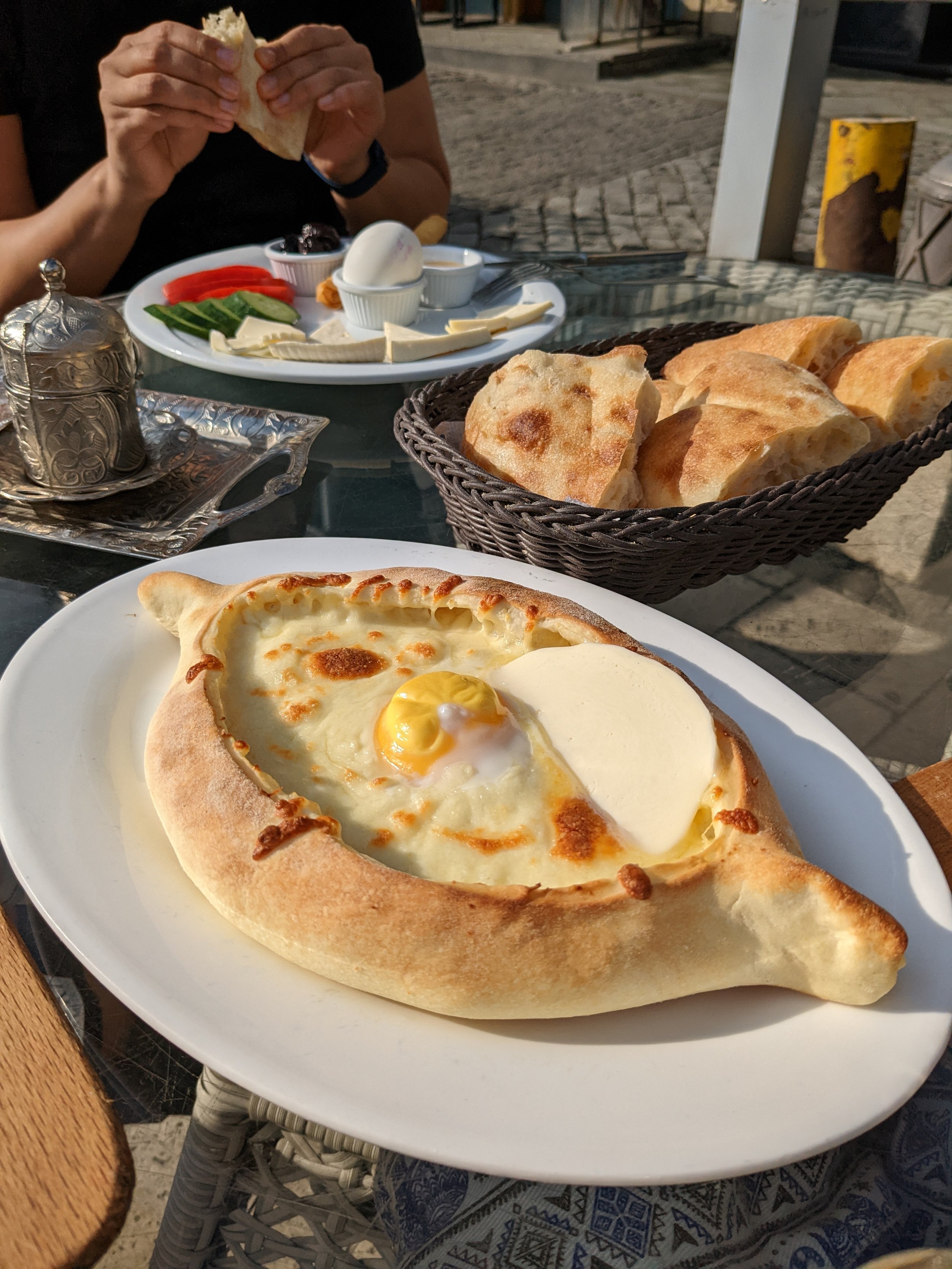
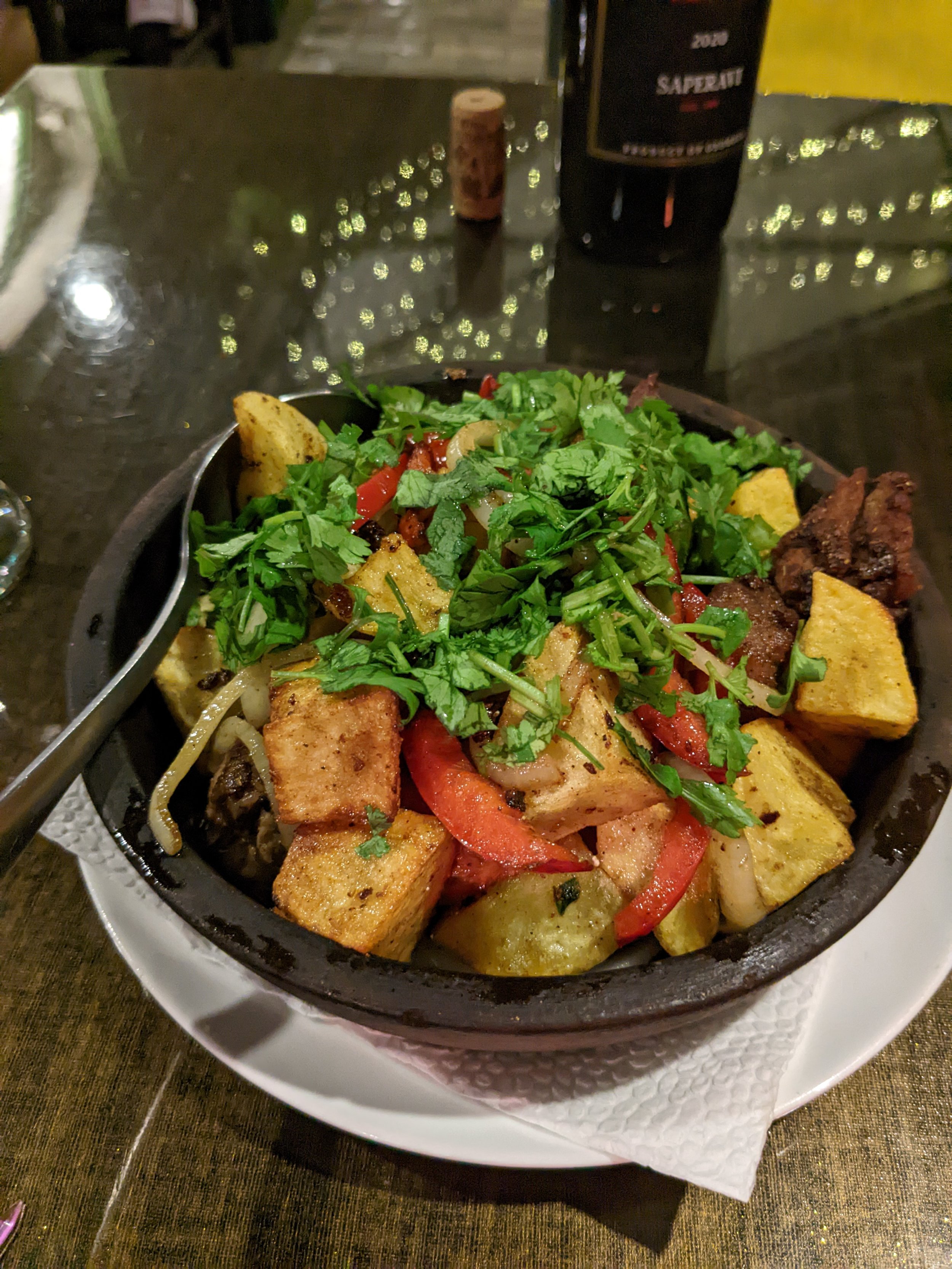
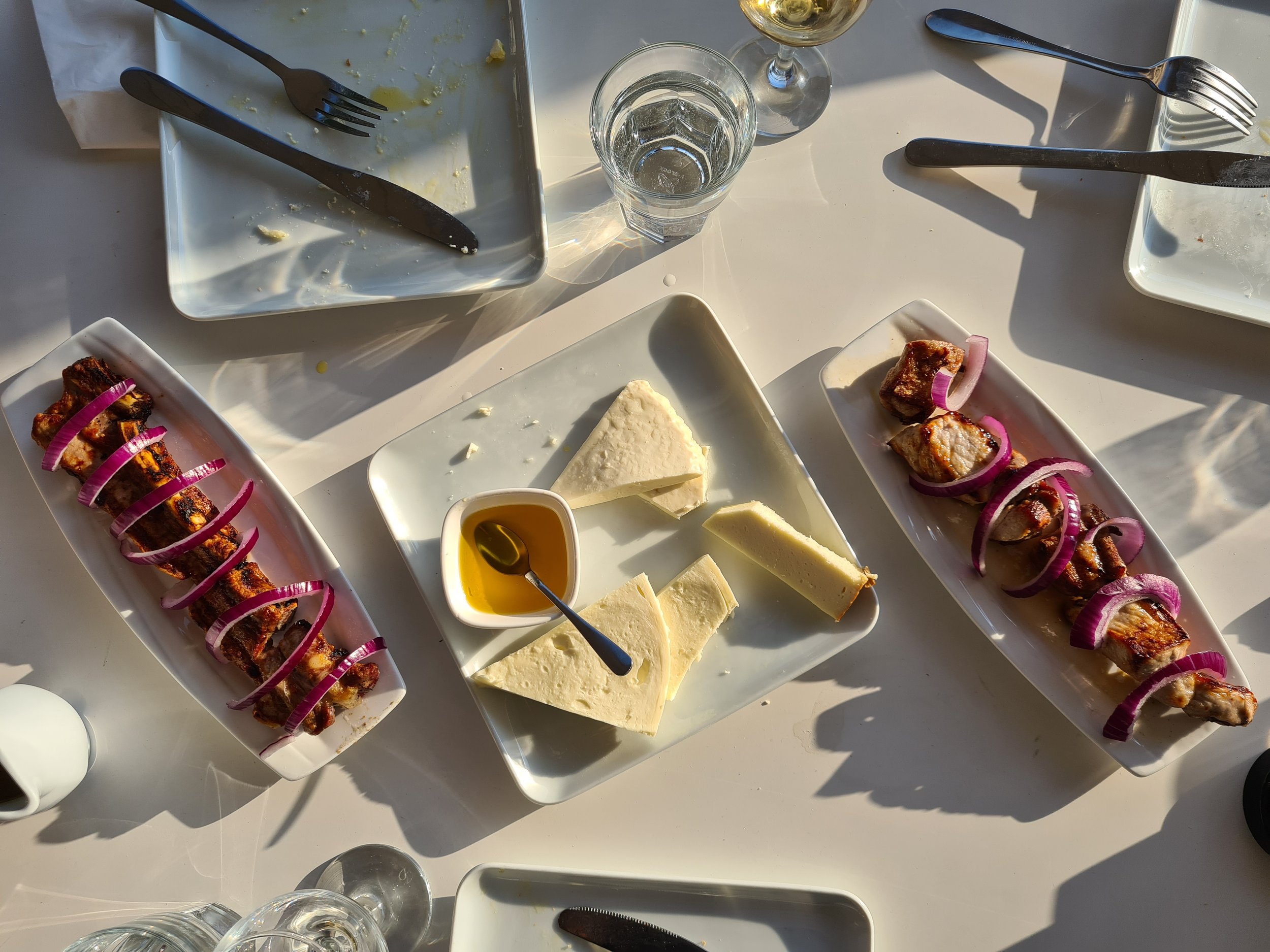

Greece: Four Islands Down 5,996 to Go
Ancient Greece …
Marble statues. Fistfuls of gyros stuffed with fries. Shops tempting you with fresh cones and heaping spoons of delight. My love for Greece began in 1995 when we drove through Thessaloniki and Florence on our way to Albania. This was my first experience with a "water closet." My first time seeing tomatoes the size of apples and experiencing the juiciest peach on the planet. I couldn't stop trying to decipher the Greek alphabet, hoping to be fluent in the blink of an eye.
Even as a 10 year old, I was whisked away by the stories of ancient Greece. Devastated when I learned Sparta wasn't some place I could visit, I threw myself into the gritty city of Athens. I never understood why there were so many naked statues but I stood in awe of the towering columns, the remnants of a mighty culture. Those memories of windy roads through the hillside, the monasteries peering at us barely holding onto the cliffs above.
I fell further in love in 2004, when my family and I joined a few others for an outreach program during the Olympics. Maybe it was the hustle of thousands coming together to celebrate their country's achievement. Those memories are deeply etched into my minds, the smells and sights still fresh.
This is why I was beyond excited to take Nate to a place filled with history, laughter and street cats. Actually, the street cats are a new thing, but I digress.
As hardworking teachers and a childless couple, we have the luxury of traveling with loose plans. A home base is all we need to throw our packs and then head out to explore the neighborhood. Yes, we center our trips on food, but mainly look for those places that beckon to you as you walk by. Not with sun-faded pictures but with the laughter of old friends—the kind of place the homies spend hours talking shop or remembering the past. We've come to adopt the rule of 4. That is, if a place has four old dudes sitting together day drinking, it's like a Michelin star. We've got to stop.
We purchased our tickets over a year ago but life got in the way and we postponed this trip a few times. So when we finally landed and hopped onto the metro, I was relieved. 10 days to experience the richness of Greek life and culture.
Our itinerary was simple. Athens and then some islands. Four days in the city flew by as we mobbed through the city, made guesses about where Socrates stood, and met up with colleagues for a glorious dinner of wine, Greek salad and grilled meats. The Parthenon and the Agora still held the wonder I felt as a child.




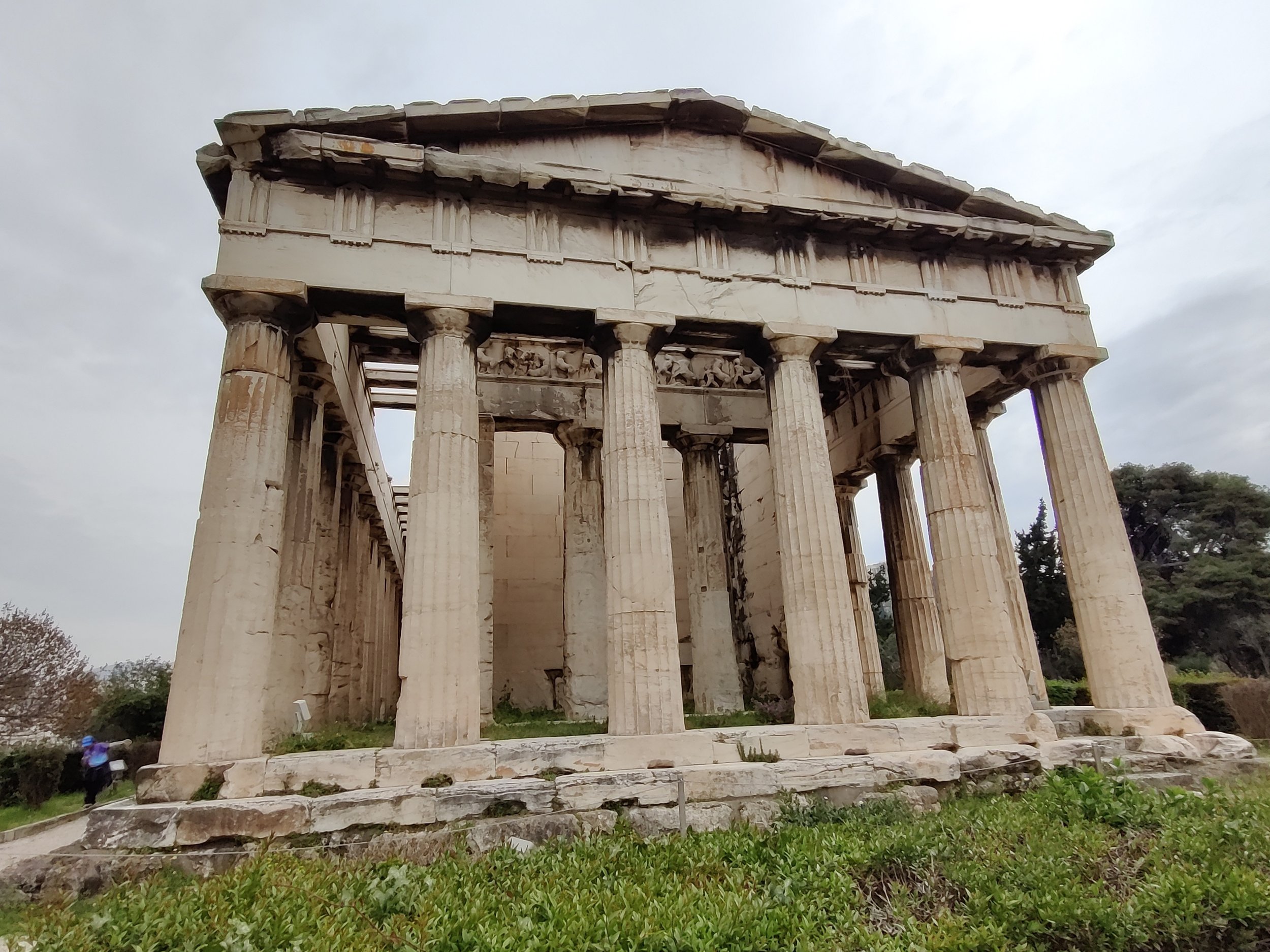
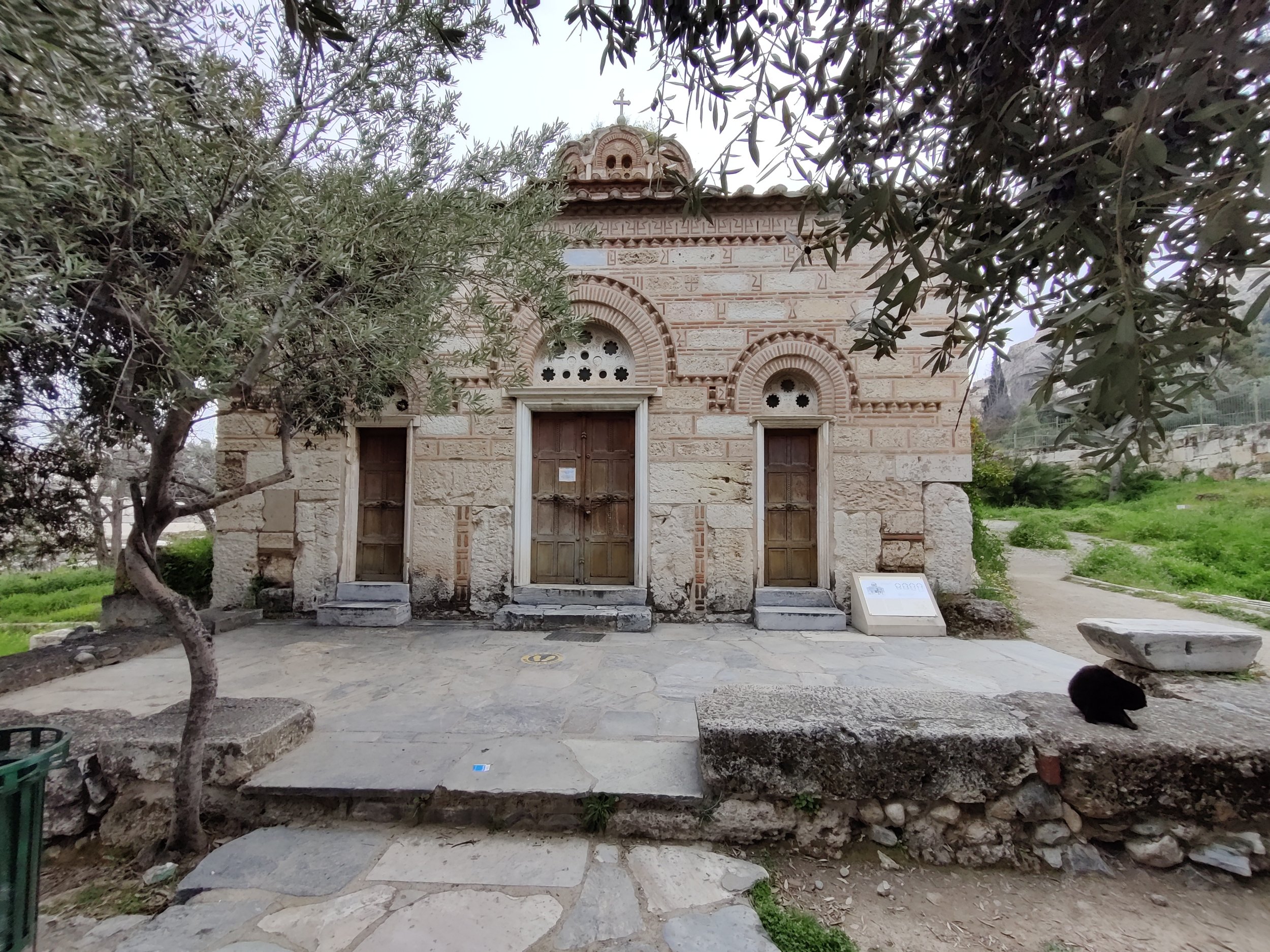
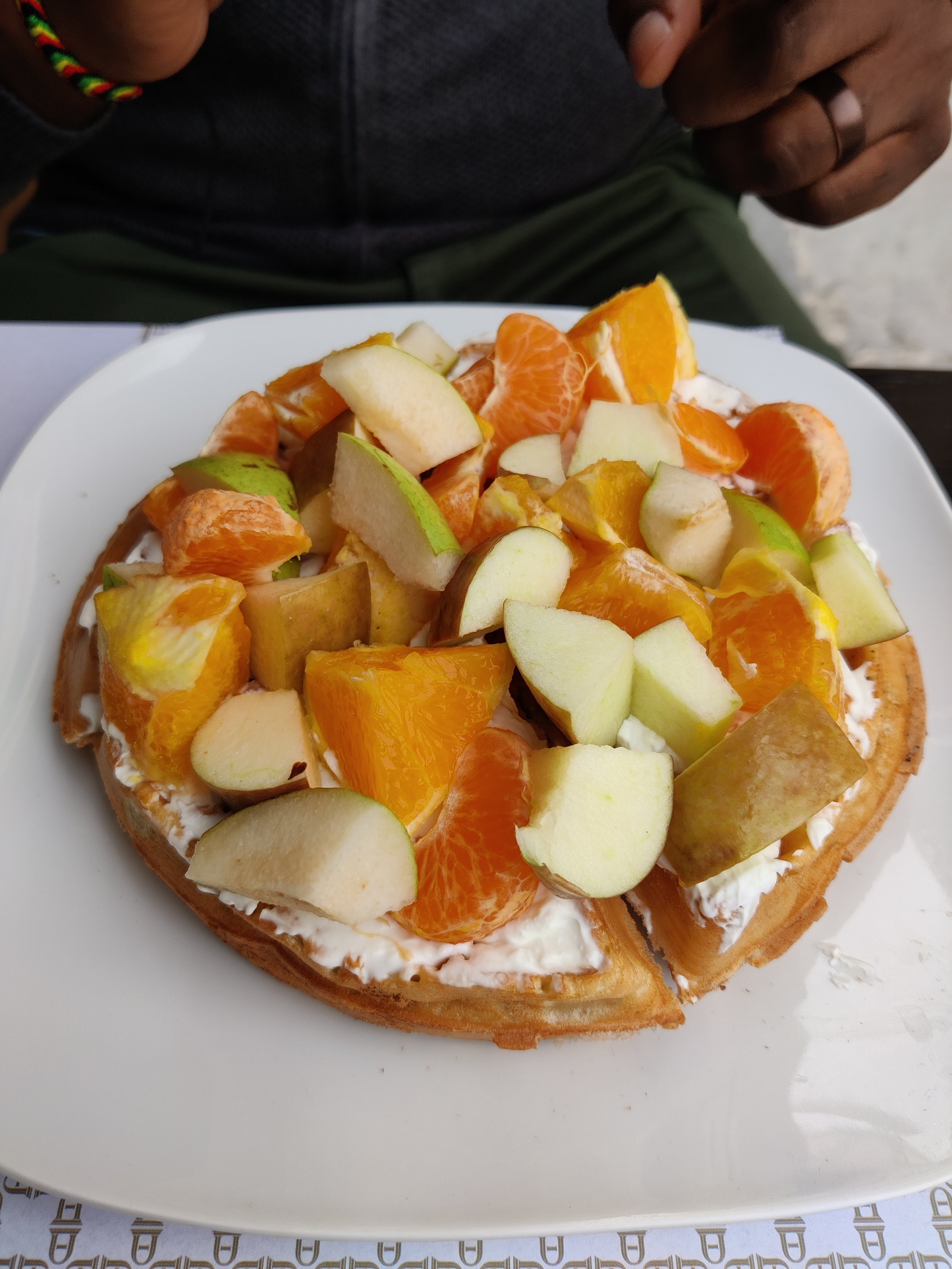
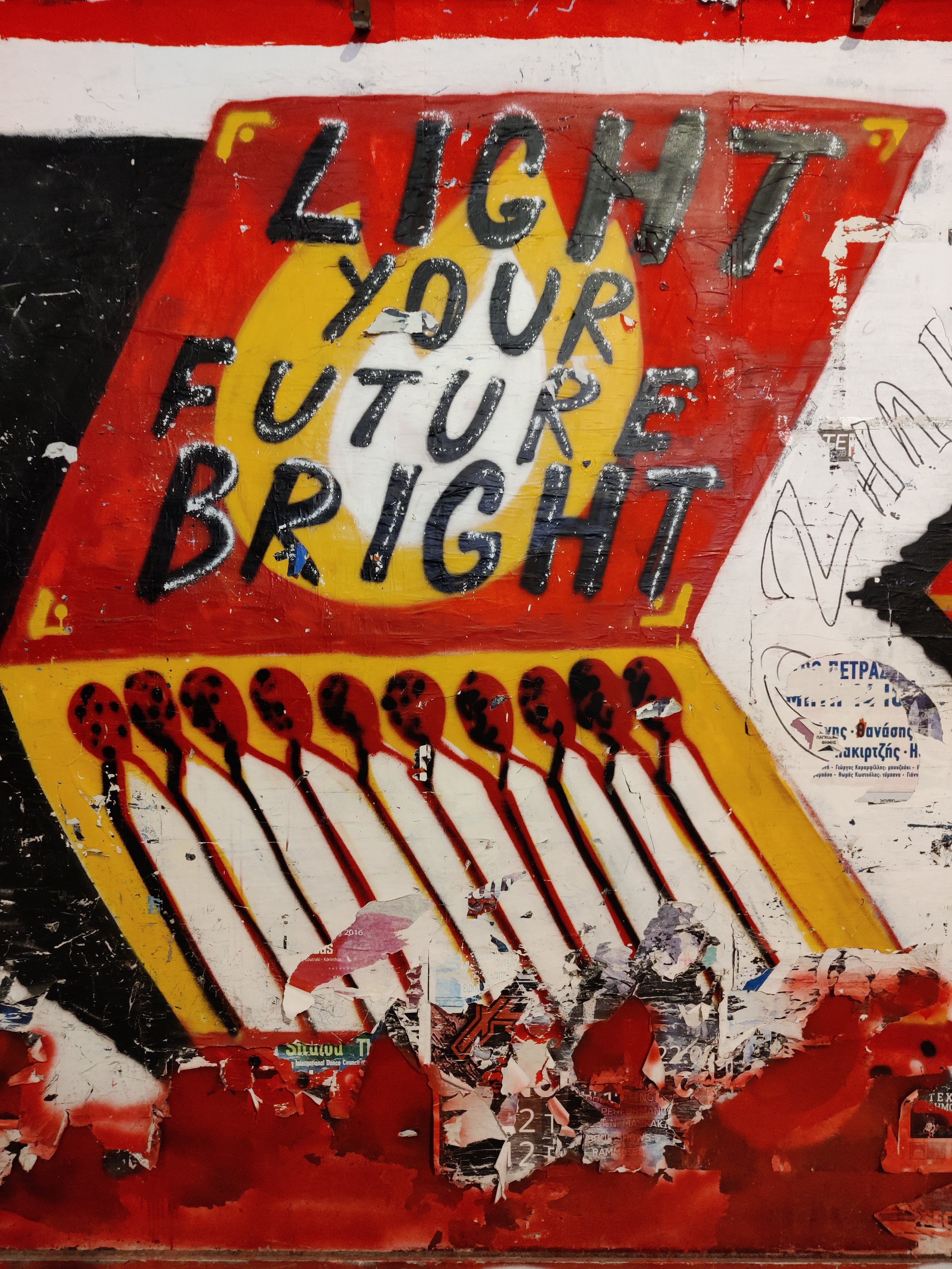
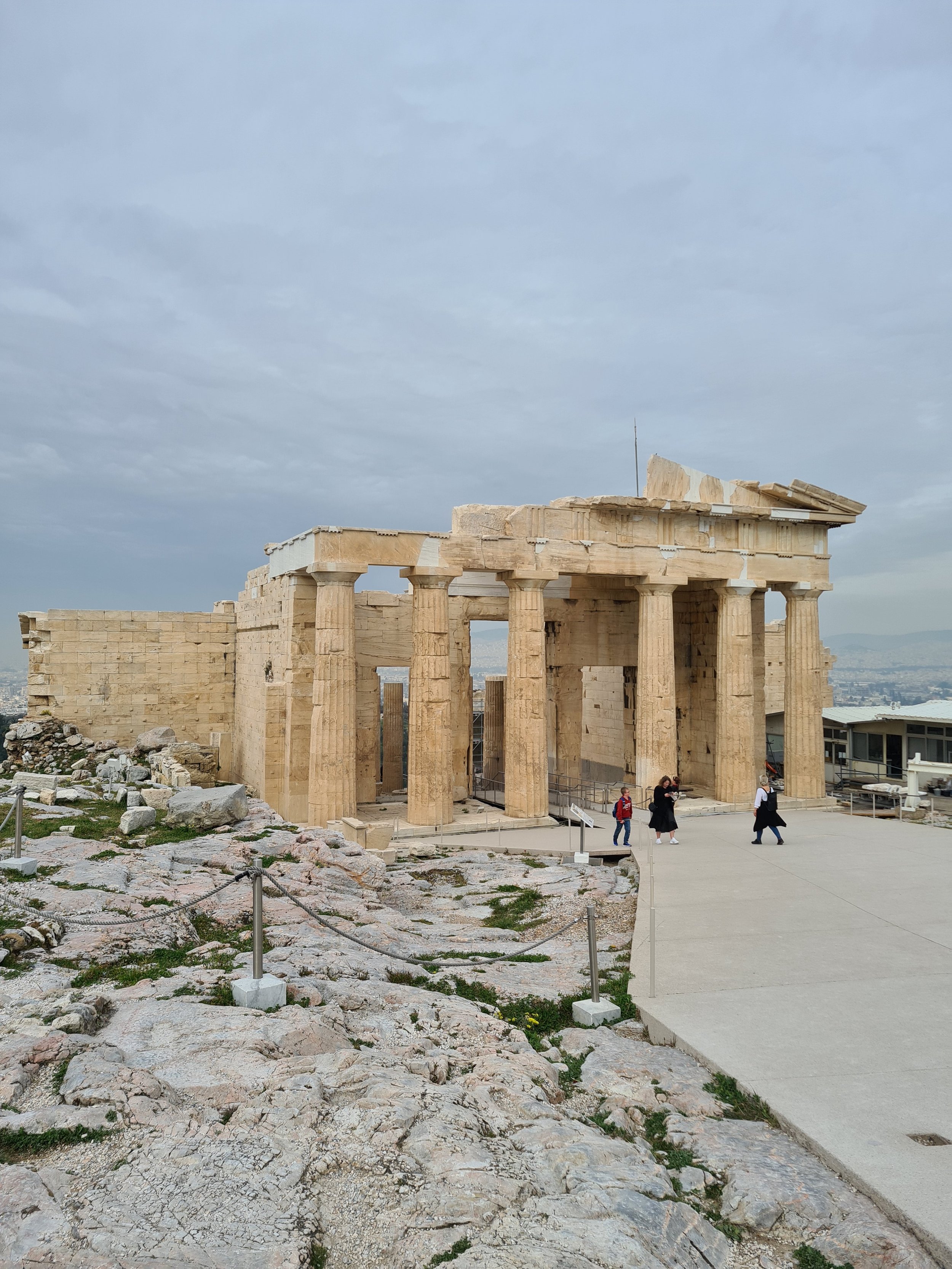
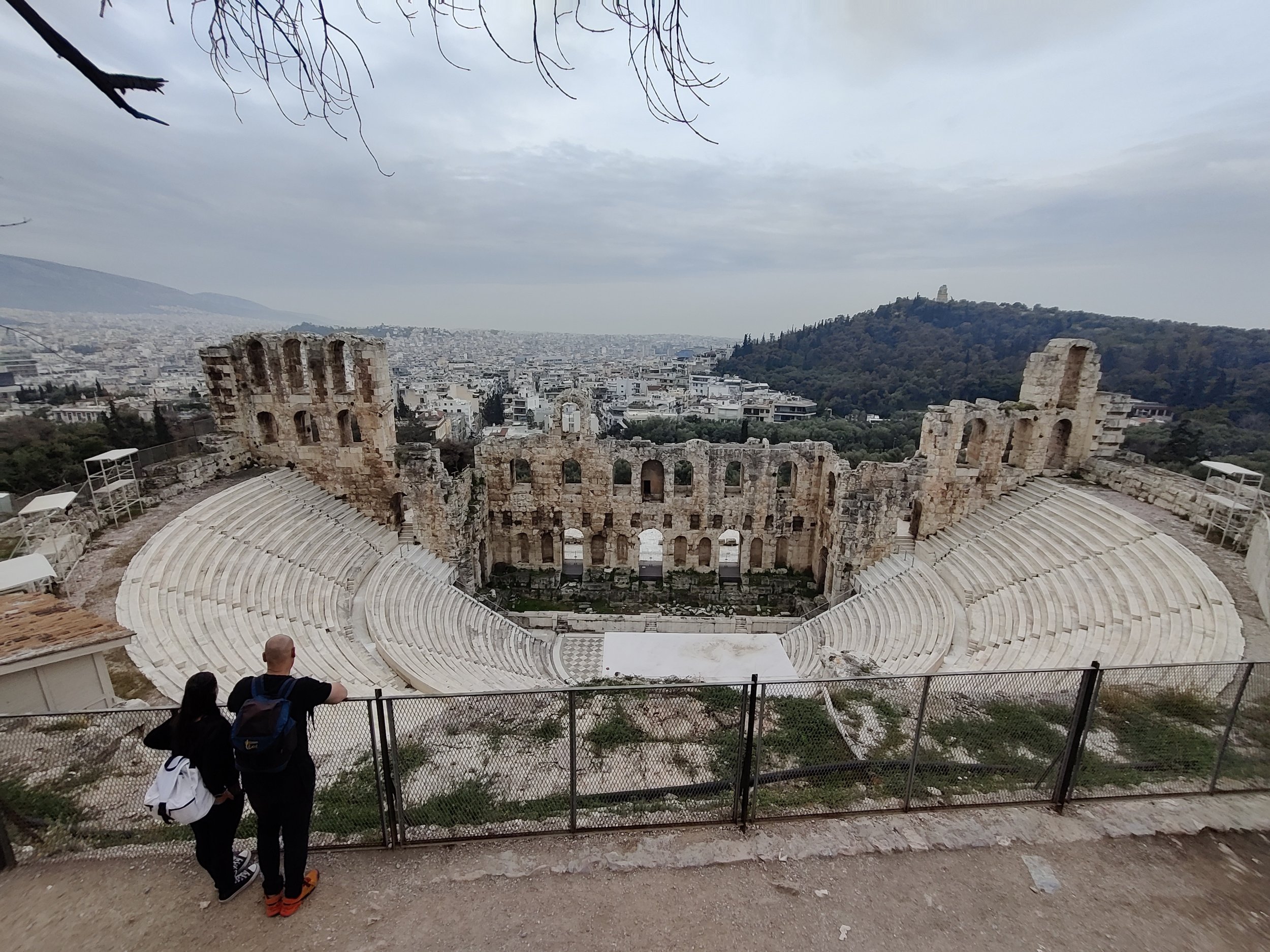

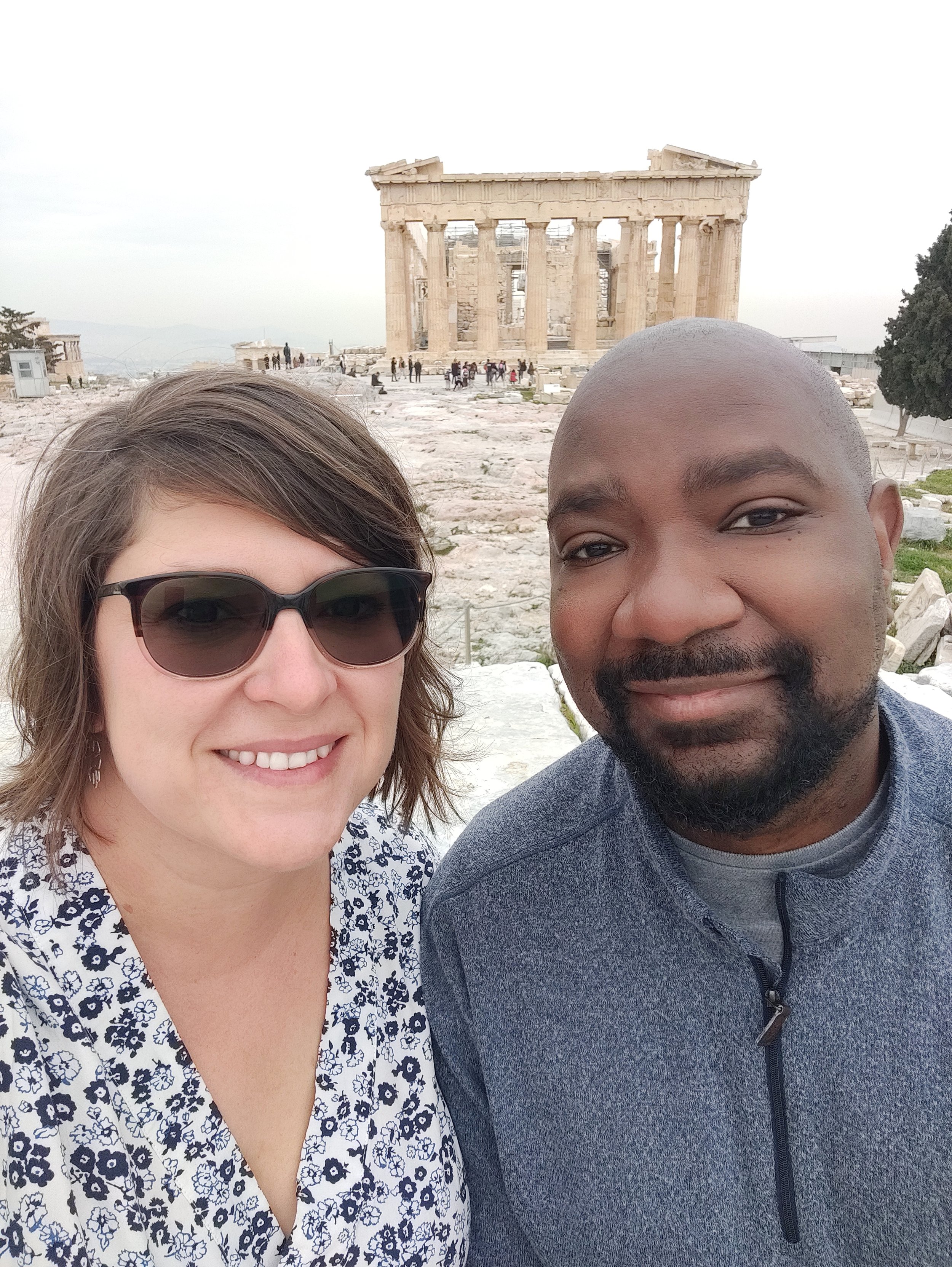
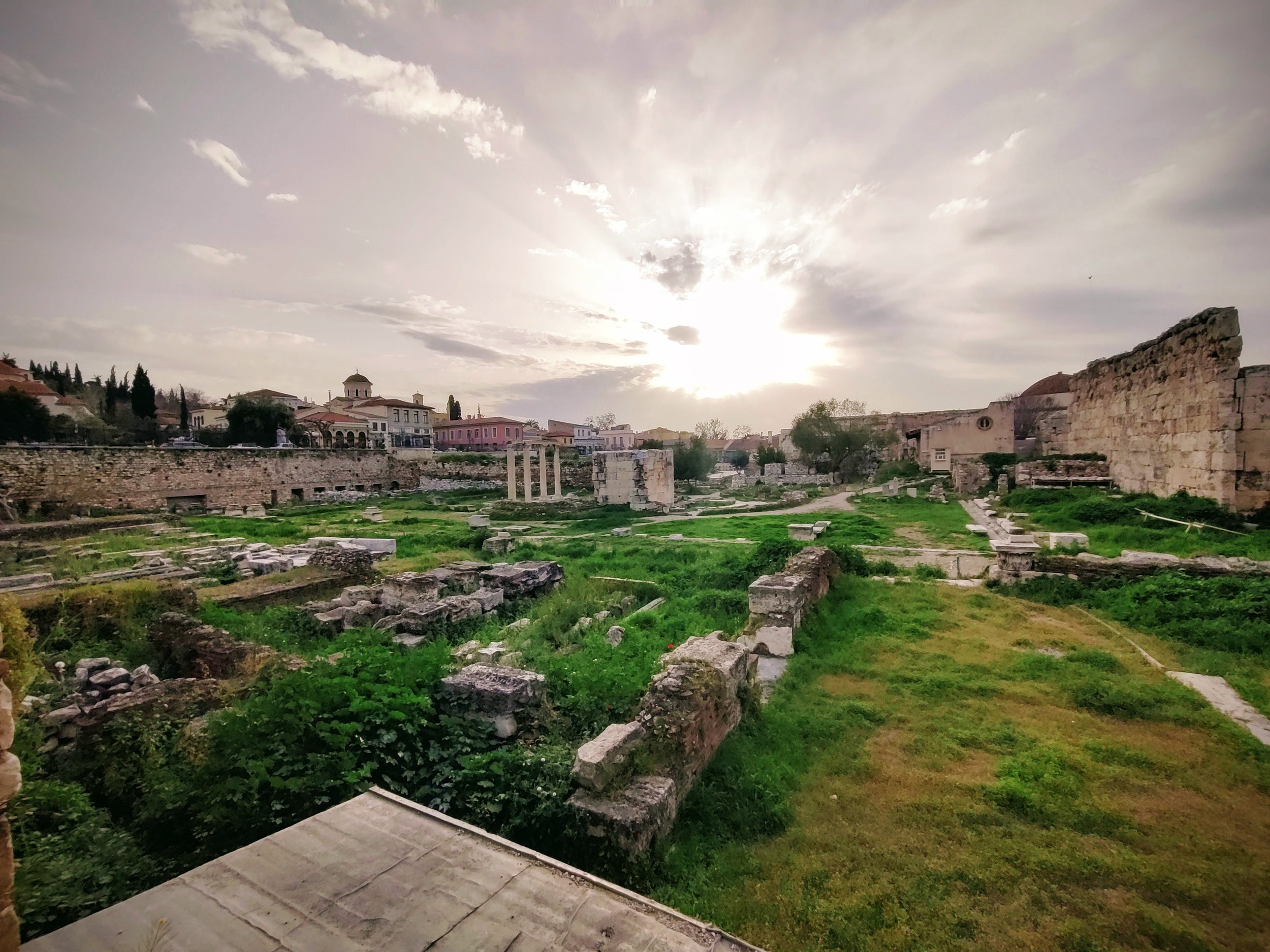
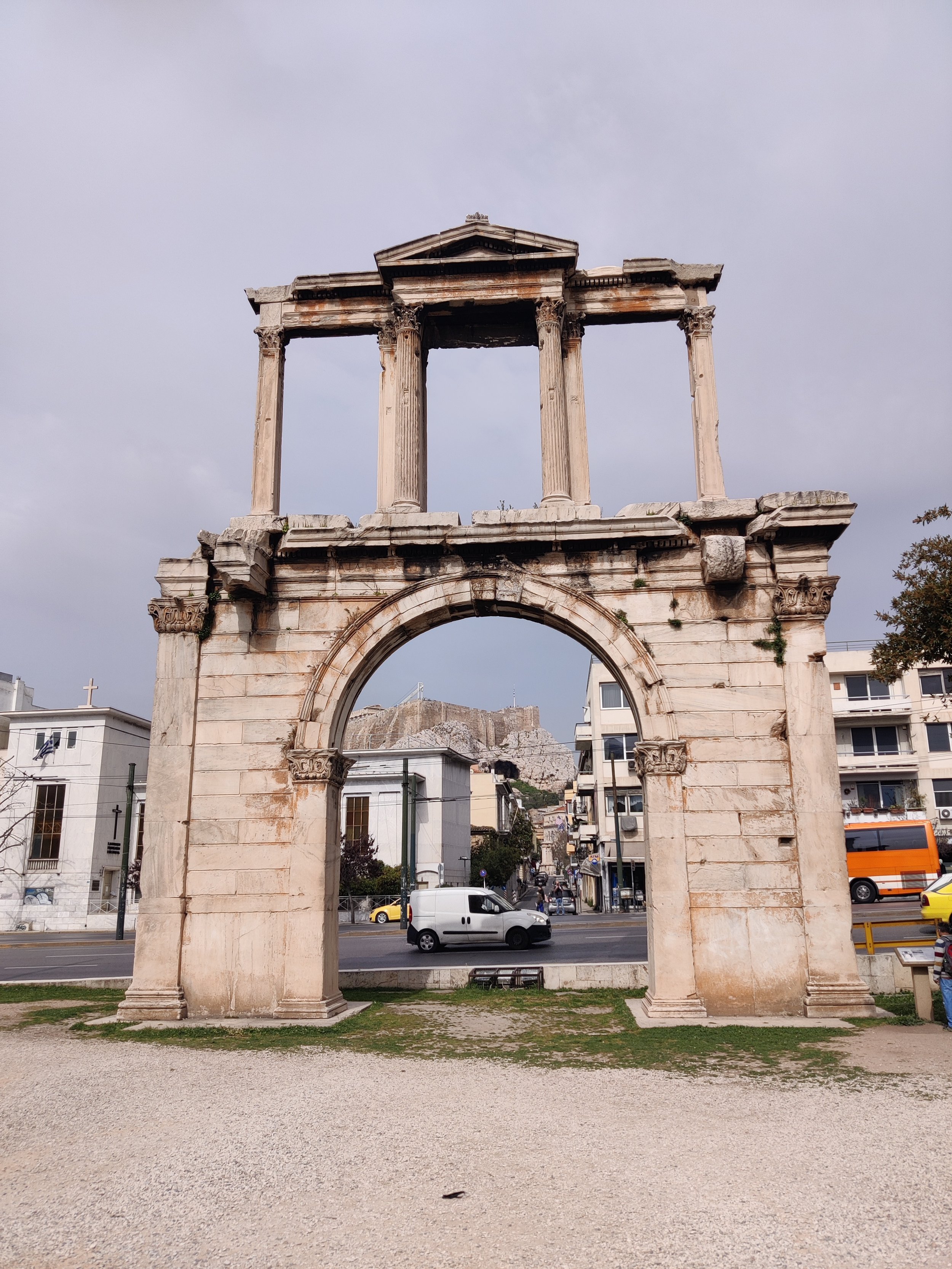
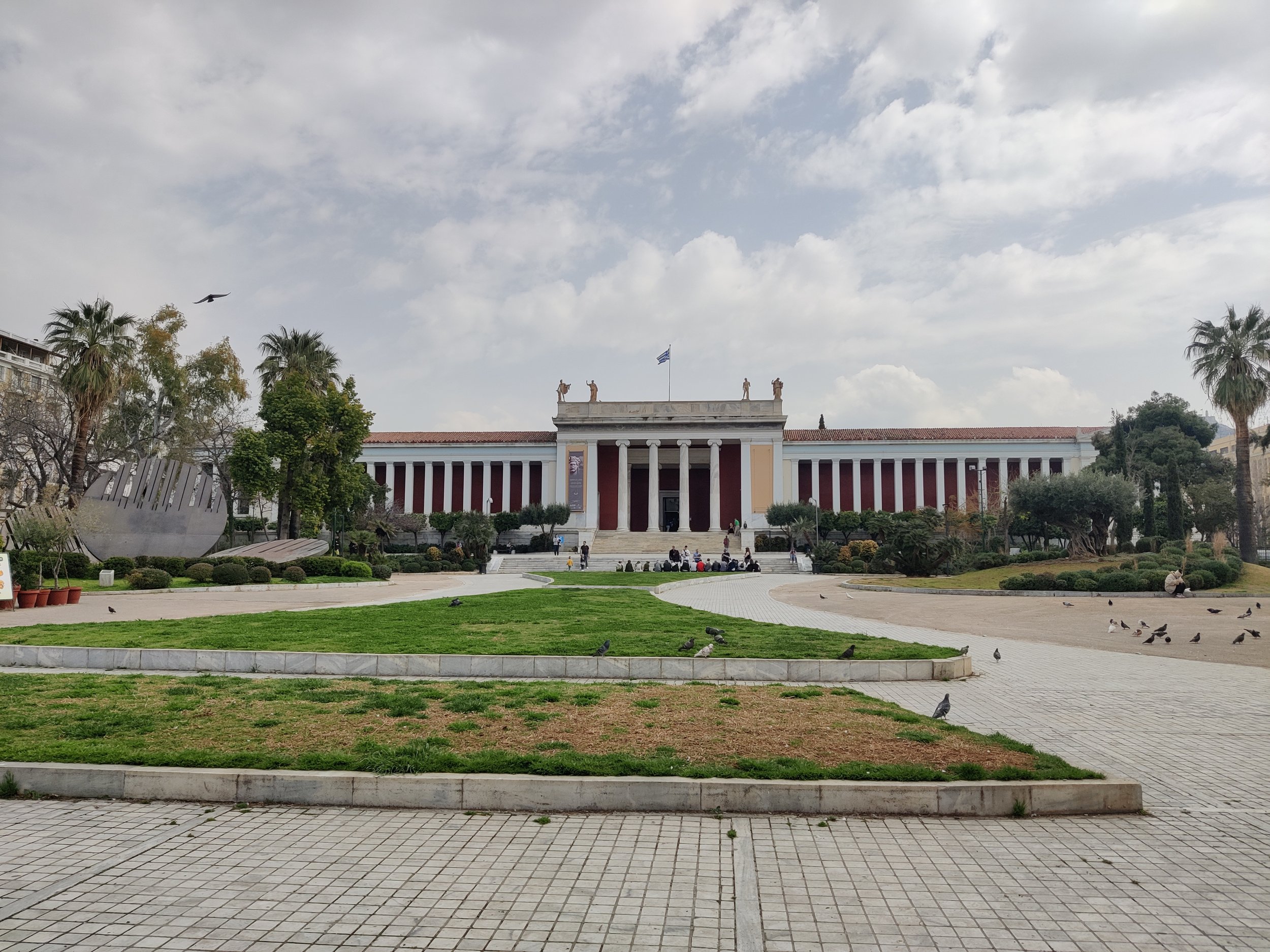
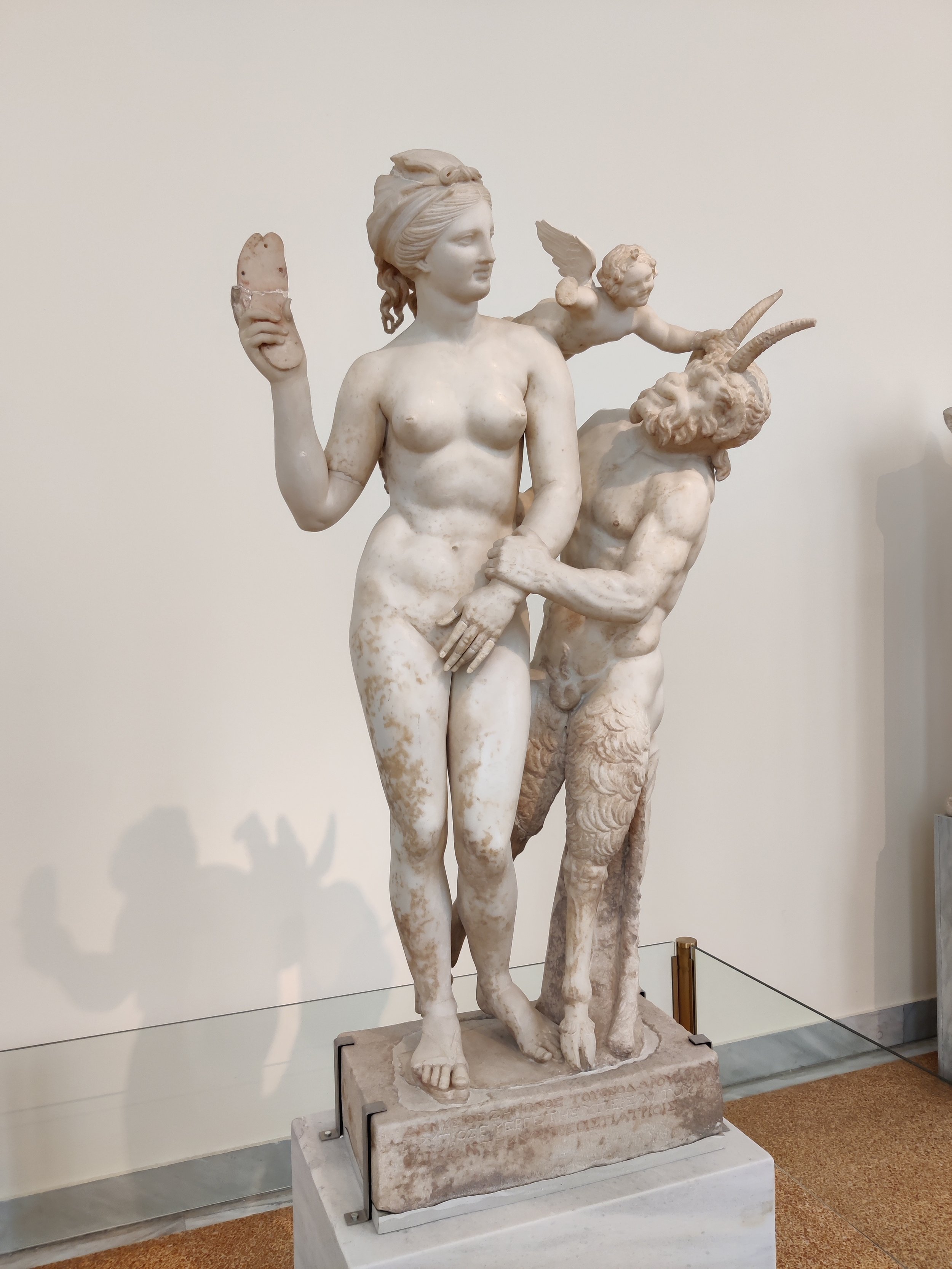

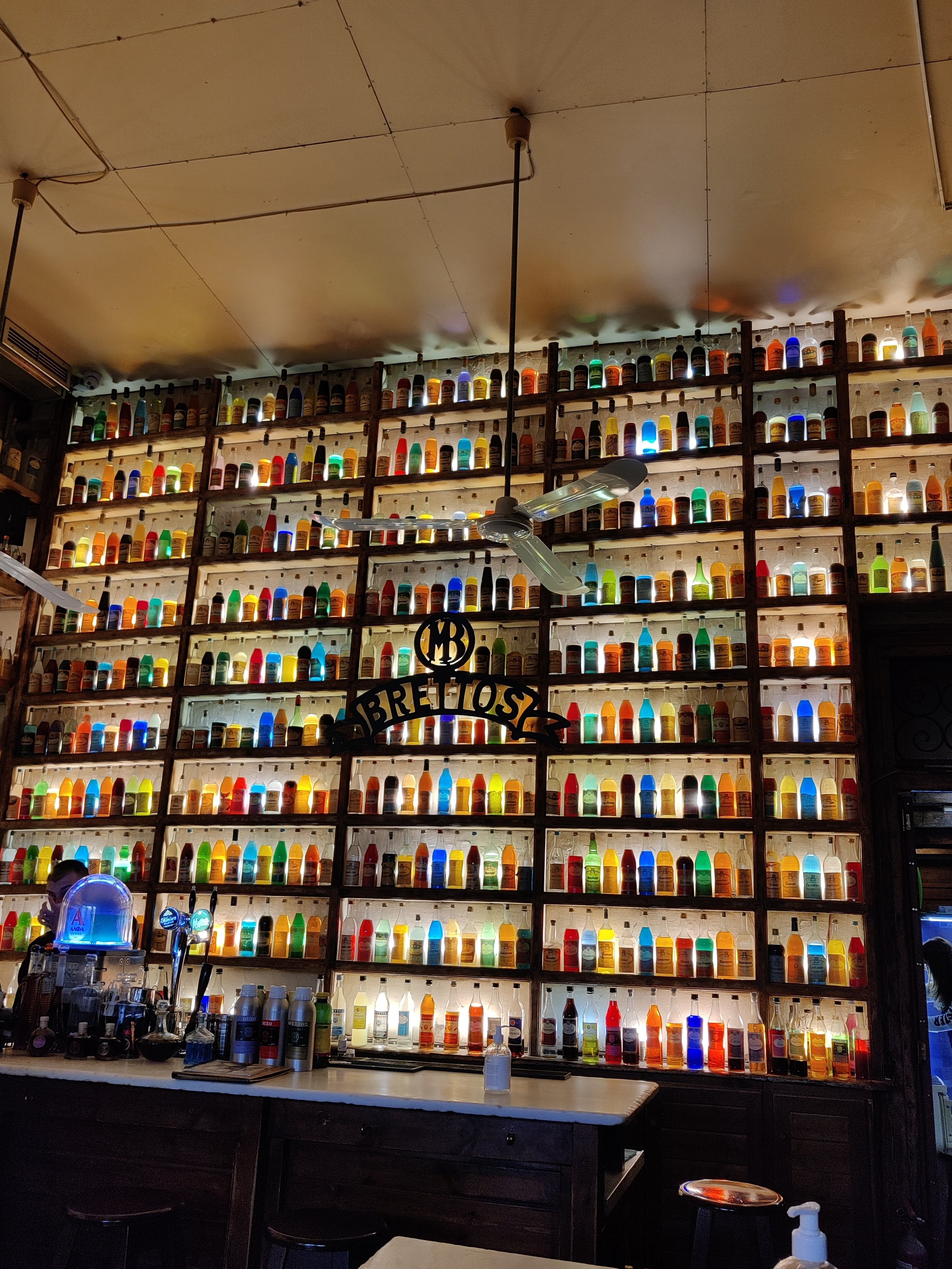
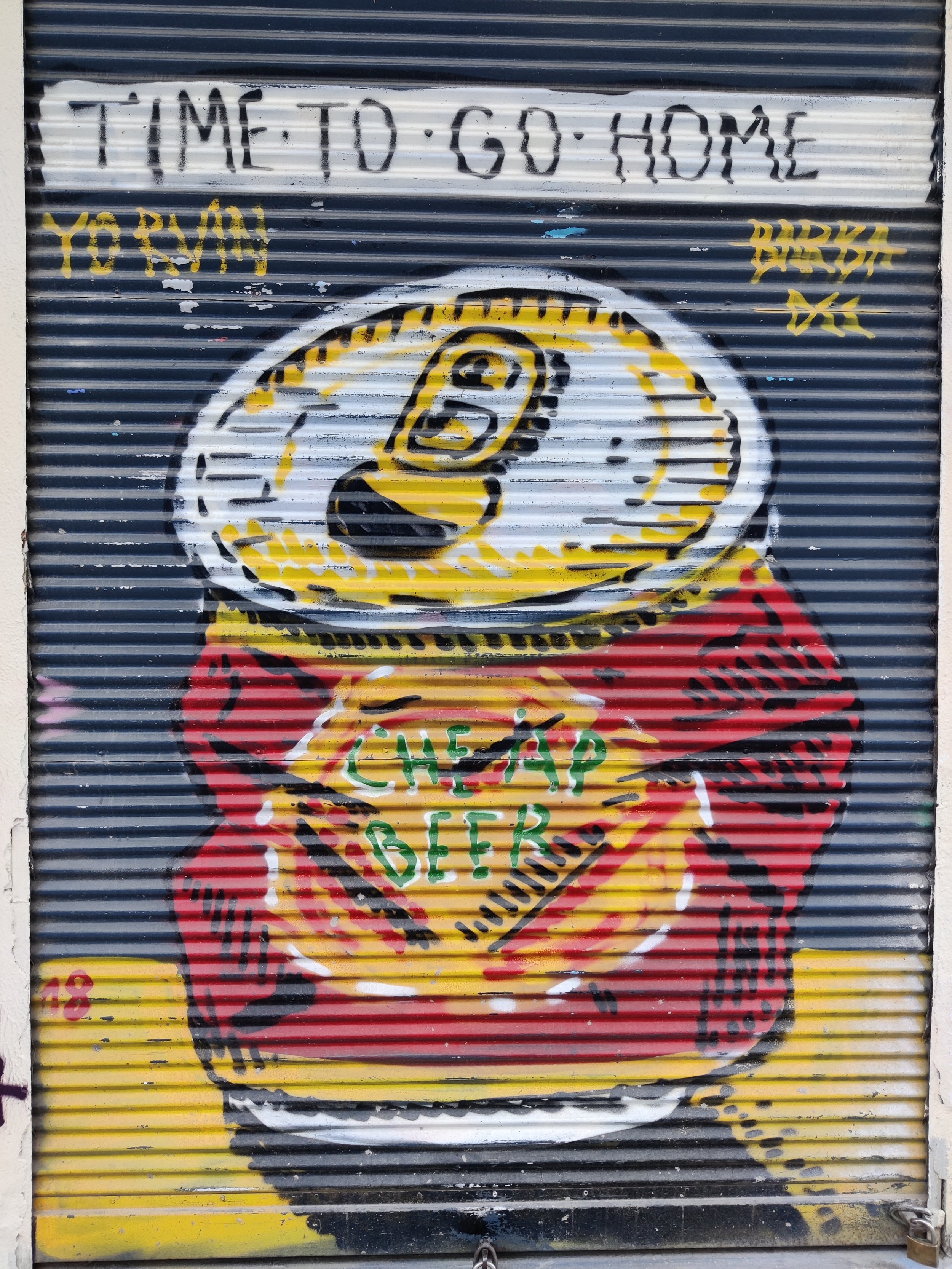

Korinthos
After galavanting around Athens for a few days, we hopped on a train for a short day trip to Korinthos aka Ancient Corinth—a significant village where the Apostle Paul kicked it.
The Fam, 2004
After a little Googling we decided to spend a couple nights on Aegina, a quaint little island an hour out of Athens. To our joy, some grad-school friends joined us for a few days bumming around. When we docked, I immediately remembered this iconic church and our family photo.
Aegina, Saronic Islands
From there we hopped a ferry to the Cyclades, a handful of islands East of Athens.
Most folks know about the instagramably views of Mykonos but not about the 600+ churches on this island. Turns out, this island is very small and pretty boring unless you like to party on yachts. It’s also insanely windy as evidenced from all our pictures. Thanks to a Greek ferry strike, we had plenty of time to drive the winding roads and eat a few more Greek salads drizzled perfectly with olive oil. We also popped over to Delos “Where Light Was Born”--perhaps one of the most intact and untouched archeological sites in all of Greece.
Our favorite stop of the trip was actually the shortest, the port of Tinos. After dropping our backpacks at the AirBnb and testing out grandma’s cherry liquor, we wandered through charming downtown. As we made our way towards the center, I glanced down main street and noticed a type of bike lane covered in green carpet. It felt important and like a normal Birkenstocks-clad person shouldn’t be stepping on. But we soon realized this was the road leading to the Church of Panagia Megalochari which it turns out everyone, who considers themselves a dedicated Greek Orthodox believer, makes a pilgrimage to. As a show of faith, you can buy a 6 foot tall candle to light inside the sanctuary.
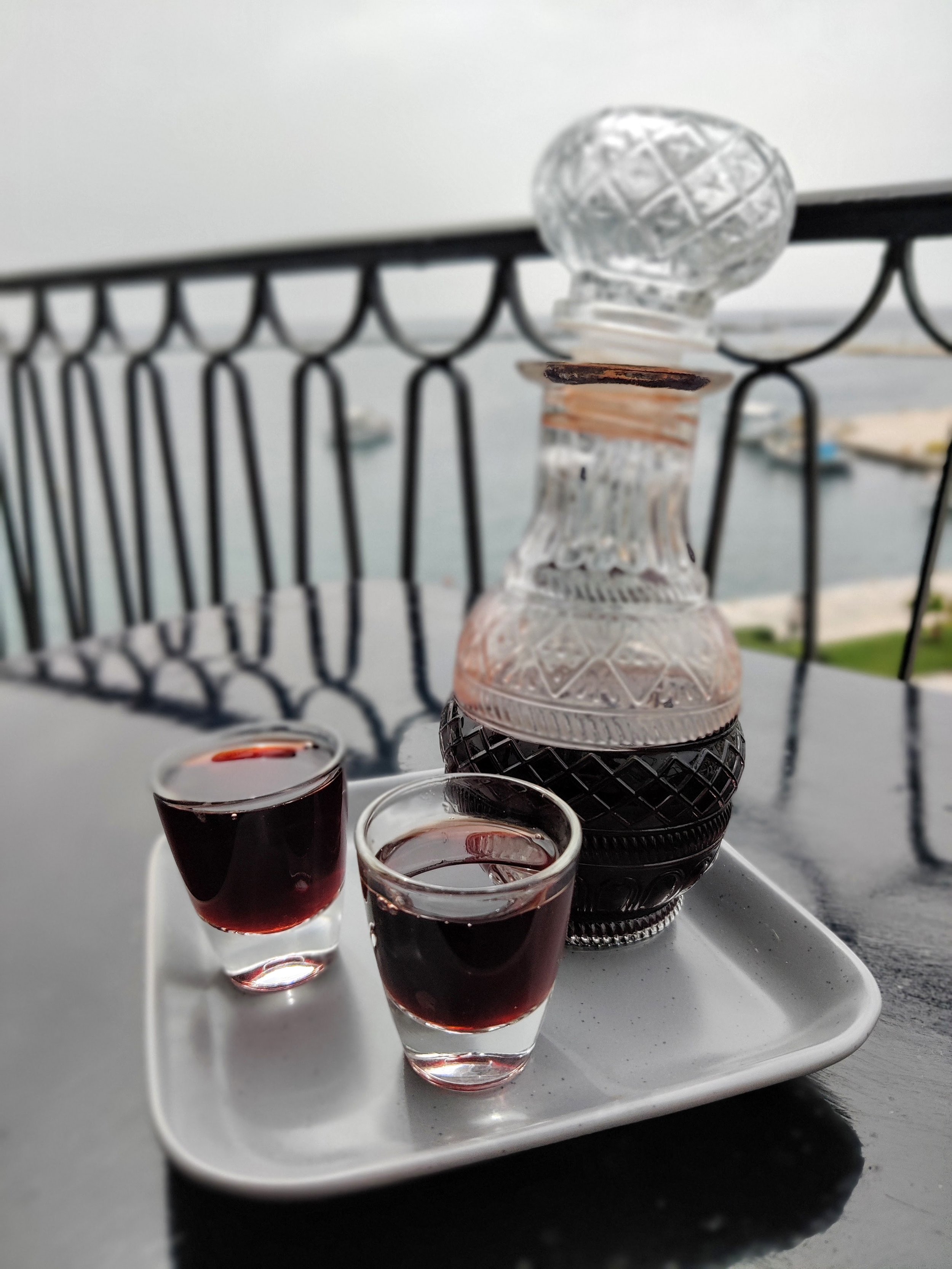
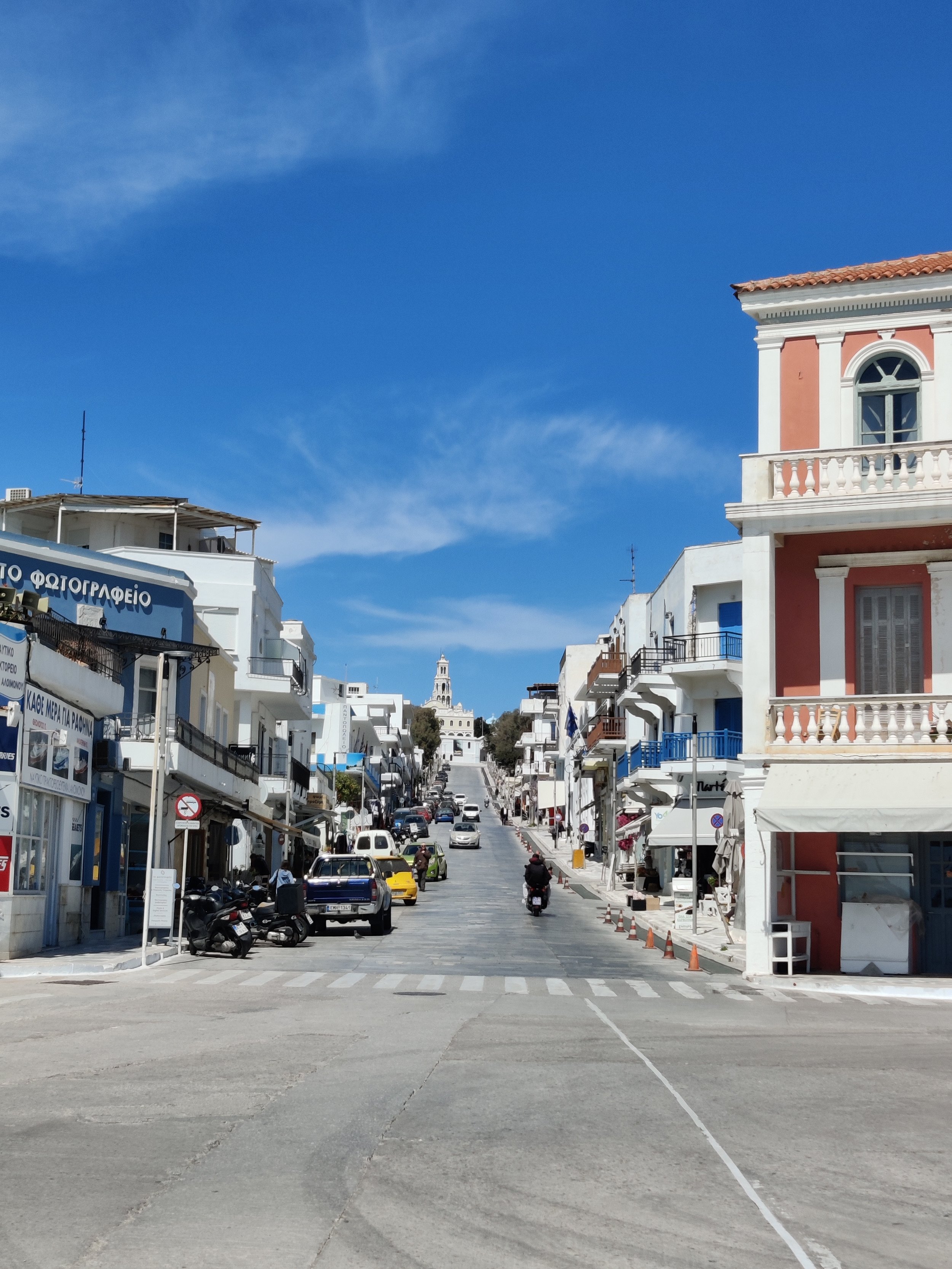
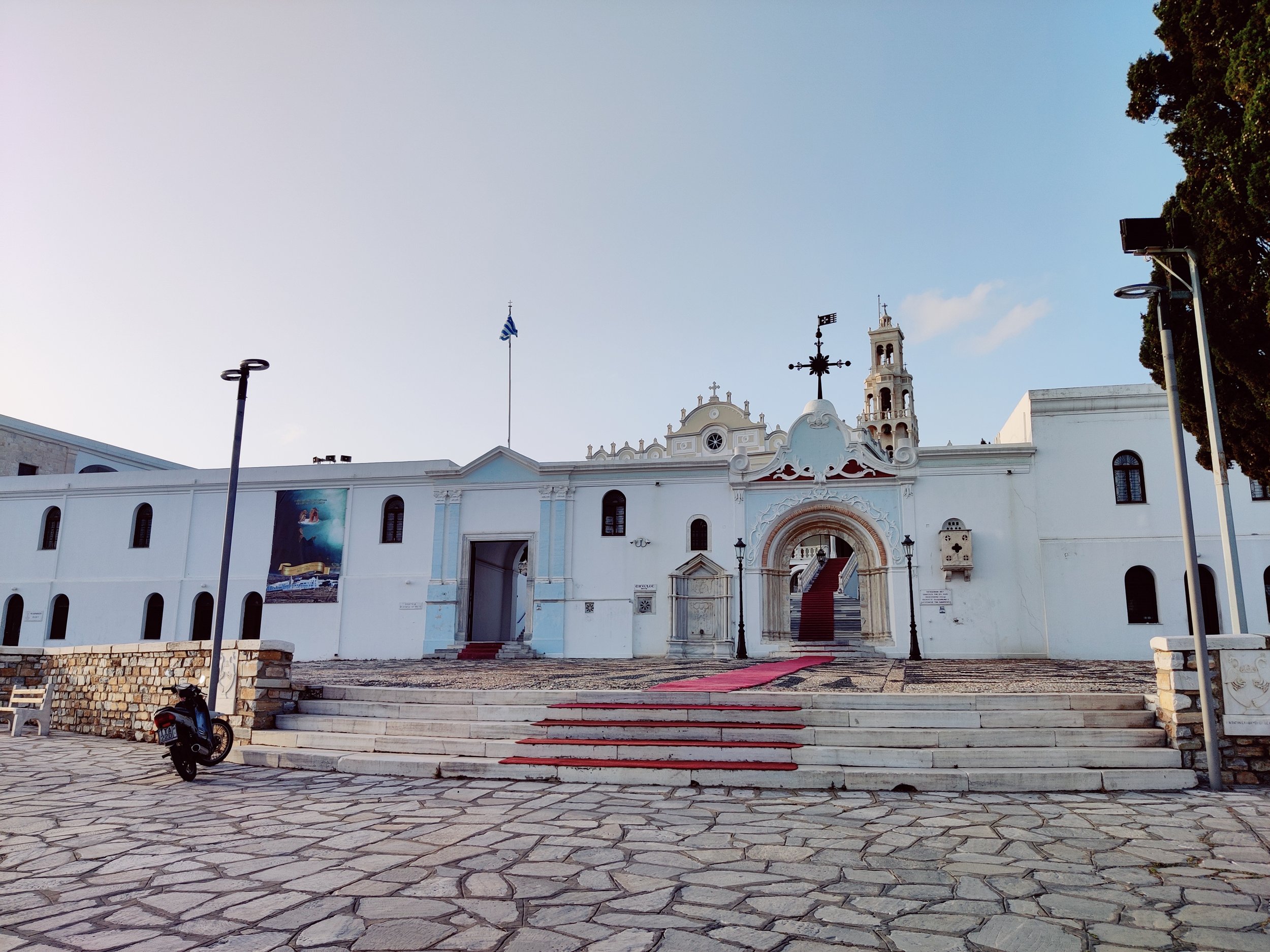

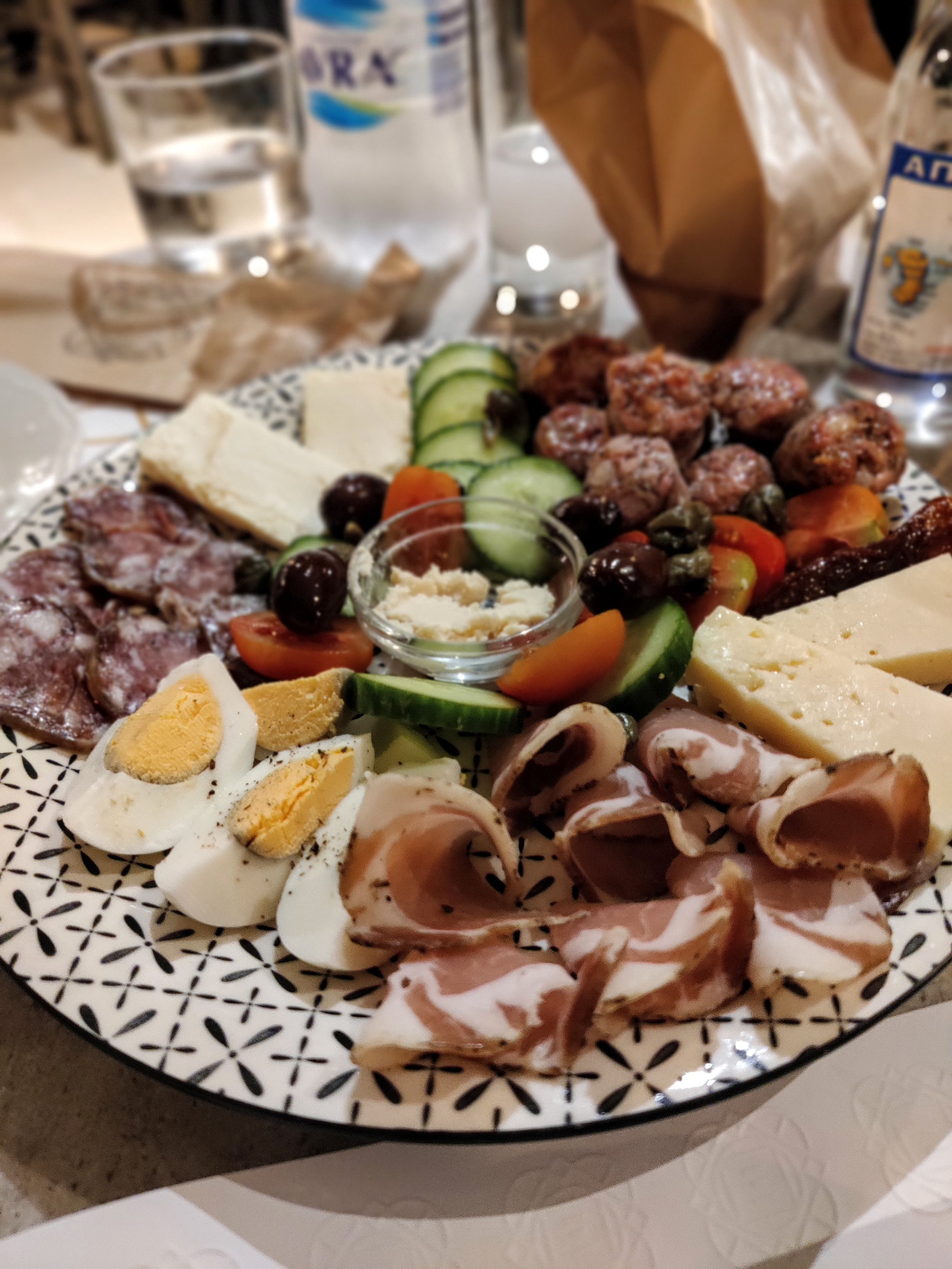

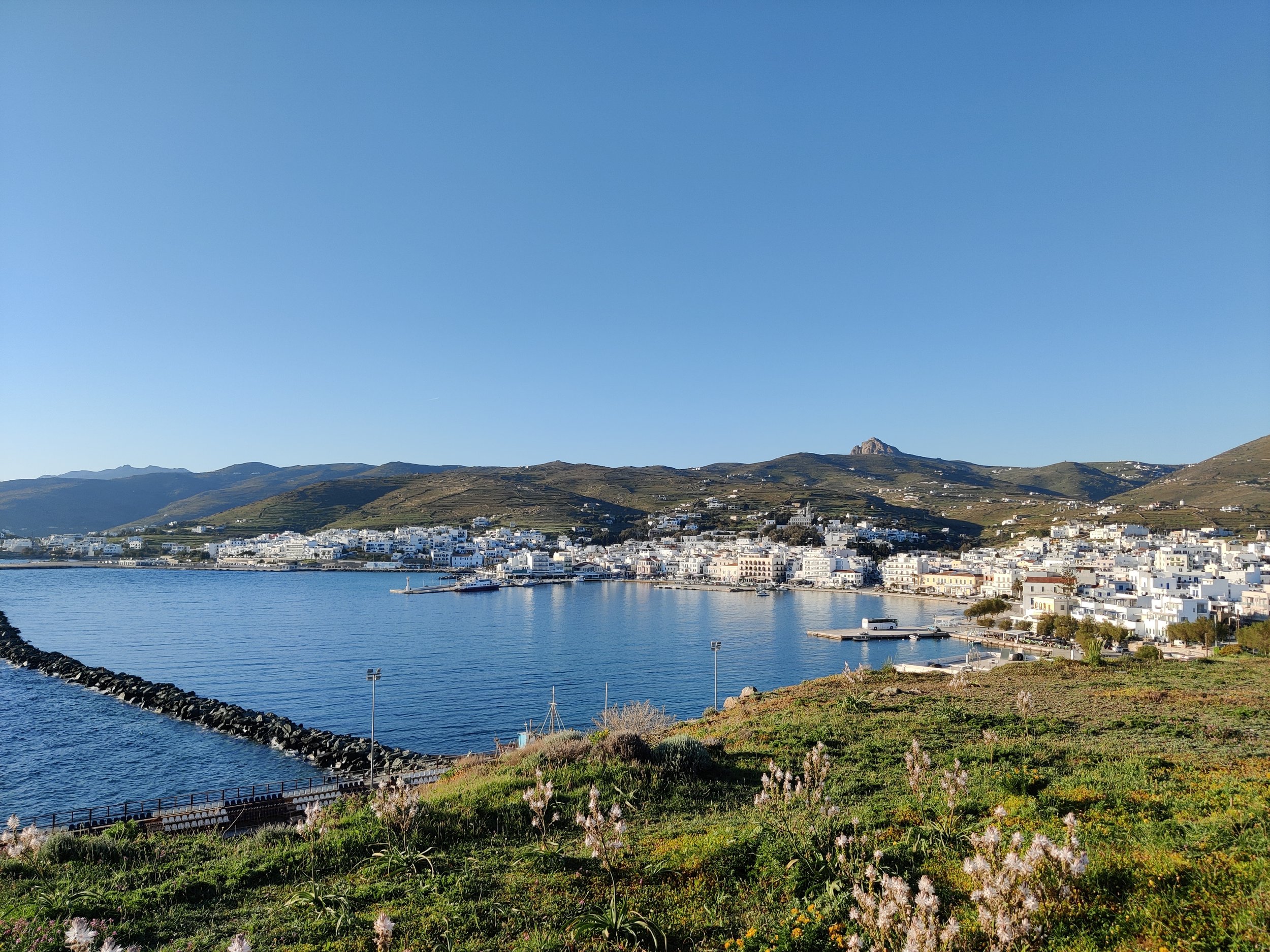
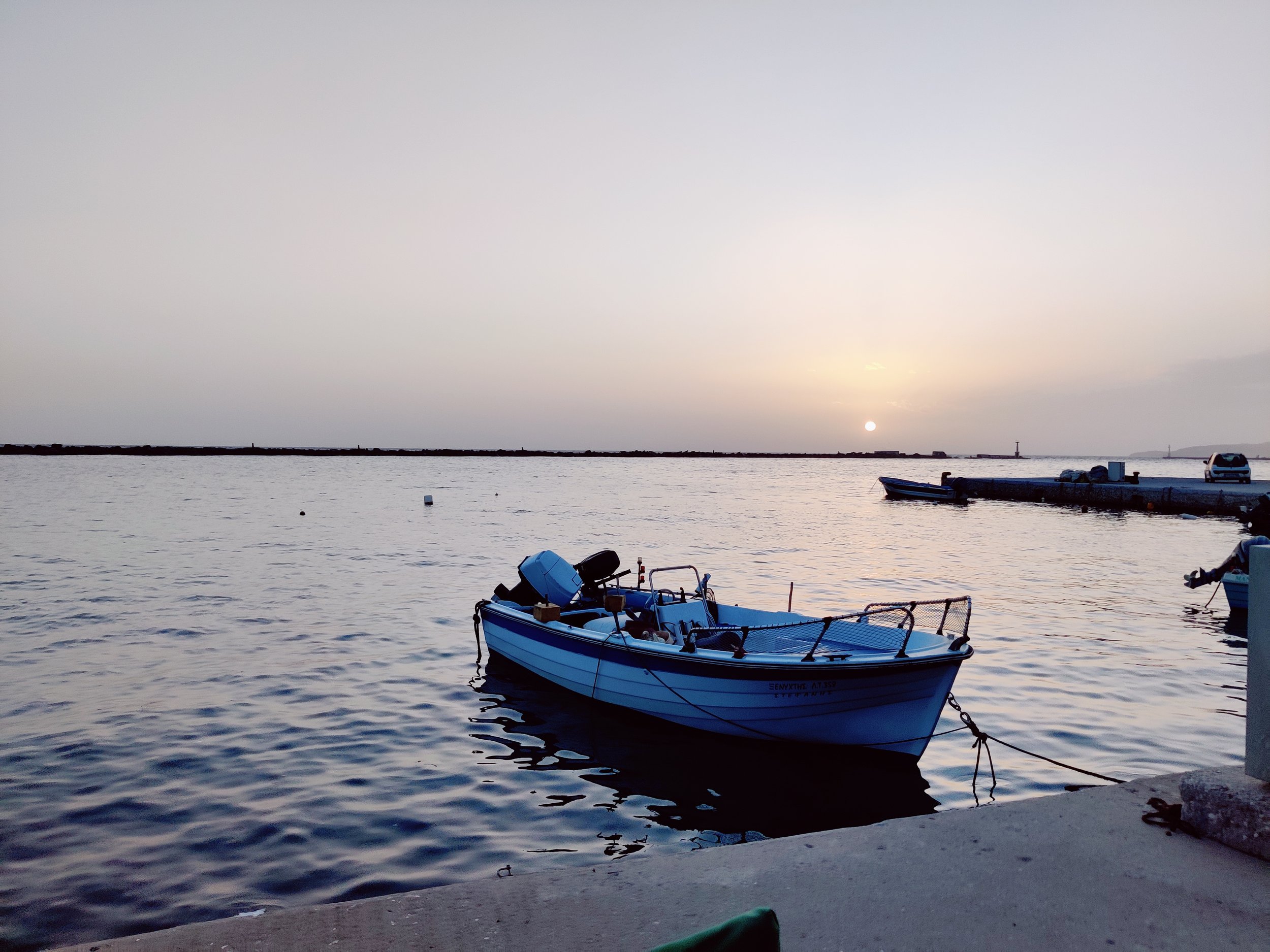
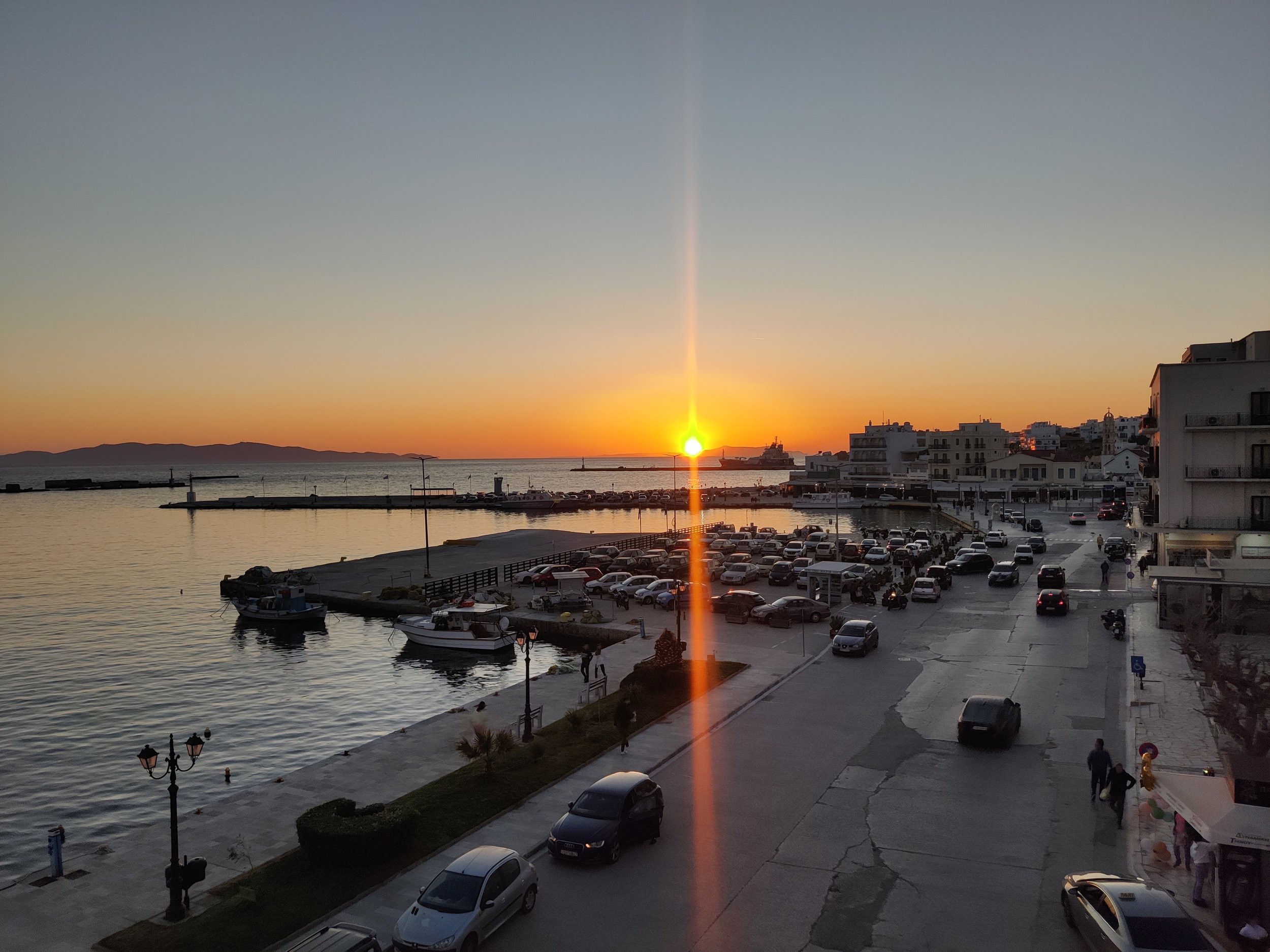
From getting lost in gritty Athenian alleyways, visualizing the birth of democracy in the Agora, drinking another .5 liter of house wine, or witnessing the power of organized labour strikes, our ten days in Greece flew by. Maybe next time we’ll get an Anthony Bourdain tattoo that says "Be a traveler not a tourist".
From Dams to Dumplings
School years are cyclical, even remotely. You begin the year on an emotional high. But at some point and rather predictably, the buzz and newness wear off and everyone’s energy level dips a bit. The answer to this at our school is fall break. It’s like spring break, but ten weeks into the school year. Last year, we spent fall break in Istanbul, but thanks to the coronavirus (Ms. Rona, you really suck) like in our last post, we kept it domestic.
While our home emirate of Abu Dhabi is actually the largest emirate in the UAE, Dubai is by far the most densely populated (thanks to its popping metropolitan area) and it is home to not only a thriving city but some incredible natural sites. Hope plotted a perfect route via E11 to E102 which eventually dropped us down into the town of Hatta, situated in the Al Hajar mountains, just two minutes from the Omani boarder.
Whenever we go on a road trip, we have a habit of listening to audiobooks or extended podcast series. This summer we drove up and down the Puget Sound listening to Slow Burn: David Duke from Slate. The sweet spot is an engaging narrator and something that blends levity and social commentary (yes, we’re nerds). This go-round, we downloaded Eddie Huang’s Double Cup Love which perfectly filled our 5 hours of expected roundtrip drive time.
So we packed our roller bags (and yes, Hope did bring the kitchen sink because--why not when you aren’t limited to kg and overweight baggage charges) and hopped back in the Micra. As we rolled along, high rises soon gave way to sand. One of our favorite things about driving in the UAE is the stark contrast between the highly modern freeway system that divides the desert. The contrasts are wild. One moment, high rises, ten minutes later--camels!
En Route
Because Nate loves dams but hates research, I meticulously planned our route to Hatta to stop along 3 of the 114 dams in the UAE. What I did not anticipate was the fact that there might not actually be water in many of the reservoirs at the moment. Thus, my surprise when we found ourselves off-roading in our subcompact across a rocky dirt road to what Google declared a “tourist” site only to discover wandering camels and some palm trees.
Hatta
Al Hajar mountain range
After winding our way through the mountains, we dropped into the unassuming town of Hatta--a popular destination for domestic tourists. It reminded us of Moab, the town outside of Canyonlands National Park. Hatta offers an opportunity to camp, hike or enjoy water activities at Hatta Dam. For a town with a population of only 12,000, Hatta’s food scene is popping. From Syrian and burgers to Italian food, you can always find something delicious to eat.
Still feeling like 95F was a dash too hot for a hike we opted to drive around town noting the traditional-style grocery stores, a cultural heritage site, several beautiful mosques, and a Honey Bee Discovery Center.
As the temperature dropped, we climbed up a small hill at Fort Hatta and basked in that golden hour lighting.
Usually Nate hates water based activities, but on the last day I sweet-talked him into renting a shaky paddle-boat. He struggled because the seats were too close to the pedals, driving his knees nearly under his chin. We peddled our way across the reservoir, mostly laughing and secretly grateful for the lifeguards patrolling in their motor boats.
Dubai
Burj Al Arab
Unlike some places (where we may be citizens), the Emiratis take this Covid thing very seriously. In order to re-enter Abu Dhabi we needed a negative PCR test within the last 48 hours. So we went for a test and some quality time in Dubai. We stayed on the Palm Jumeirah, not realizing its massive size and how far away it actually is from everything else in the city. Think about that time you stayed at the Hard Rock Hotel in Vegas and realized you had a 25 min cab ride to get onto the strip.
The drive inland did not put a damper on our culinary exploits. The Secret Garden for a late lunch, Pai Thai for dinner, Puerto 99 for brunch, and eventually Hope crying over mutton xiaolong bao at Din Tai Fung.
Needless to say, we felt lucky to escape the grind for a few days, and grateful to live in a country with excellent healthcare and public health programs. Things aren’t normal—there is still a virus, but government competence and the levels of testing give us a modicum of confidence. It’s not life as usual, but we feel safe here and that’s priceless.
160kph In a Nissan Micra
We’re travelers by nature (technically, it is by nurture -- no one is born loving to fly economy class across the Atlantic, but “by nature” reads better). This is one of the factors that drove us to try teaching overseas. The value proposition with teaching overseas is that you are away from your family, your loved ones, and your comfort zone and in exchange you get to travel and experience life somewhere else. But that equation is currently unbalanced. Thanks to Covid our travel opportunities have been limited since March. You can exit the UAE, but you have to quarantine (no, like a real quarantine, not the “CDC recommends you self isolate” non-sense) for fourteen days upon re-entry. So a weekend trip across the Oman border, for example, will earn you 14 days of quarantine and at least two giant Q-tips shoved into your frontal lobe. We realize these are bourgeois complaints, but that makes them no less real.
So instead of looking outward for international adventure, we’ve turned our sights domestically. We are embracing the opportunities right here at “home.”
This weekend, after our first two days of in-person teaching since March (and getting the negative results from our bi-weekly Covid test), we took a 135km trip to Al Ain. Al Ain is the cultural heart of UAE. Much in the way that Guadalajara, home of mariachi, tequila, tortas ahogadas, etc., is the most “Mexican City,” Al Ain feels like the most “Emirati City” in UAE (no shade to Sharjah; we haven’t been there, yet). It felt freeing to be on the road, especially with the 160kph speed limit.
Since this was our third trip to the “garden city” (we’ve previously enjoyed wandering the Al Ain Oasis and the Al Ain Palace Museum, we focused on relaxing.
It felt good to unplug from work and most important of all it was good to see all of the CAMELS!!!
Did you know that a baby camel WEIGHS 36kg or 79lbs for those who can’t use the Metric system?!!!!
On the way out of town, we stopped by Al-Fanar to enjoy some Emirati cuisine. Pictured below: meat samboosas, thereed laham and machboos laham. Yes, “meat” means lamb and we’ve come to LOVE lamb.
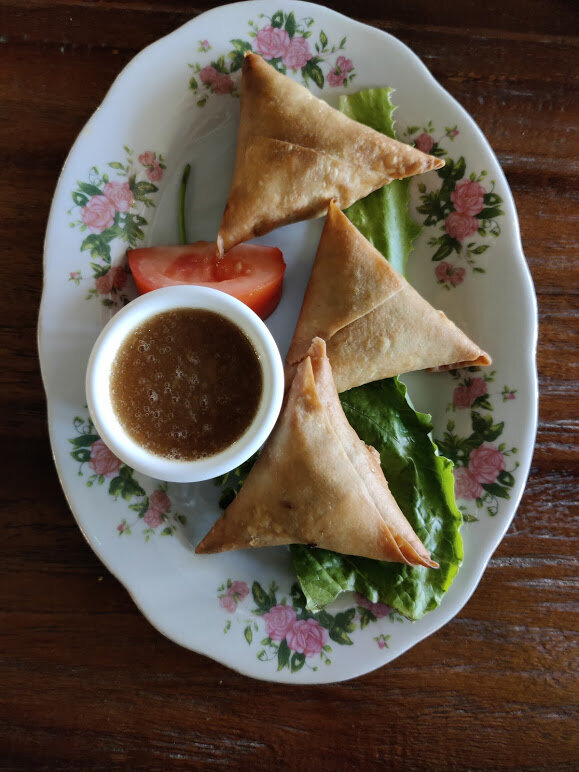



Living through the Rona Outbreak, 7500 Miles from Home — An Irregular Edition of Nerd Farmer Podcast
Originally posted on Nerd Farmer Podcast by Nate
April 7, 2020
Man, we really picked a helluva year to move twelve timezones away…
I am amazed watching the various efforts to confront Covid-19 in the US. In particular, I am blown away watching people I care about on social media forced to jerry-rig masks, after being told for months by the CDC that they weren’t necessary or helpful. The toilet paper shortages, the lack of PPE for medical professionals, the inability of the President to articulate a coherent strategy about any it…
It’s also really jarring to look homeward in contrast to what we’re seeing from leaders elsewhere, who are having more success combatting the virus (shouts to NZ, South Korea, and Singapore). The dire situation in the US could and should have been prevented. This irregular episode is a pandemic-centric conversation with IWL host (and my wife) Hope Bowling.
By the way, don’t worry about us. We are safe here in Abu Dhabi but we definitely are anxious about friends and family back home. So we decided to record some personal observations, takes, and reflections from here.
Stay safe and stay home, if you can.
Here’s a link to the conversation…
Jambo, Wanna Go to Kenya?
Like most people our age, the mention of Kenya evokes images of The Lion King, wistfulness that Barack Obama is no longer president, and the sweet refrain of the “jambo song.” Little did we know those three elements would characterize our 7 days in the Tsavo region of Kenya.
The opportunity to chaperone a school-sanctioned trip fell into our laps unexpectedly. For the last two years, our school has offered Viper Ventures— curated experiences that give students an opportunity to travel abroad, serve a community, gain a life skills such as cooking or even dig into career options through a job shadow. Originally, we intended to stay local and supervise the cooking class or game design program. But when we learned we could chaperone together and didn’t have to be in charge, we couldn't resist.
3 adults, 27 teenagers. 2 travel days. 5 days in rural Kenya. Let’s GO!
The Journey
Our trip was organized by Camps International, a British agency that specializes in building global citizenship through service-oriented experiences, and coordinated by expedition leader, Amy, who’s infinite patience and expertise on avoiding sun-stroke was greatly appreciated.
Home Sweet Home
Camp Kenya is located in the Tsavo region roughly halfway between Nairobi and Mombasa. This was our base camp where we ate, slept, and fought beetles the size of a baby’s fist.
Goat Deworming & Elephant Deterrent Fencing
Day #1: On our first day we traversed the local community on a de-worming mission. The purpose of this process it to promote goat health which will impact the local farmers’ livelihood. We also built elephant deterrent fencing (cutting corrugated steel & creating strings of metal that make such a loud noise, elephants won’t trample a farmer’s garden.
Panoramic Hike
Day #2: A team of park rangers lead us up a neighboring mountain and nature preserve. For the Brits, it wasn’t even strenuous. For the rest of us, it required a few breaks and numerous bottles of water.
A Neighborhood School
Day #3: We spent the day learning about the Kenyan education system and helping build a nursery for next school year. Most of our students were unaccustomed to such physical labor involved.
Mama Mercy
Day #4: This day was centered on on learning more about the culture and traditions of the region. We spent half the day with Mama Mercy and the other half visiting a Maasai village.
This is Mama Mercy who is sharing her 25 years of community activism. From creating a micro-lending program for women-owned businesses when banks wouldn’t lend to women, to starting a co-op that trains women in beading & elephant dung paper-making then sells their crafts so they can support their daughters in school, Mama Mercy reminds us what it means to live your life for others.
Going on Safari
Day #5: On our last day, we went to Tsavo East National Park for a safari. Despite the gloomy weather, we saw over 21 different animals.
Dik diks, giraffes, monkeys (including baboons!), elephants (did you know these ones are usually red because they roll around in the dirt!?!), pumbas (yeah, that’s a warthog), maritobou stork, various species of eagles & ground birds, and antelopes (which we learned includes oryx, waterbucks, impalas & some others).
Our Reflections
One of our favorite moments was slapping freshly mixed cement onto a wall for the new nursery at a local school. We listened to a couple of students (it was likely one of their first brushes with manual labor) work their way through some realizations they were having about how schools get built and how hard construction is without modern industrial equipment. This is the power of travel. It pushes us beyond our comfort zones, learning new ways of living.
The ability to travel is a privilege and it is a privilege that we’ve had over the last decade, as a couple. Our travel has shaped our world-views and is a crucial element of who we are as a team. It has helped us be more empathetic to others and is why we see ourselves as a part of a larger global community.
